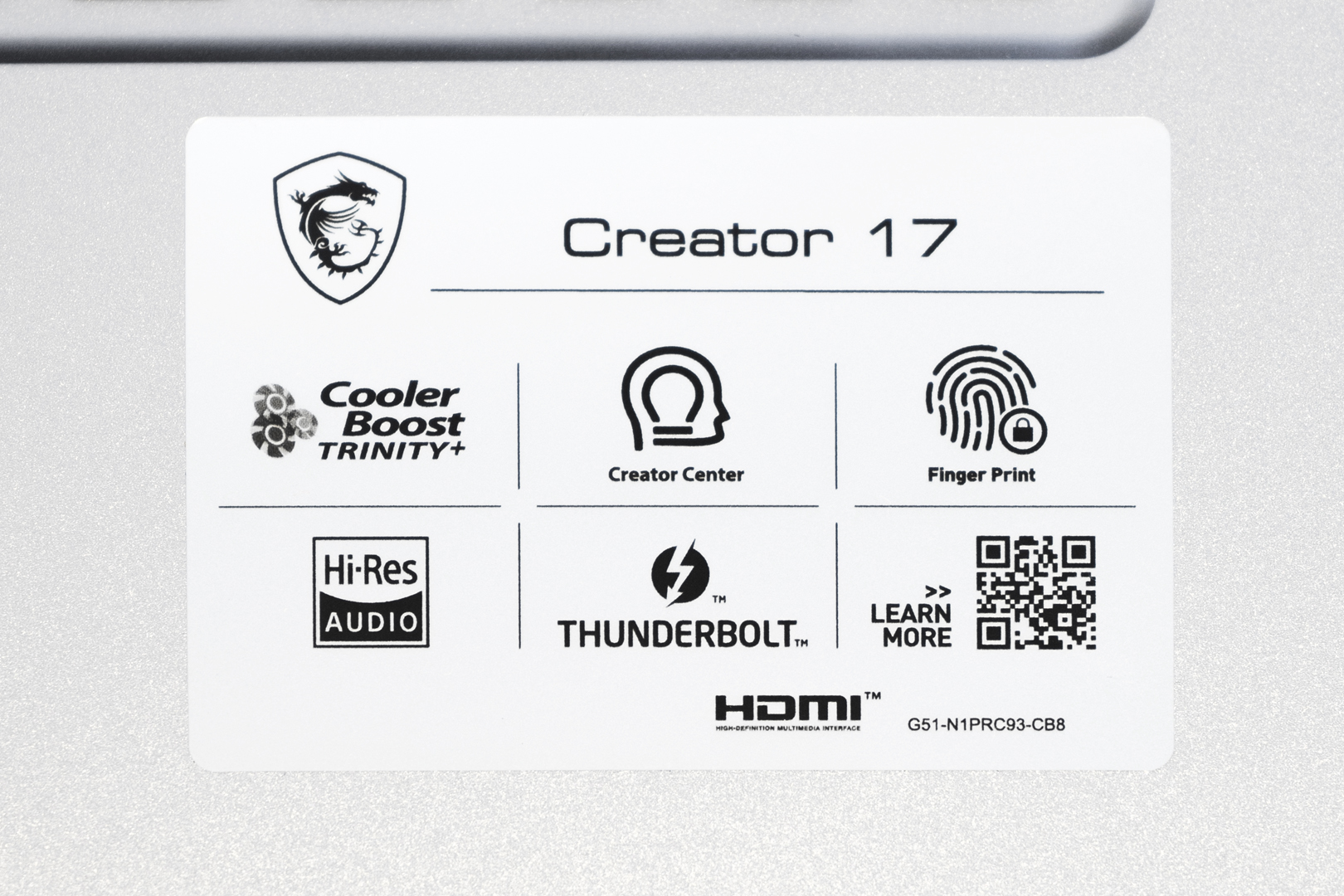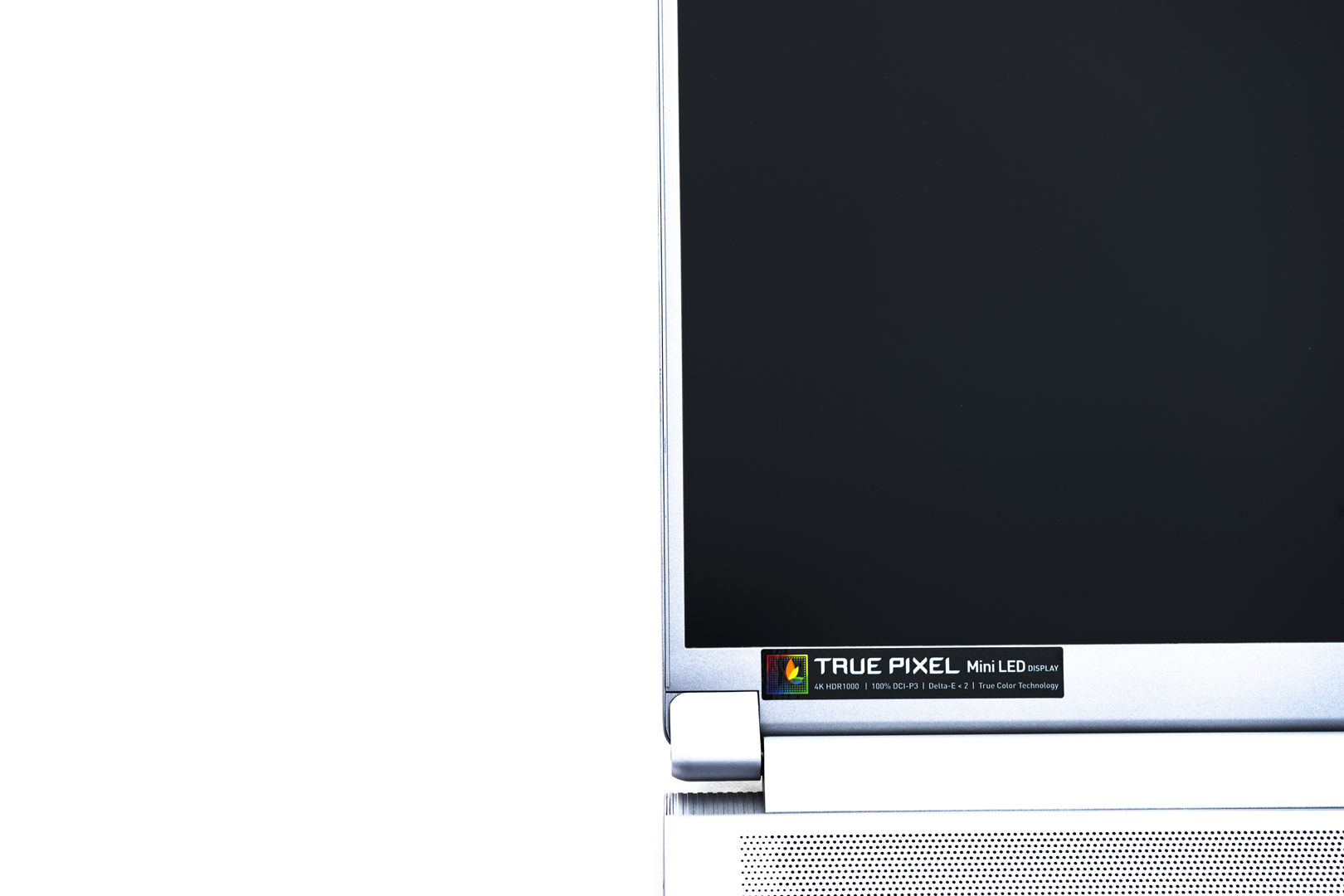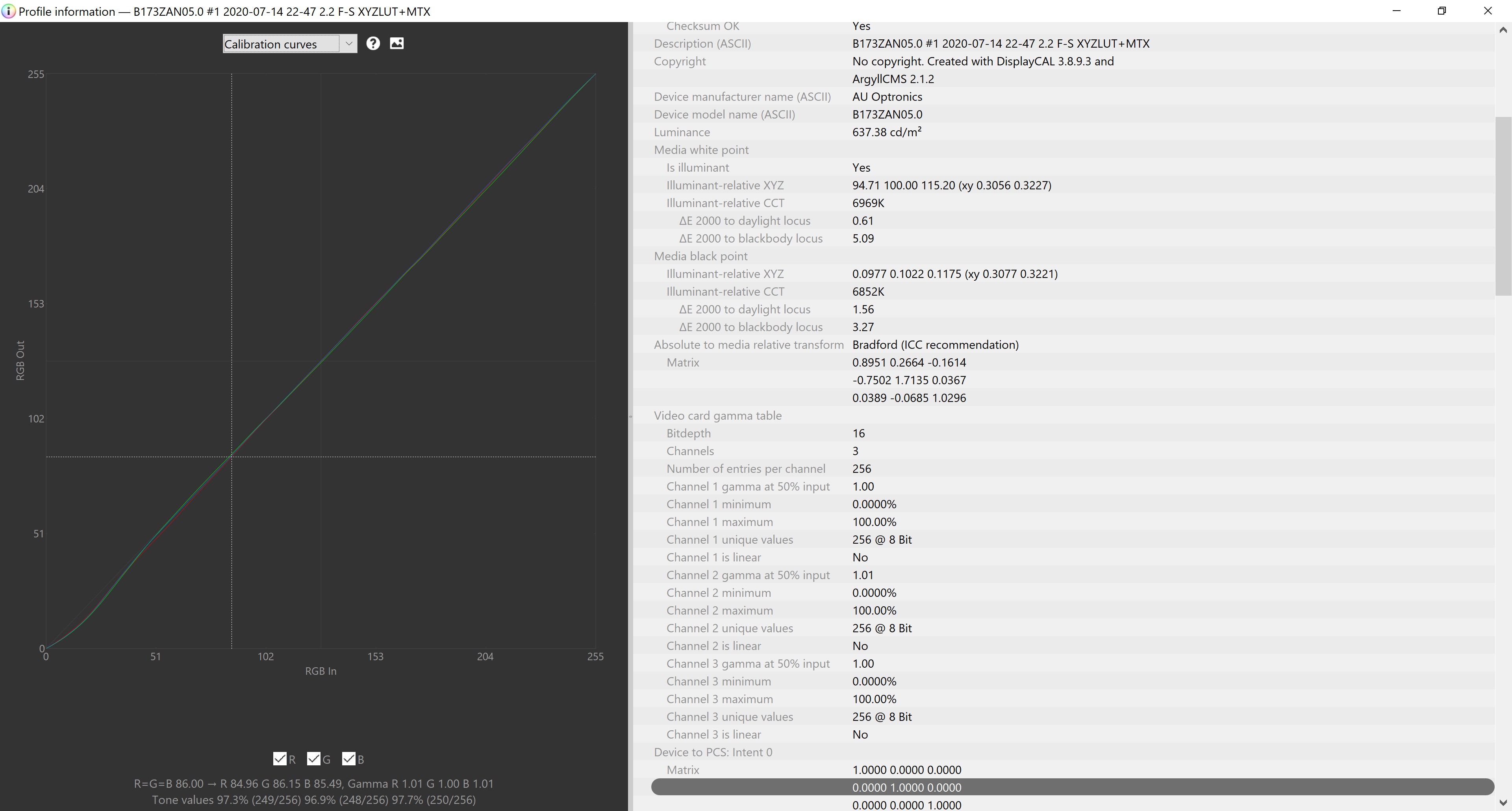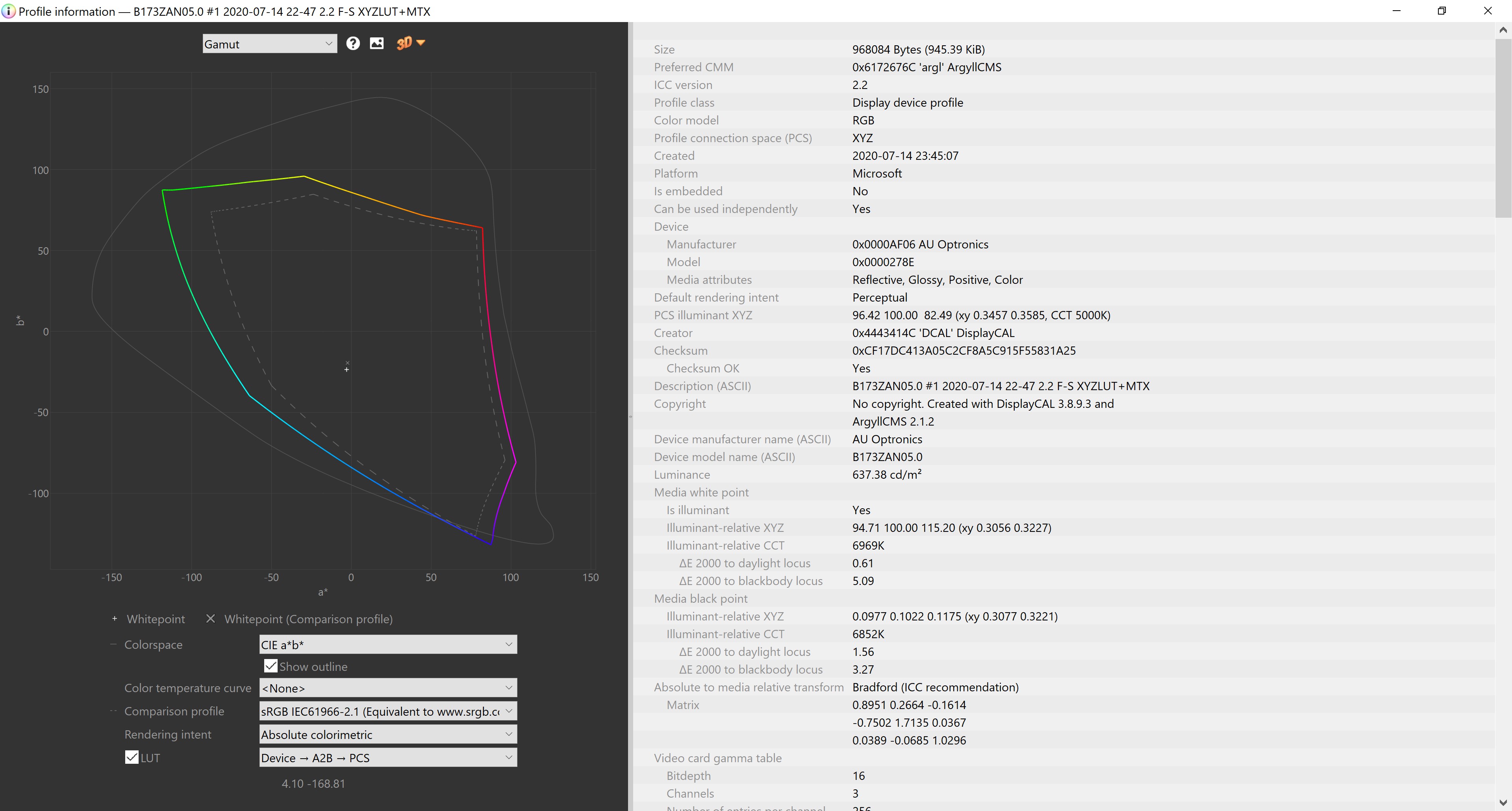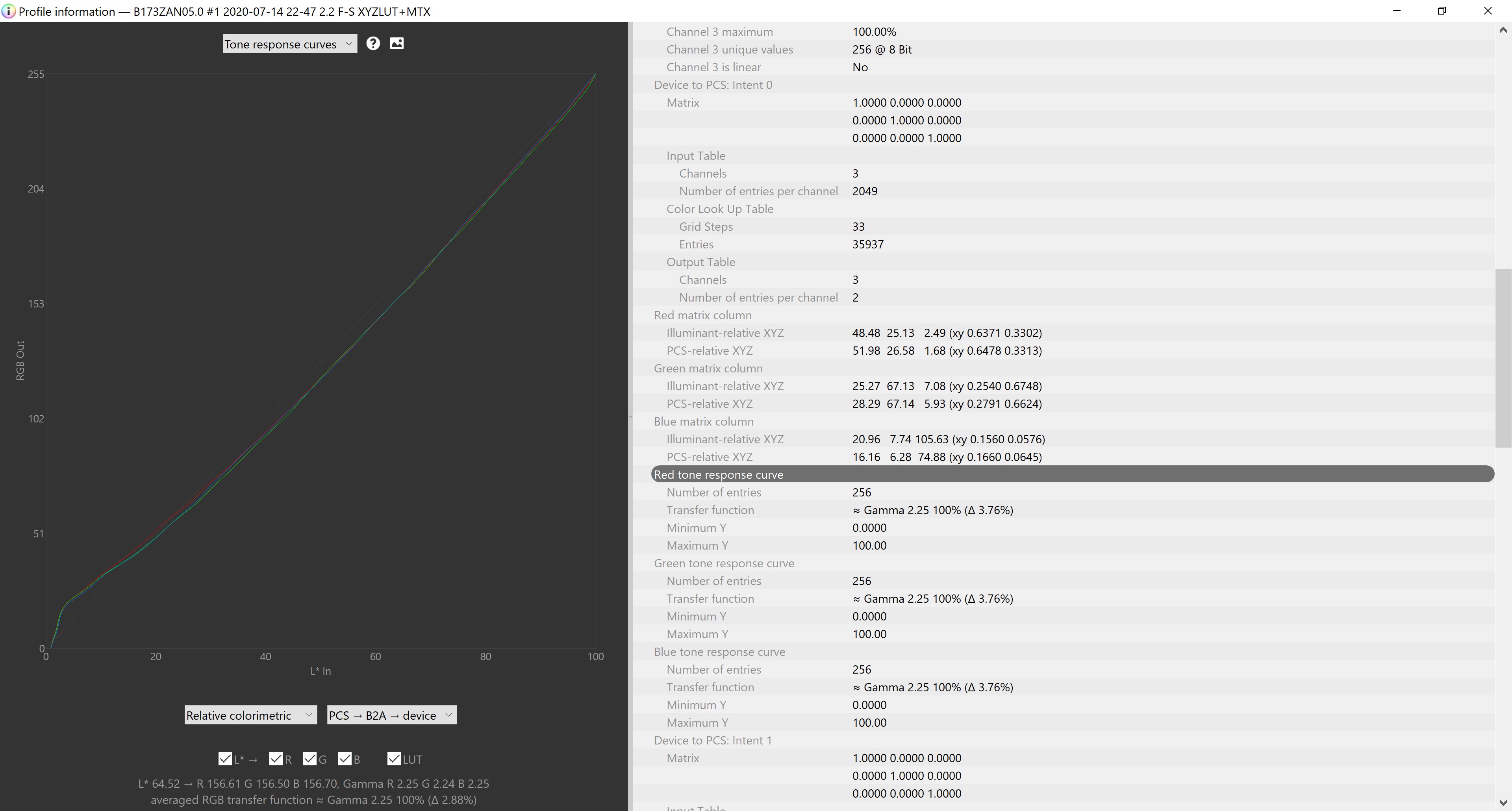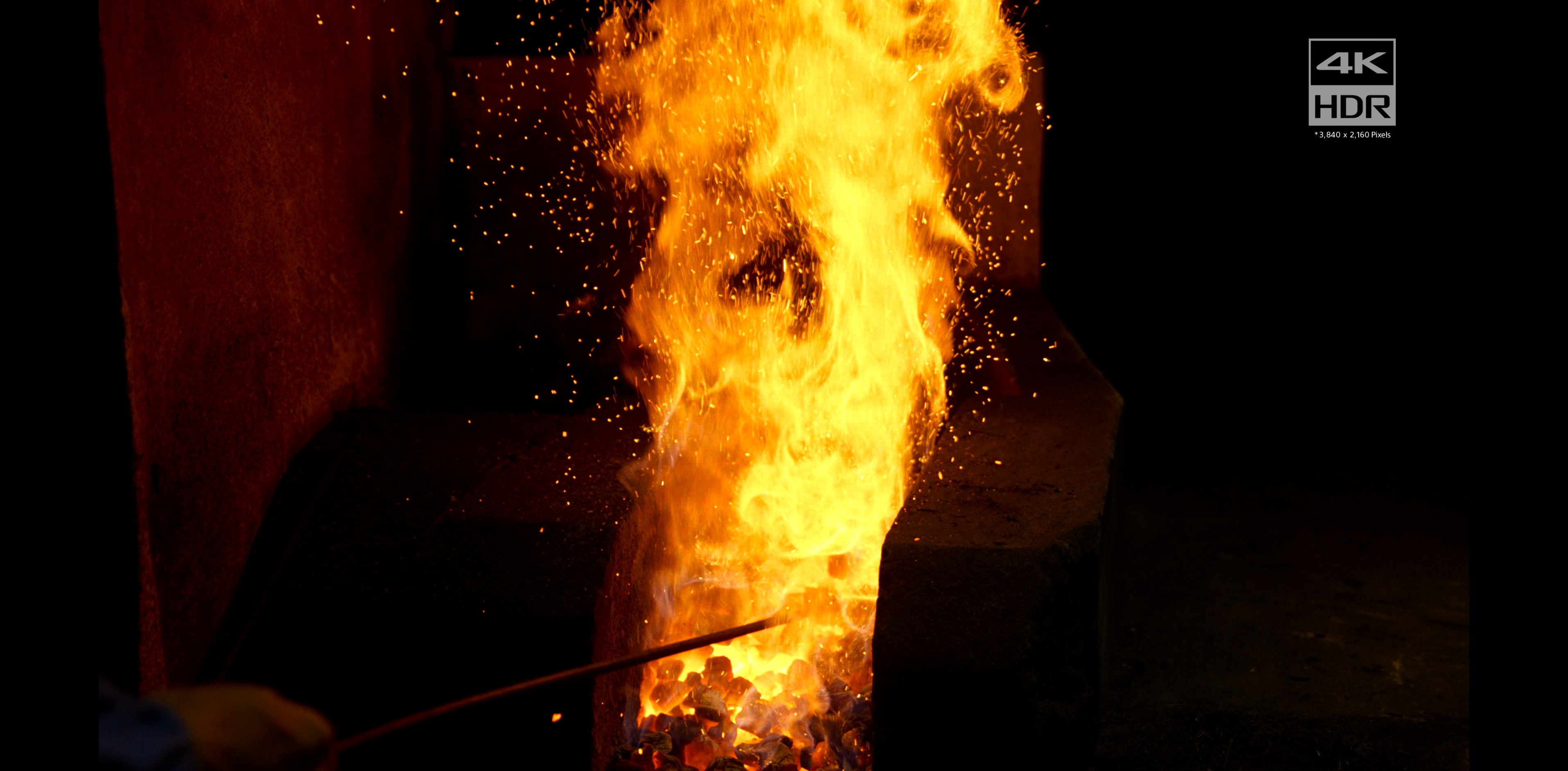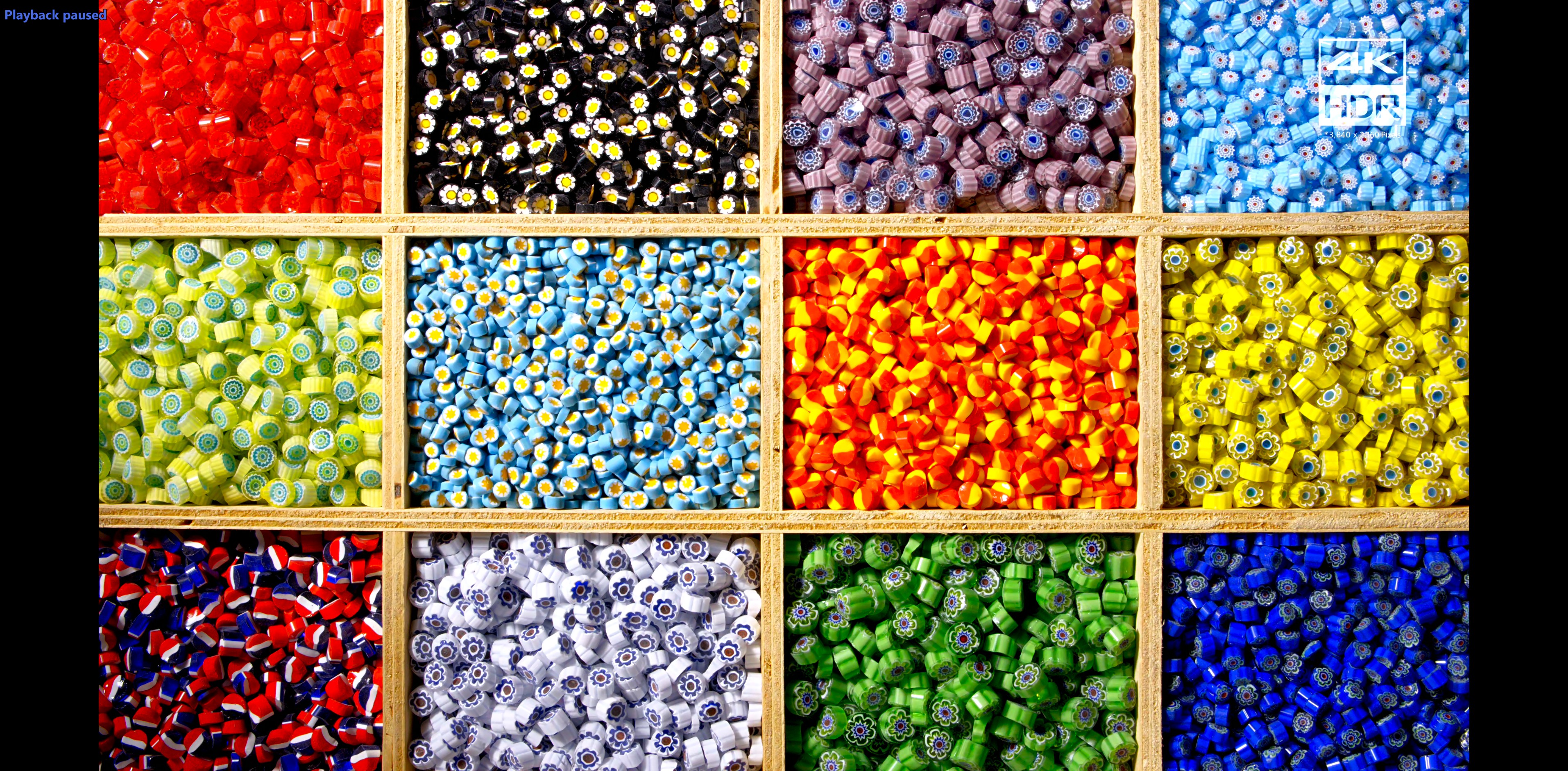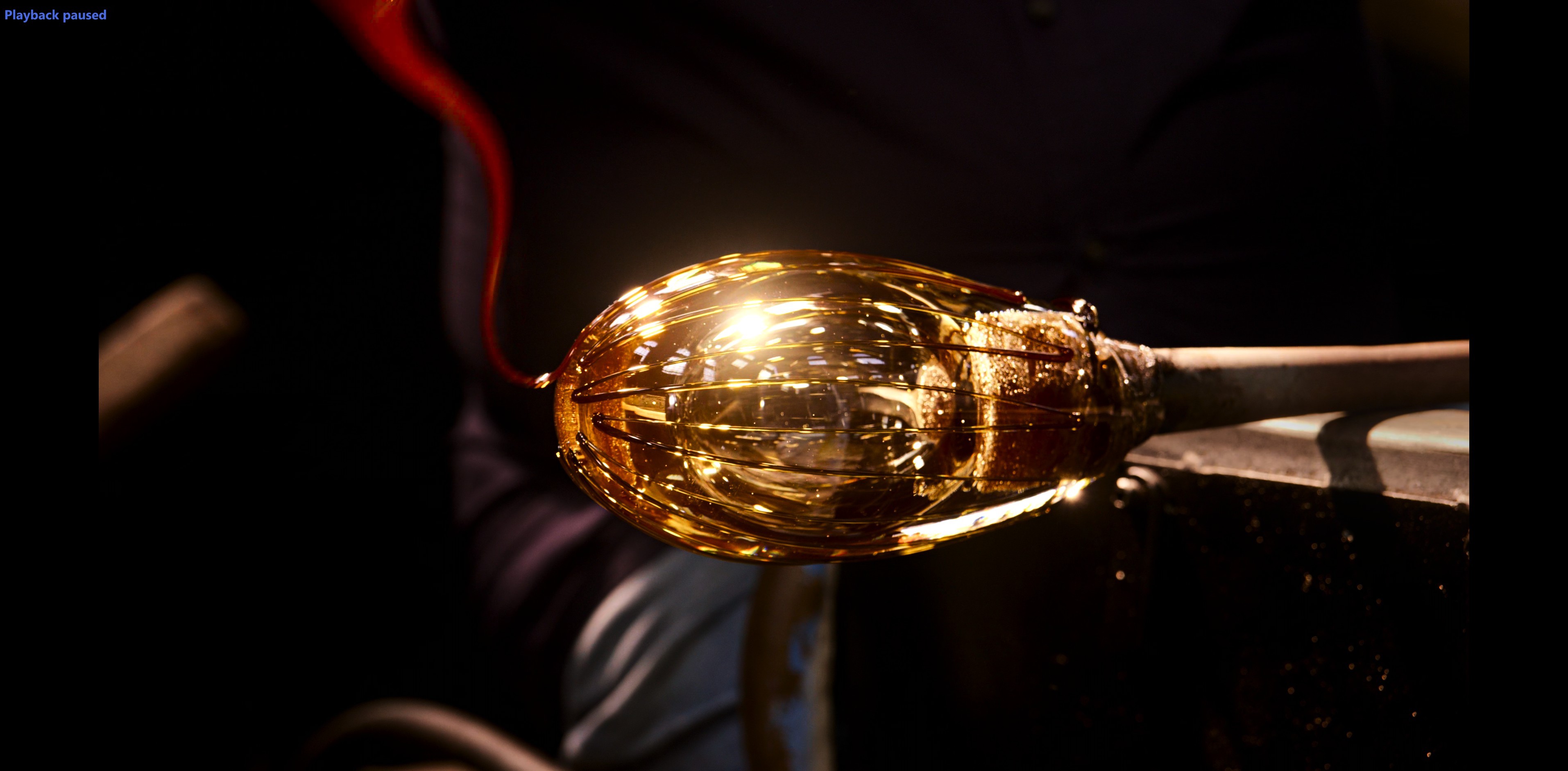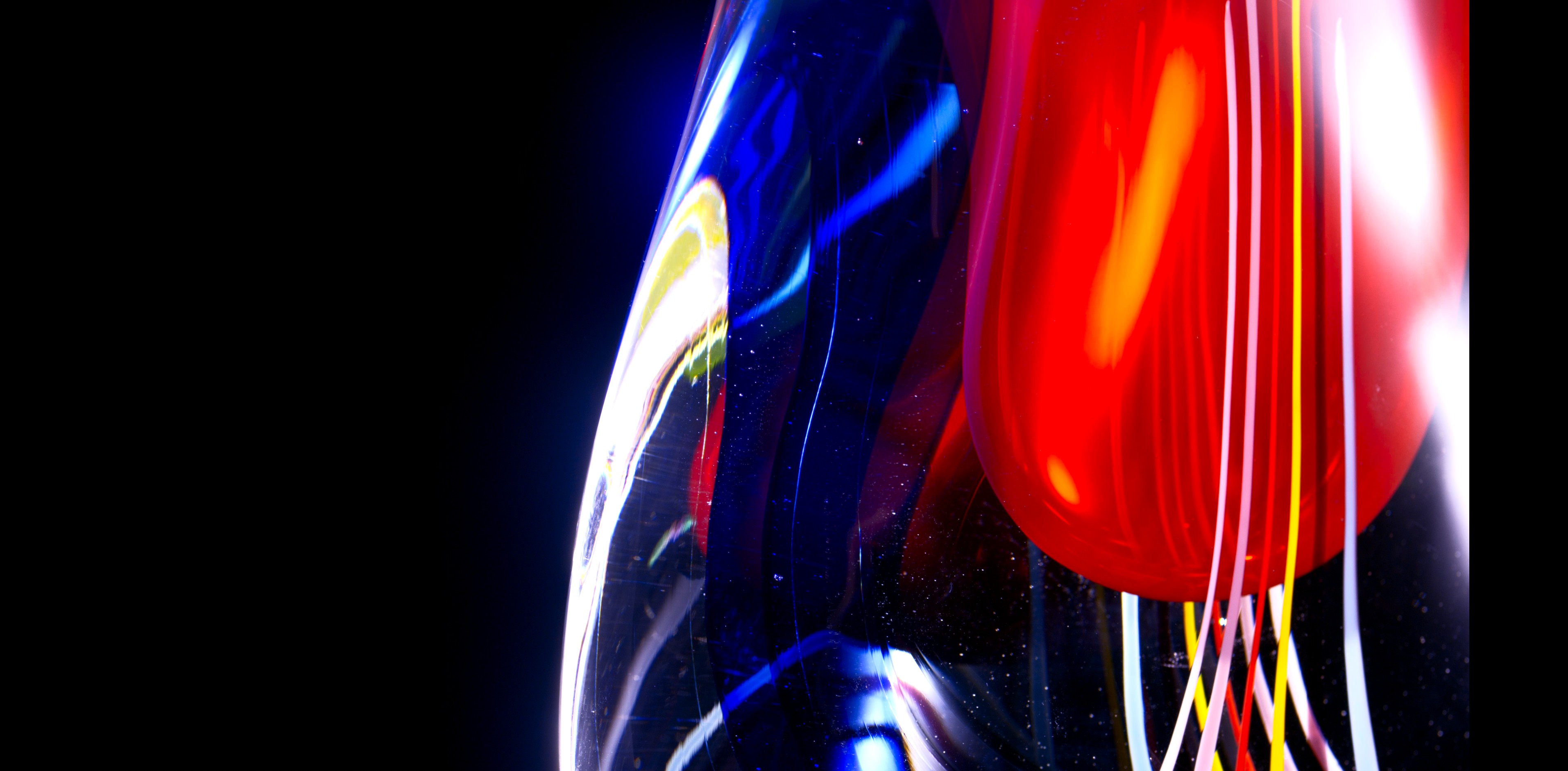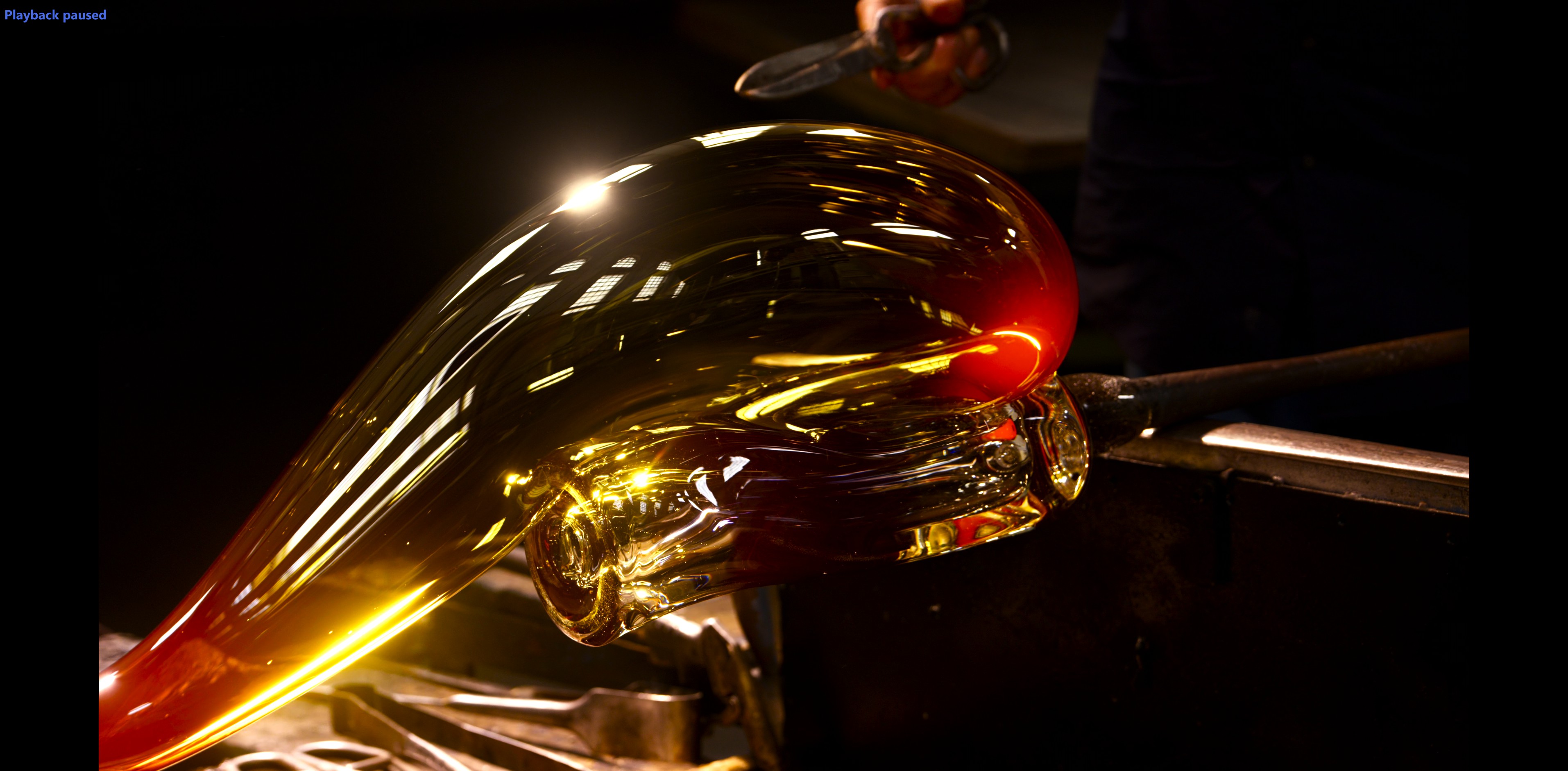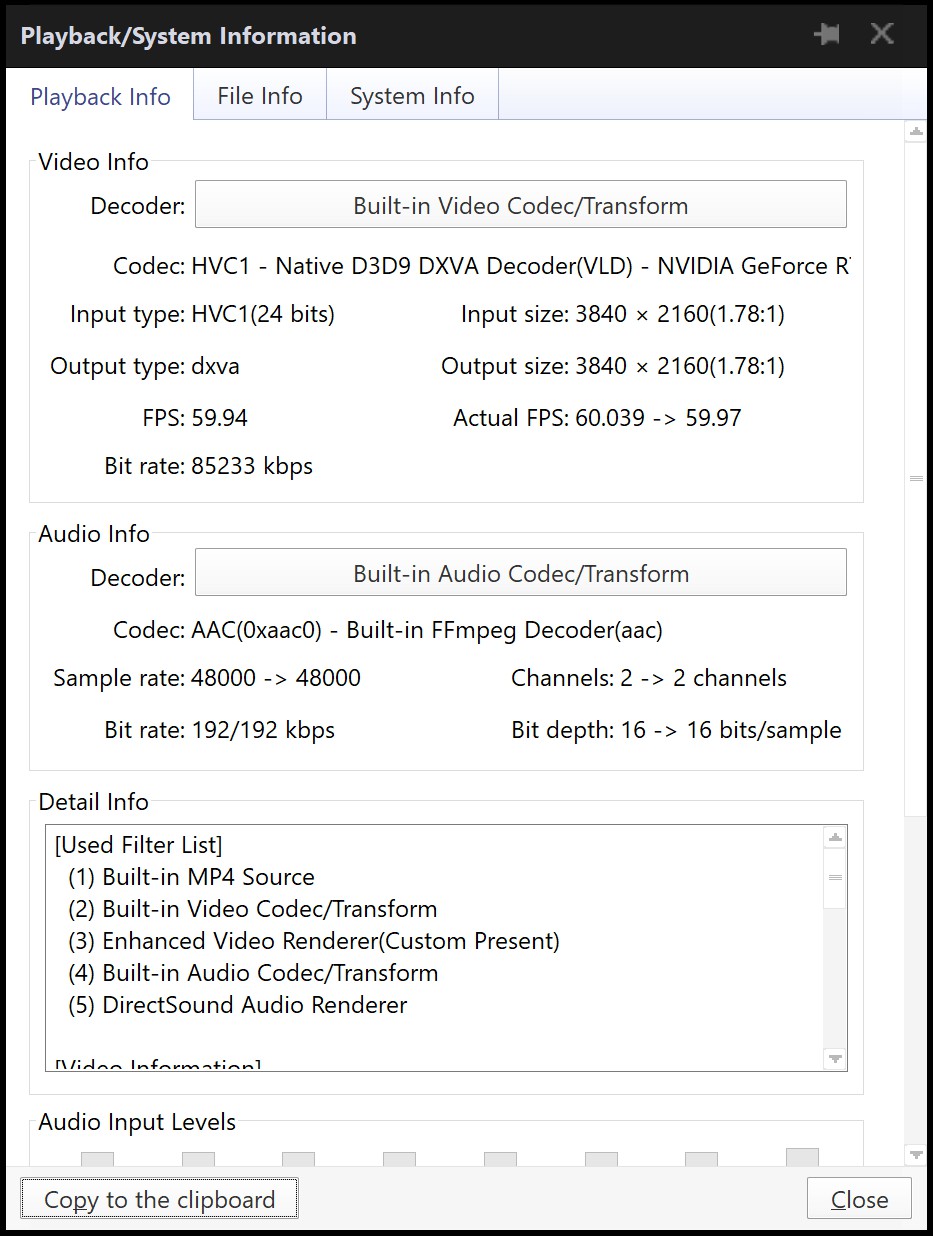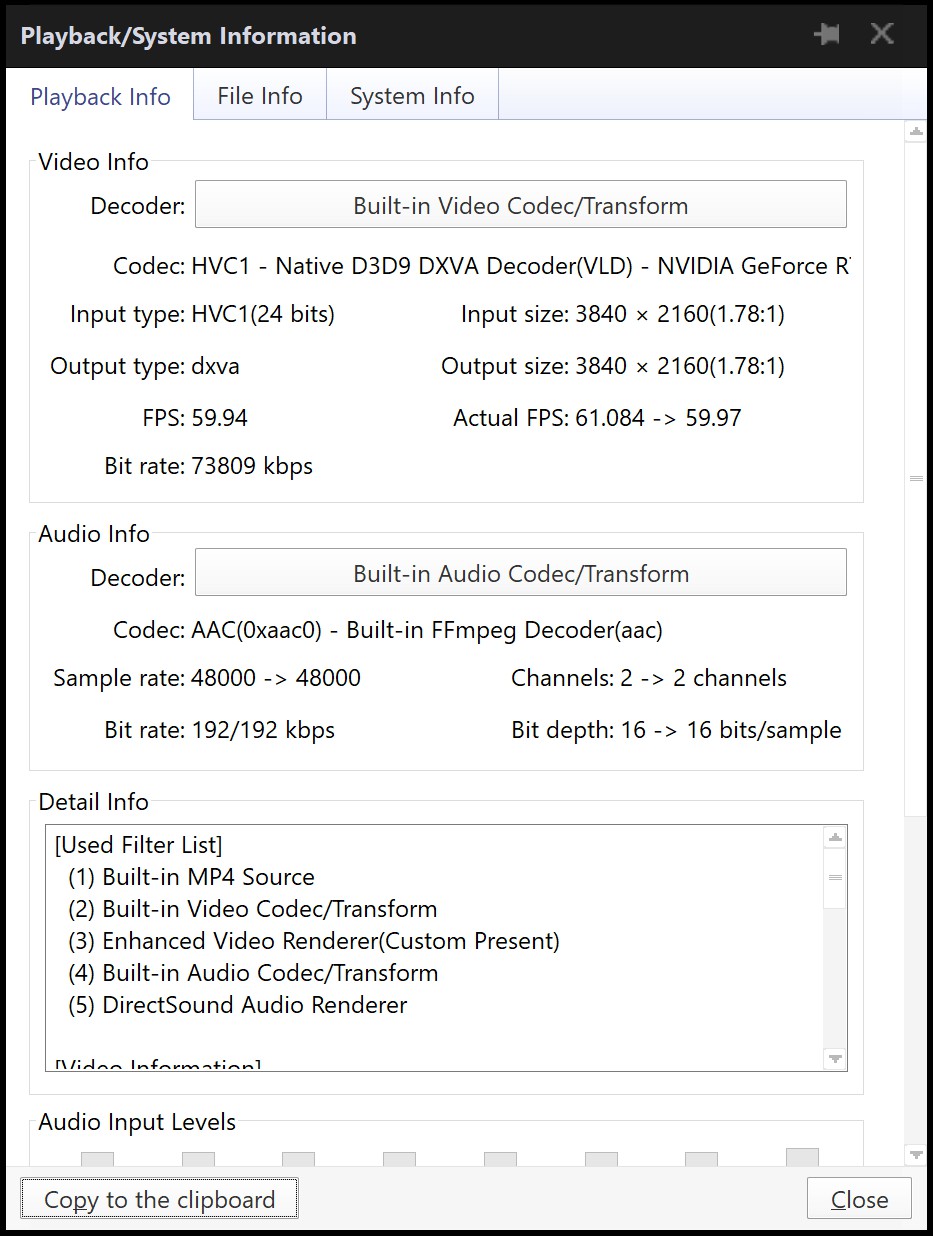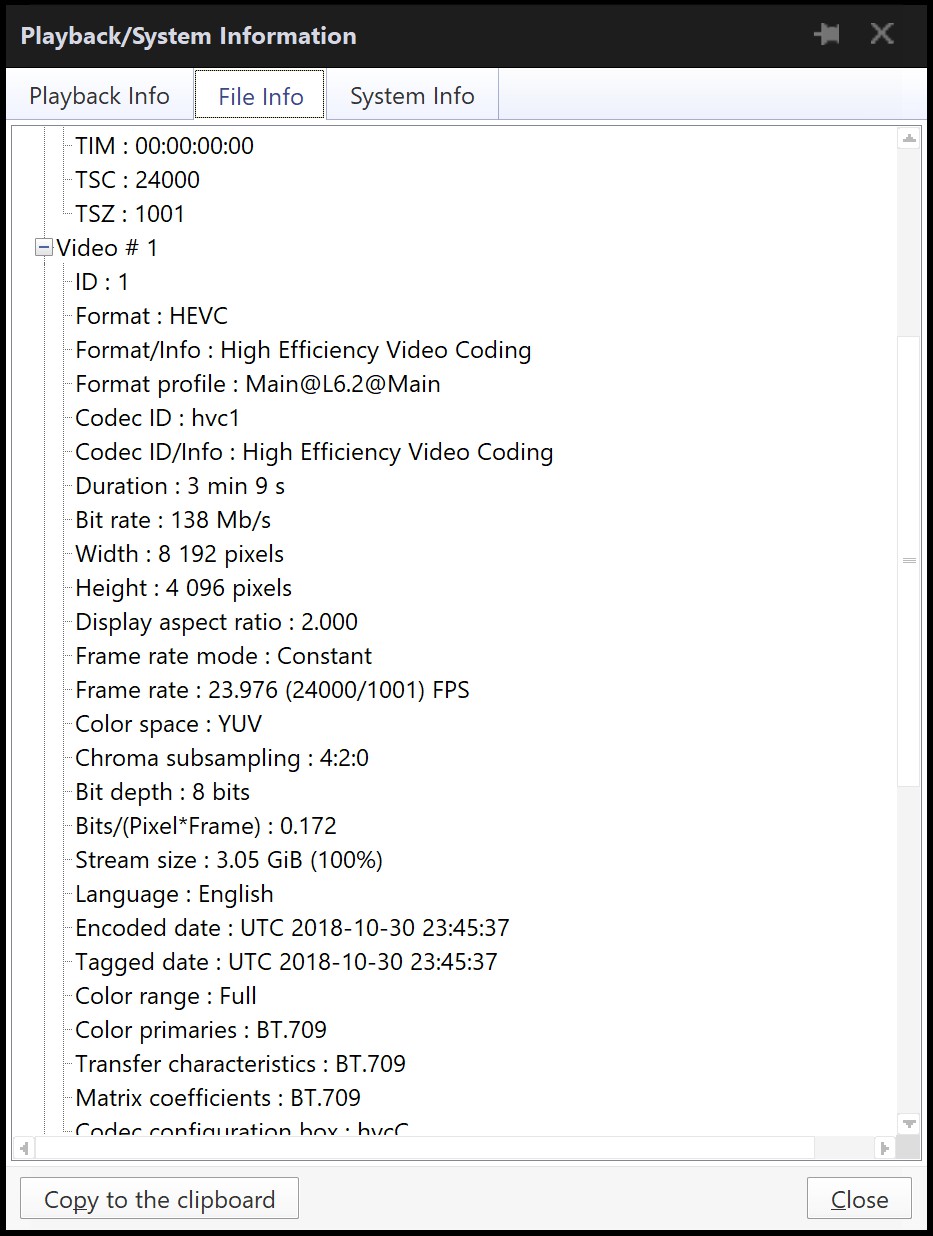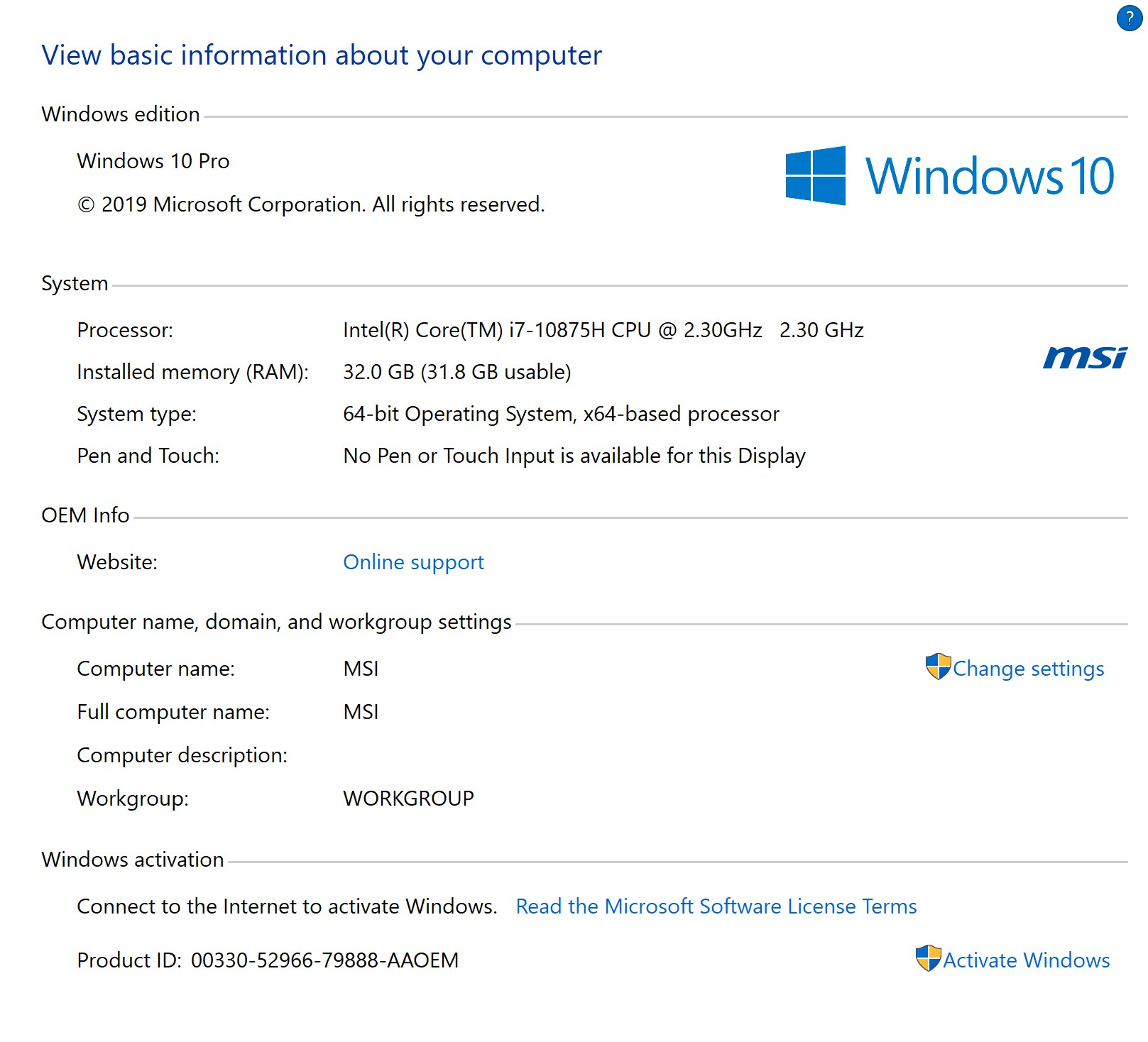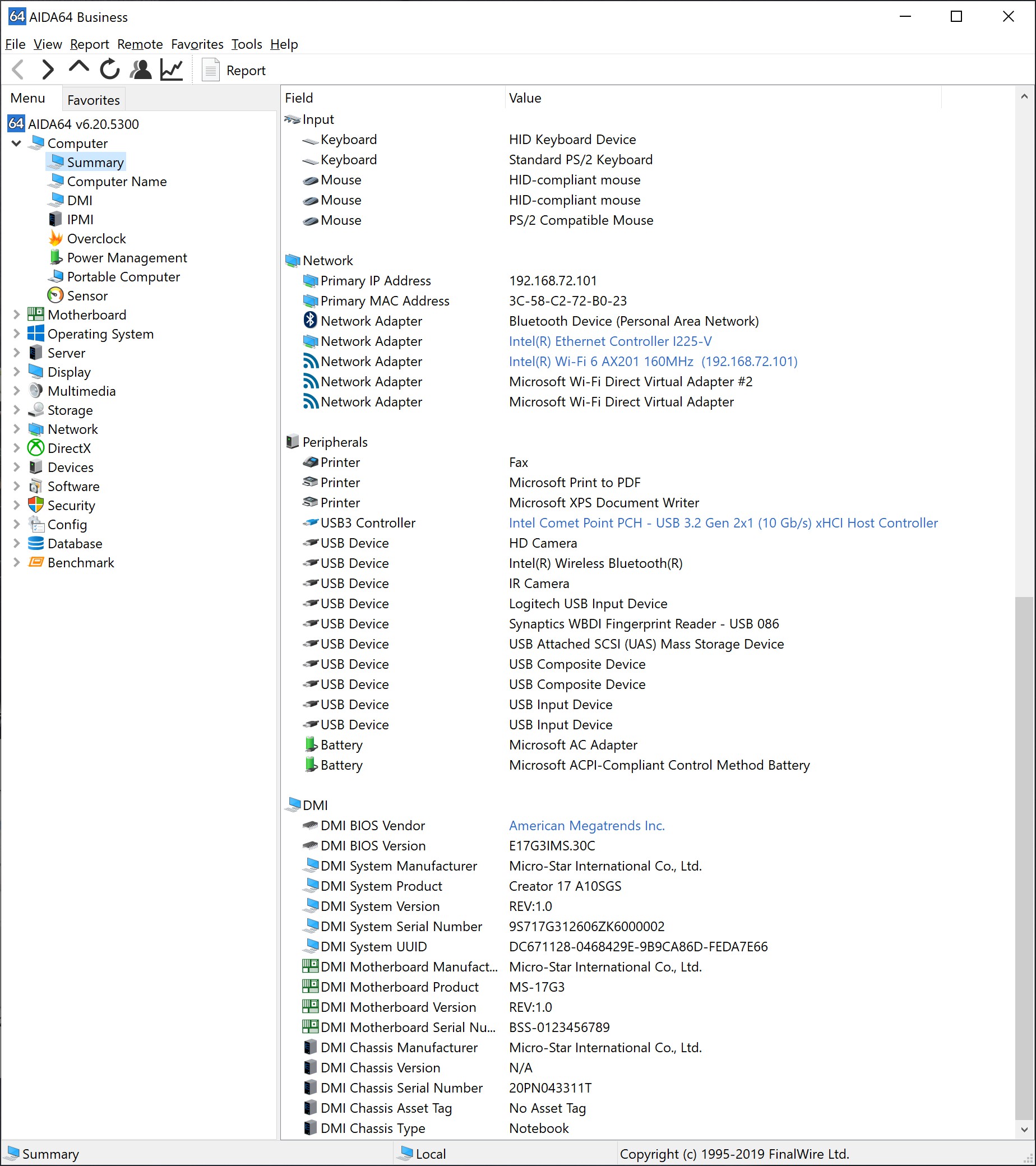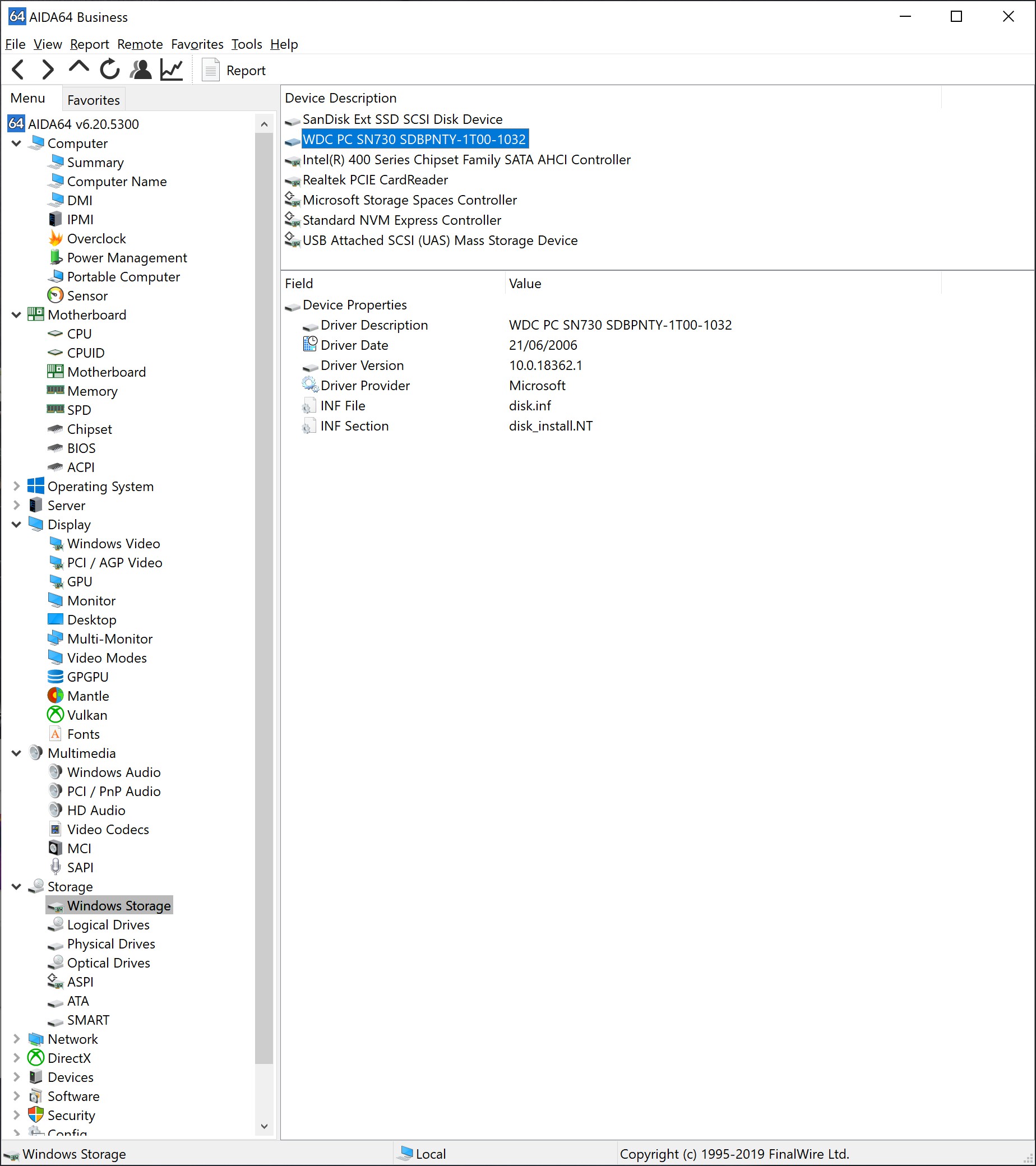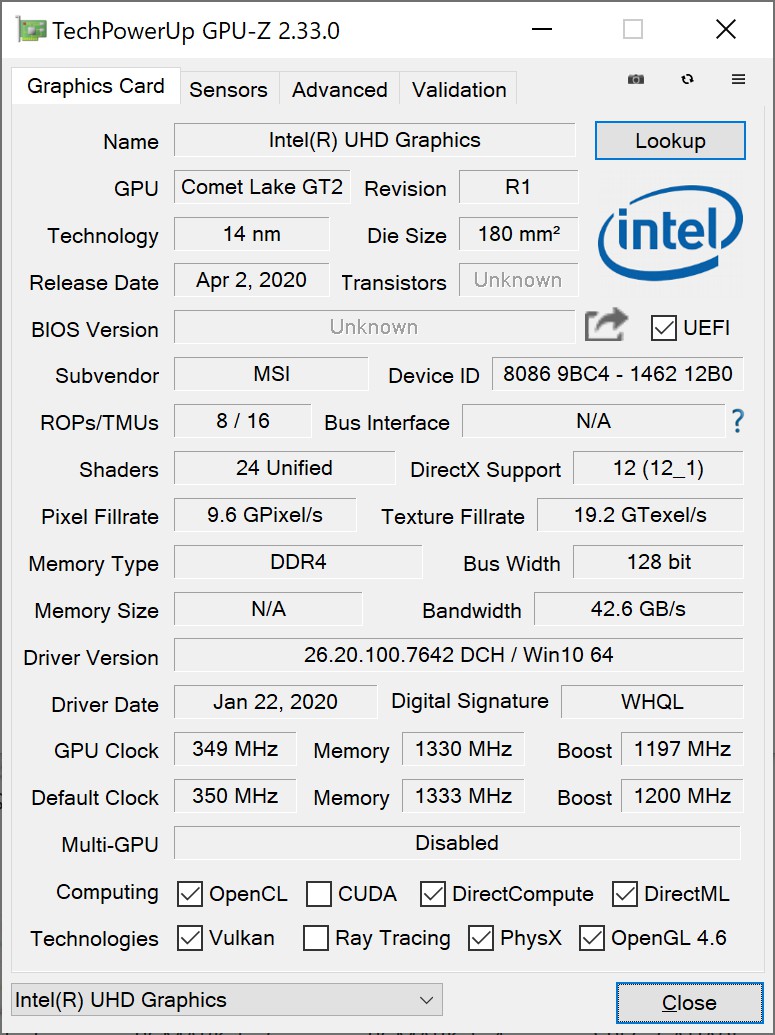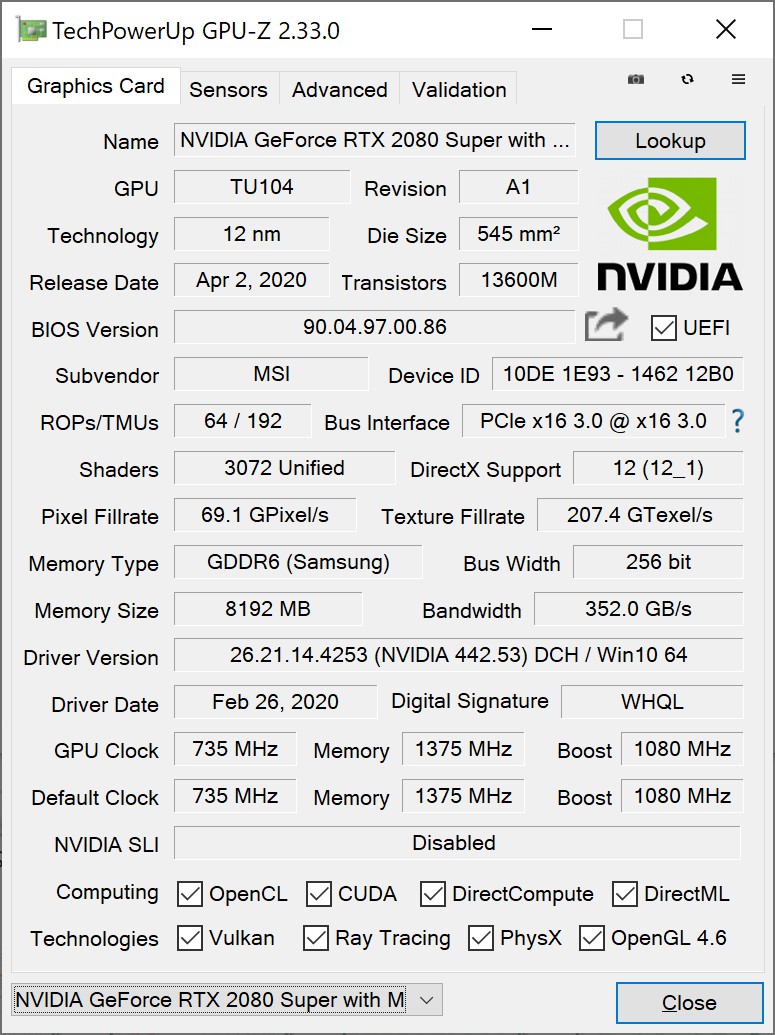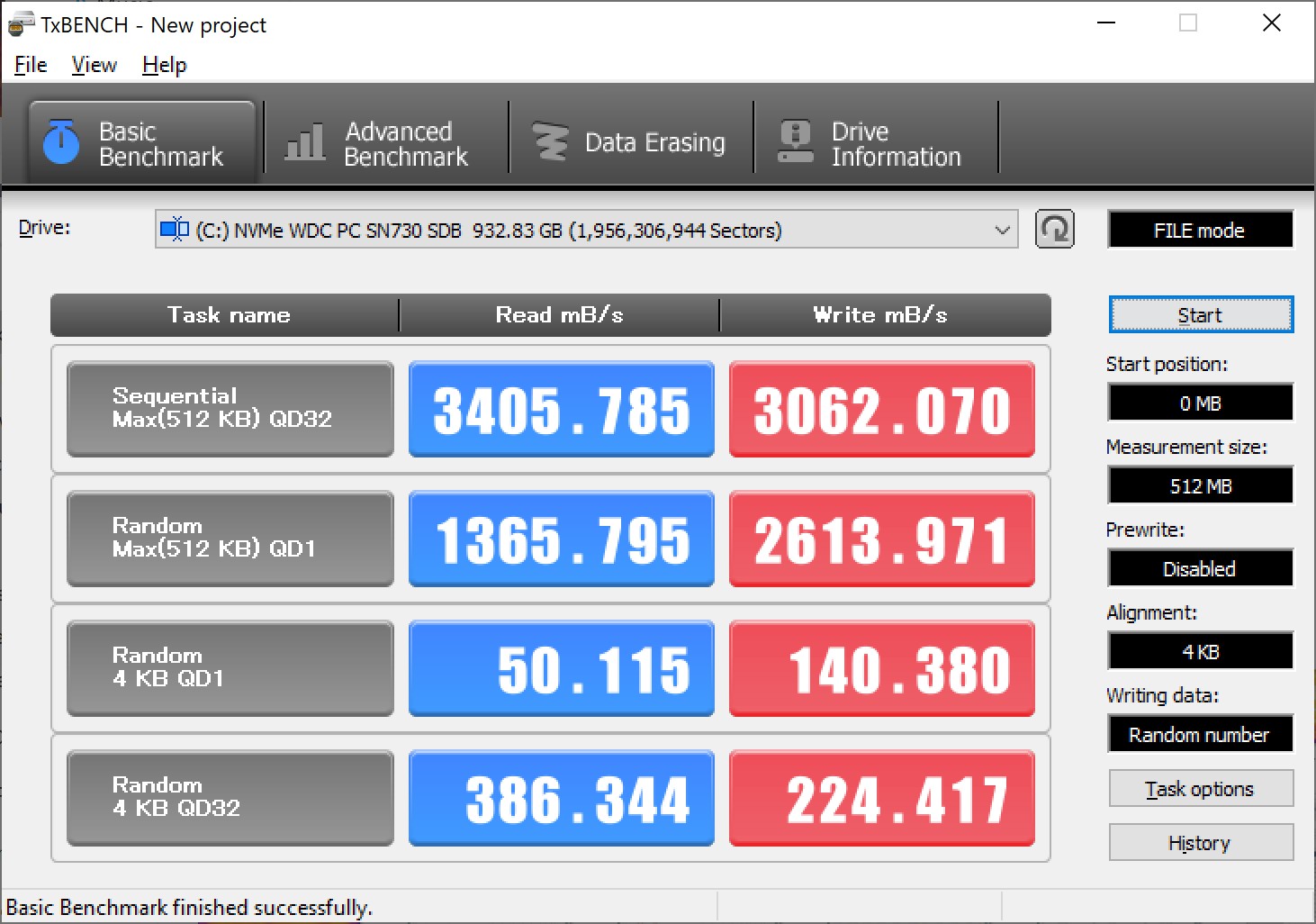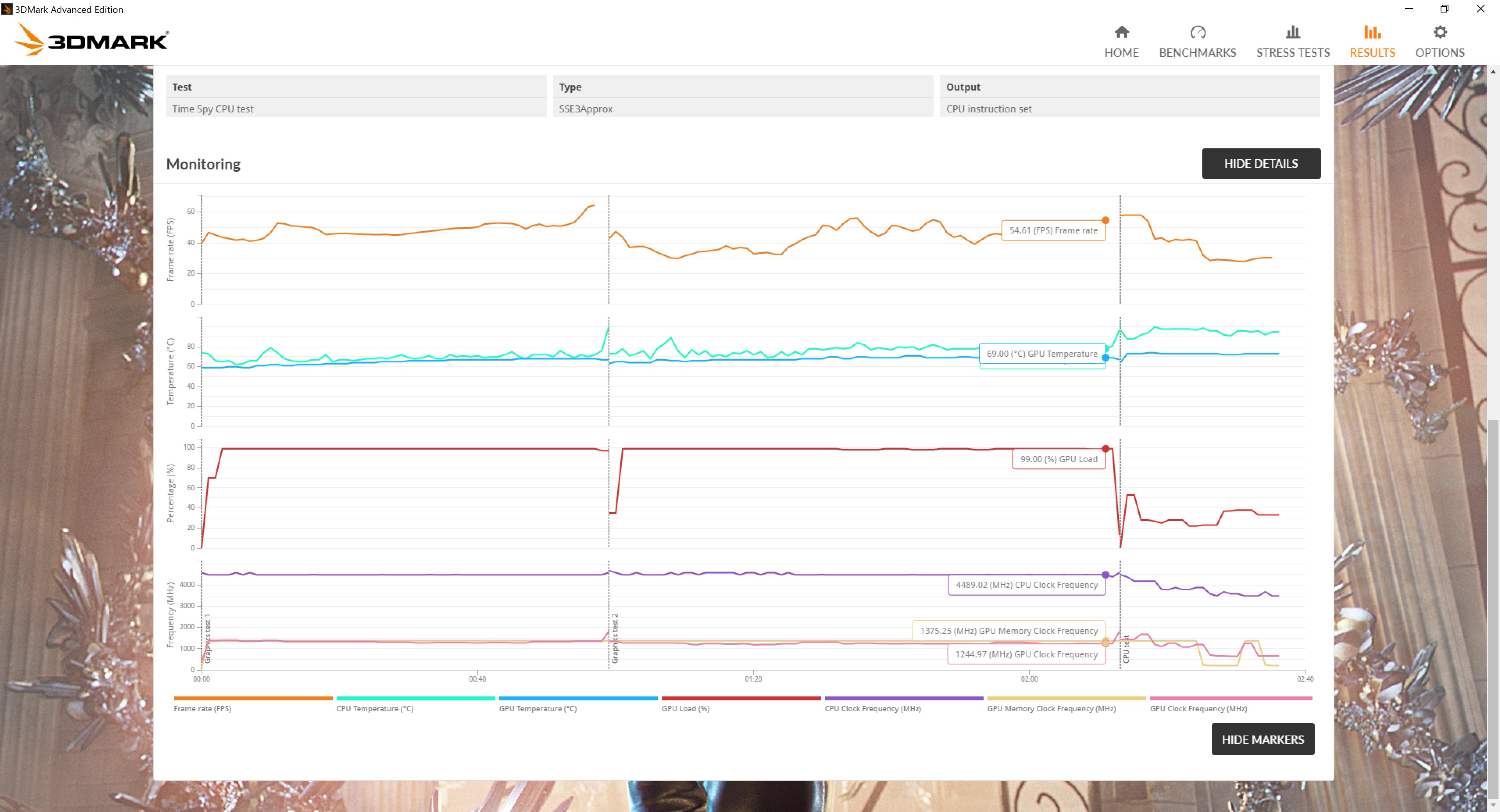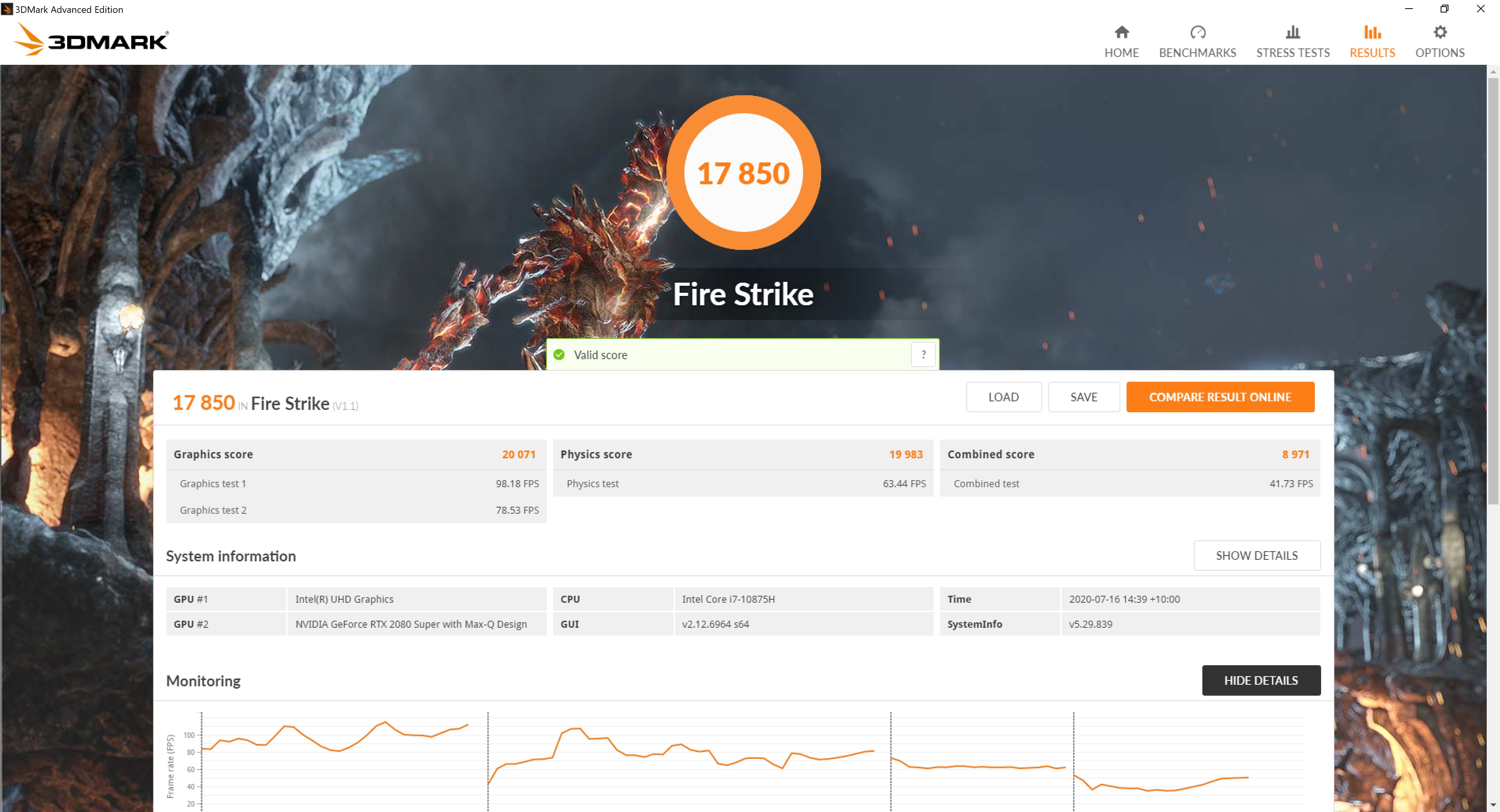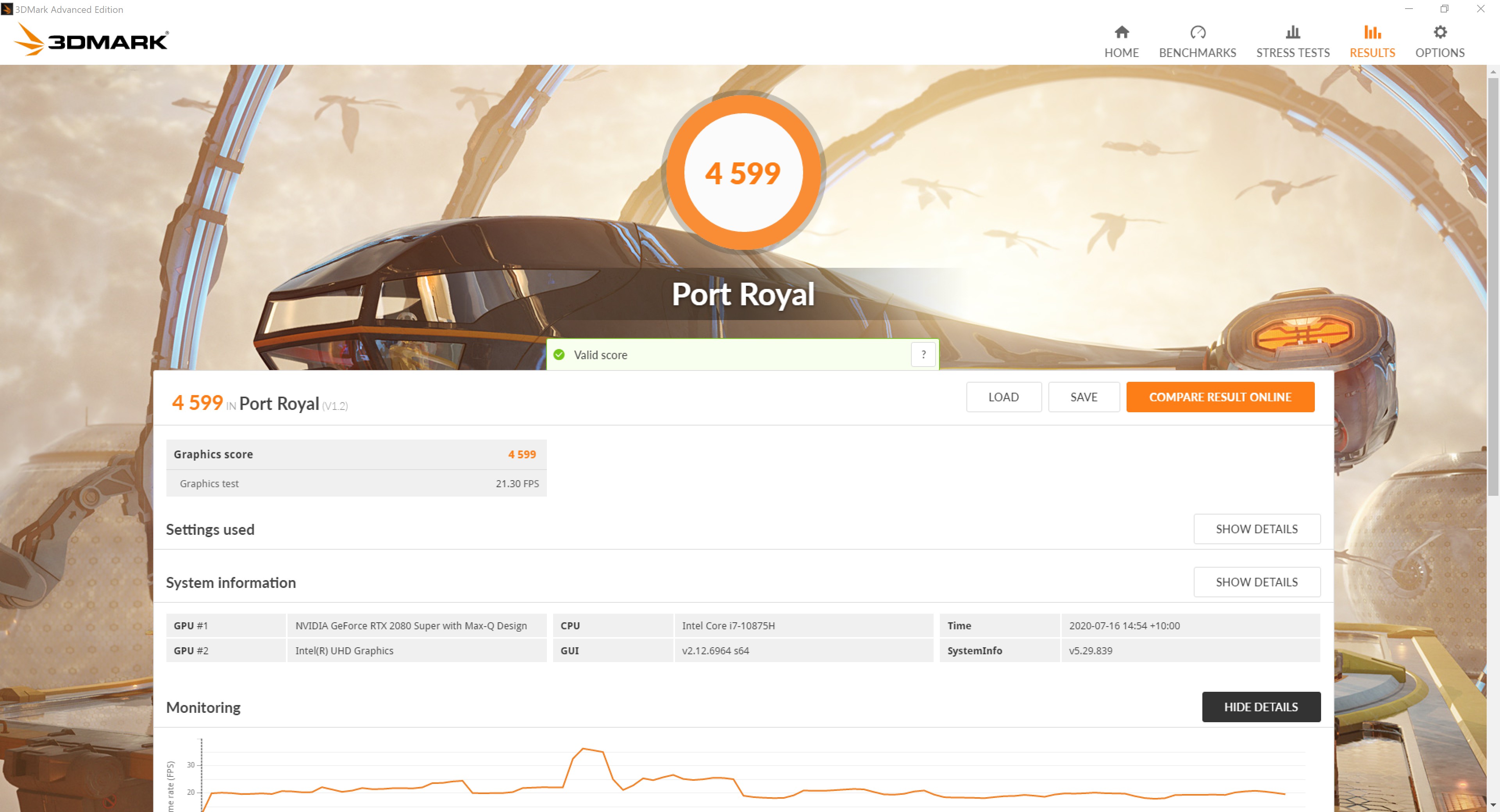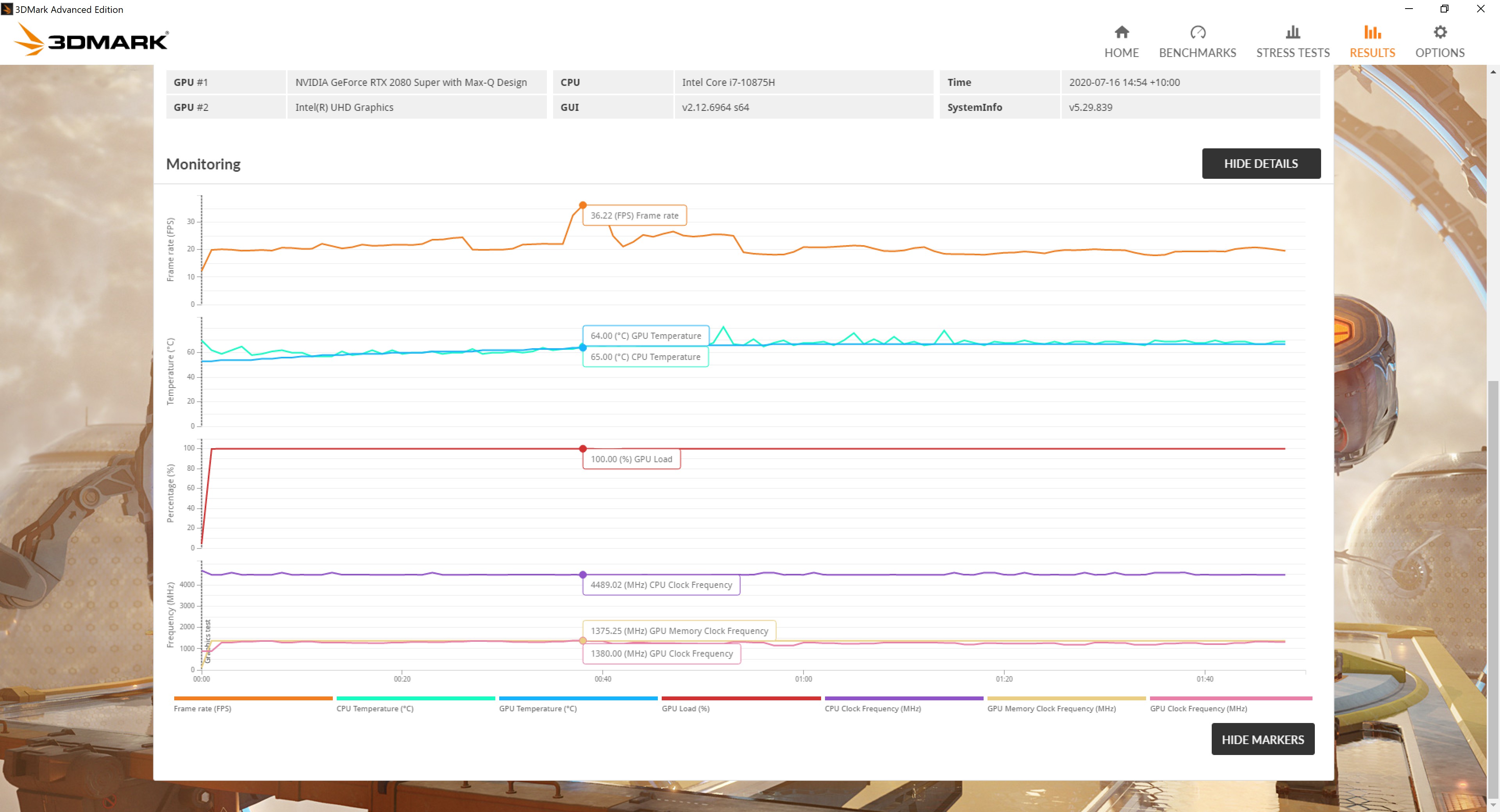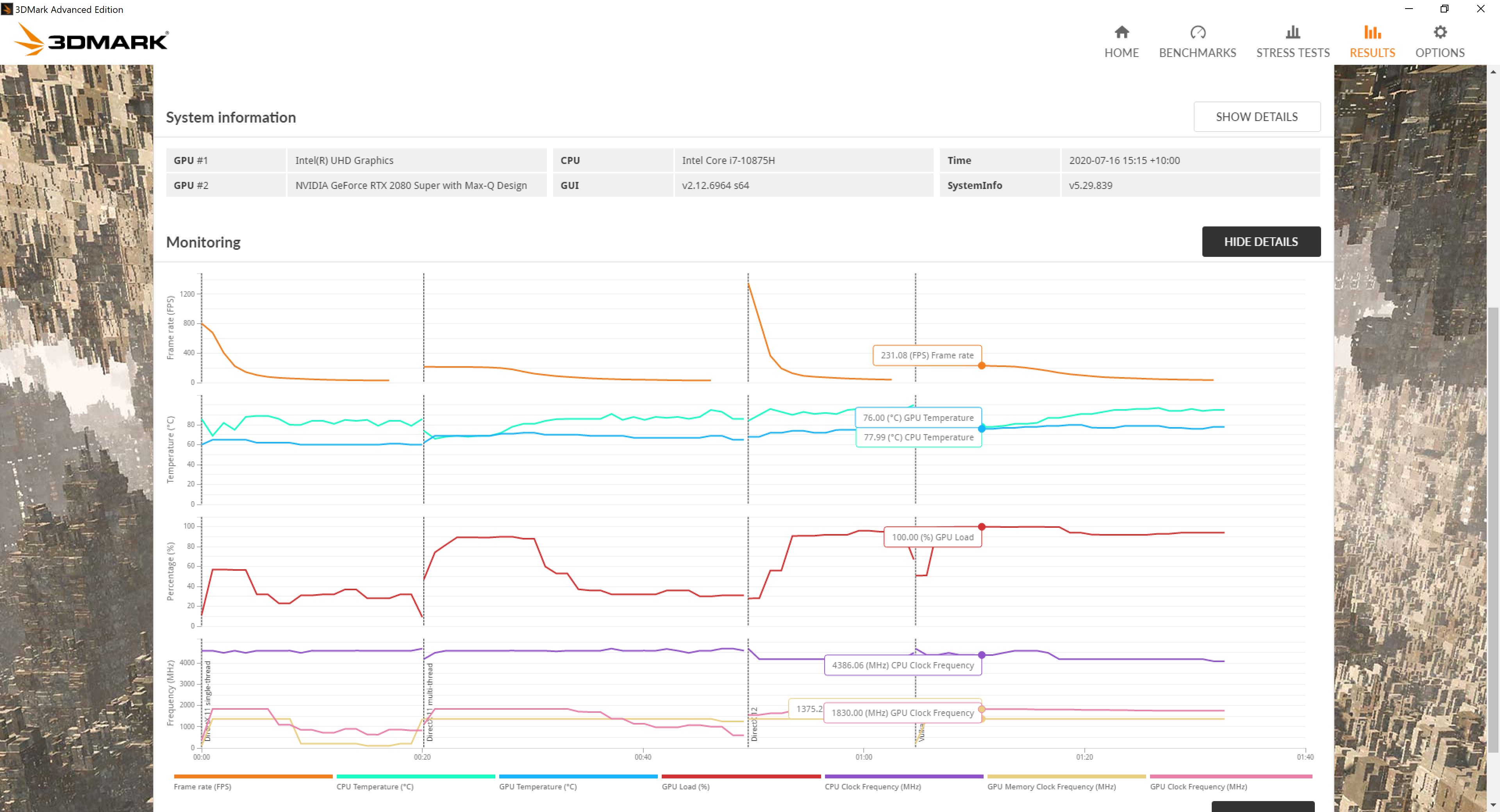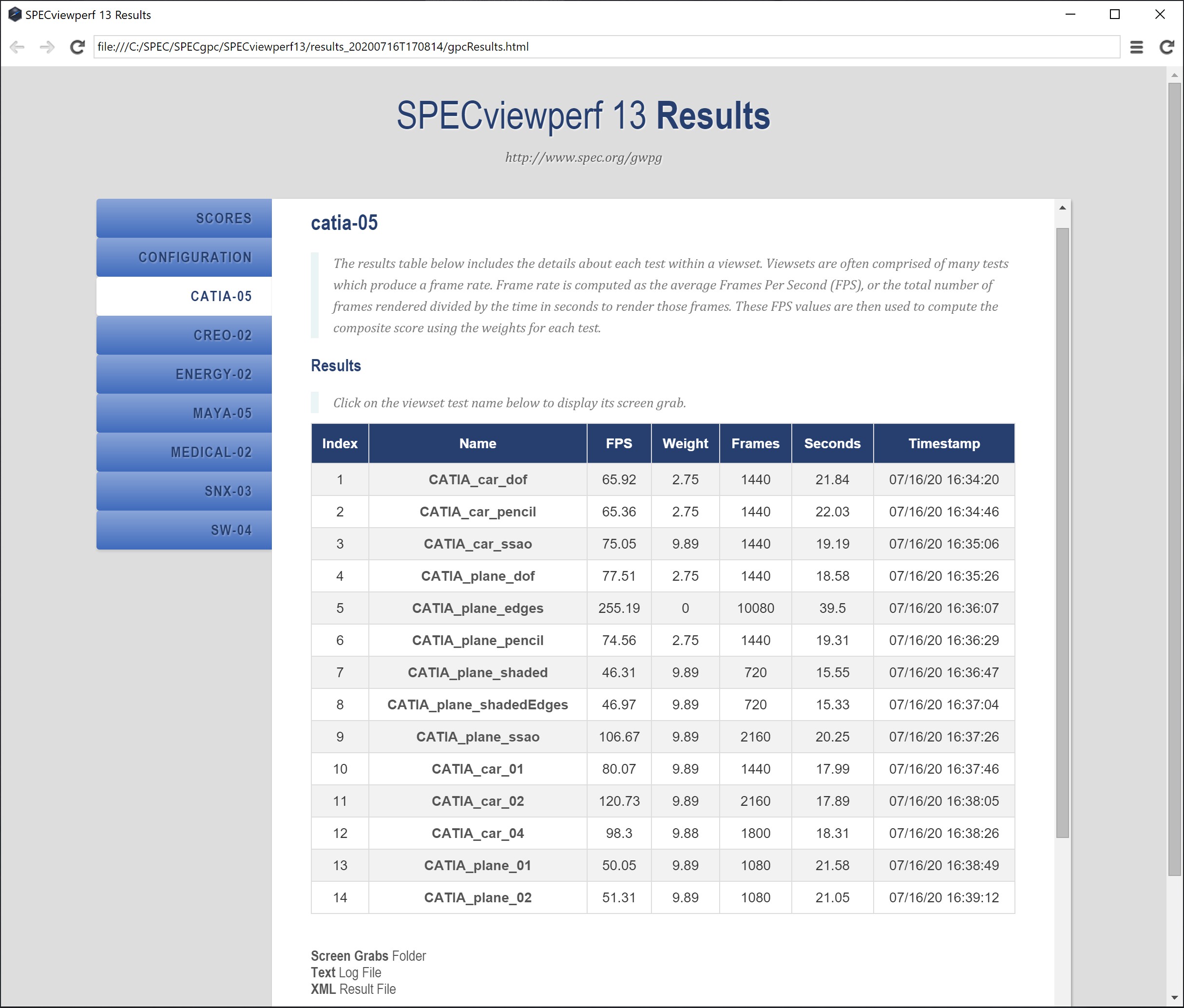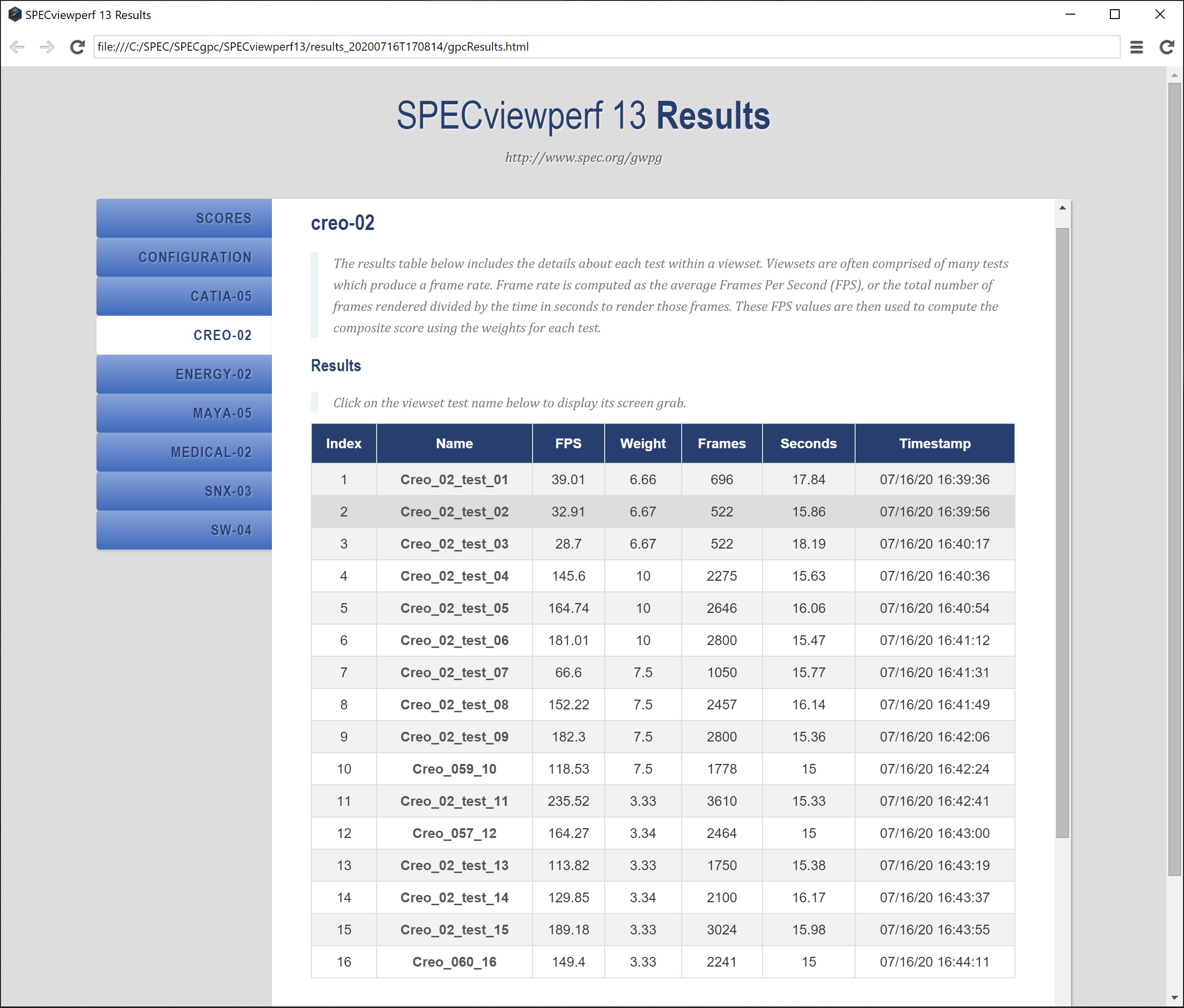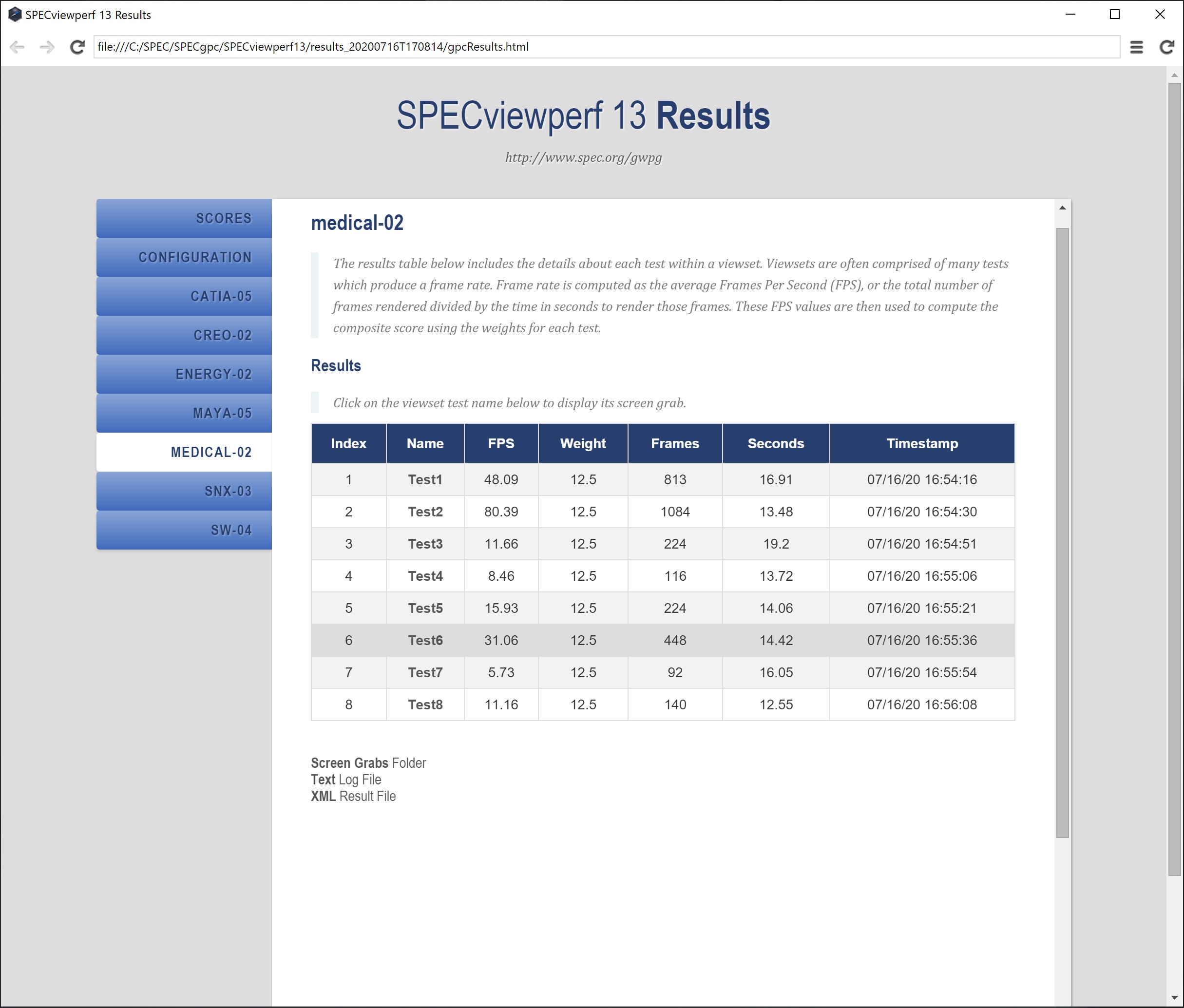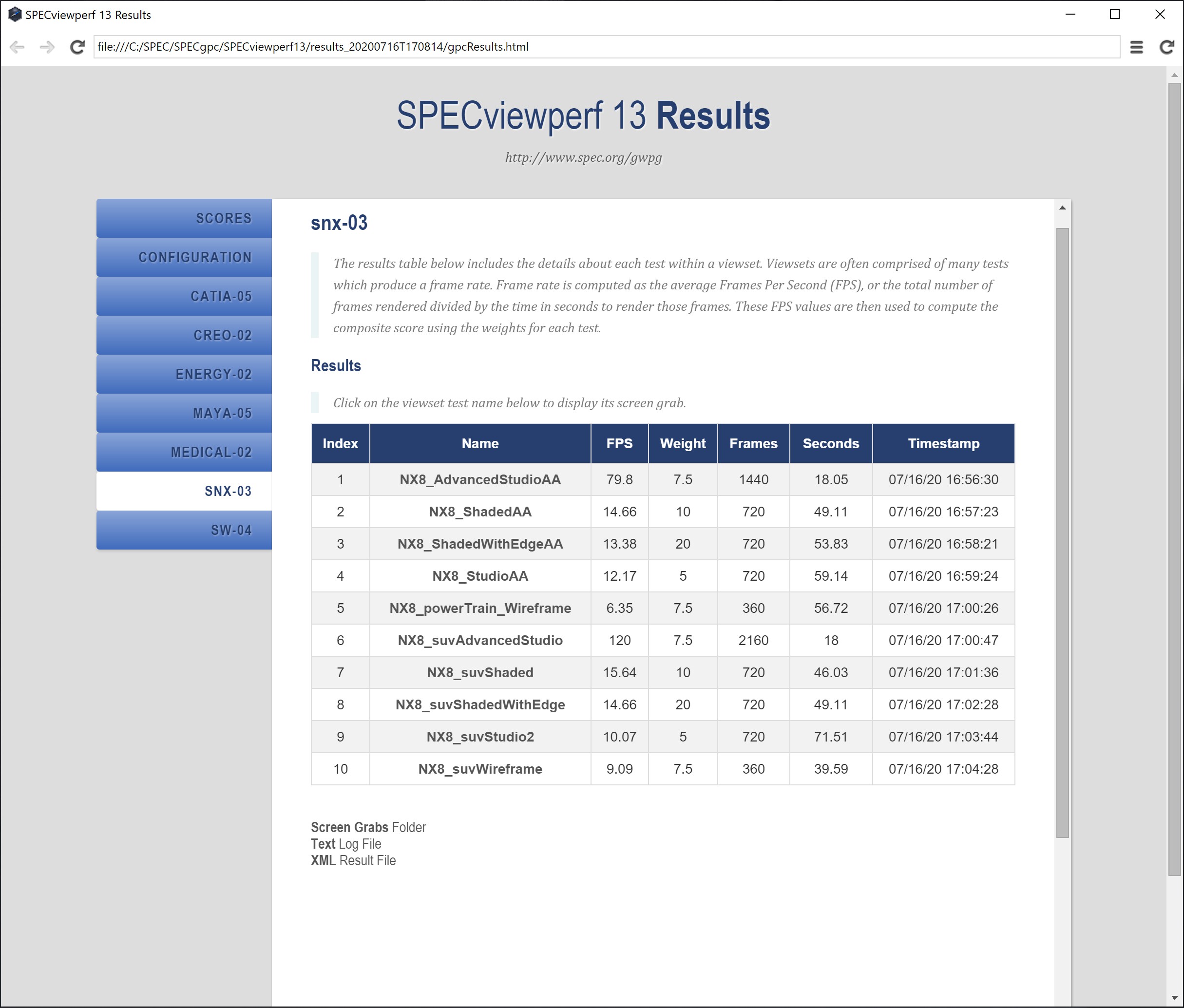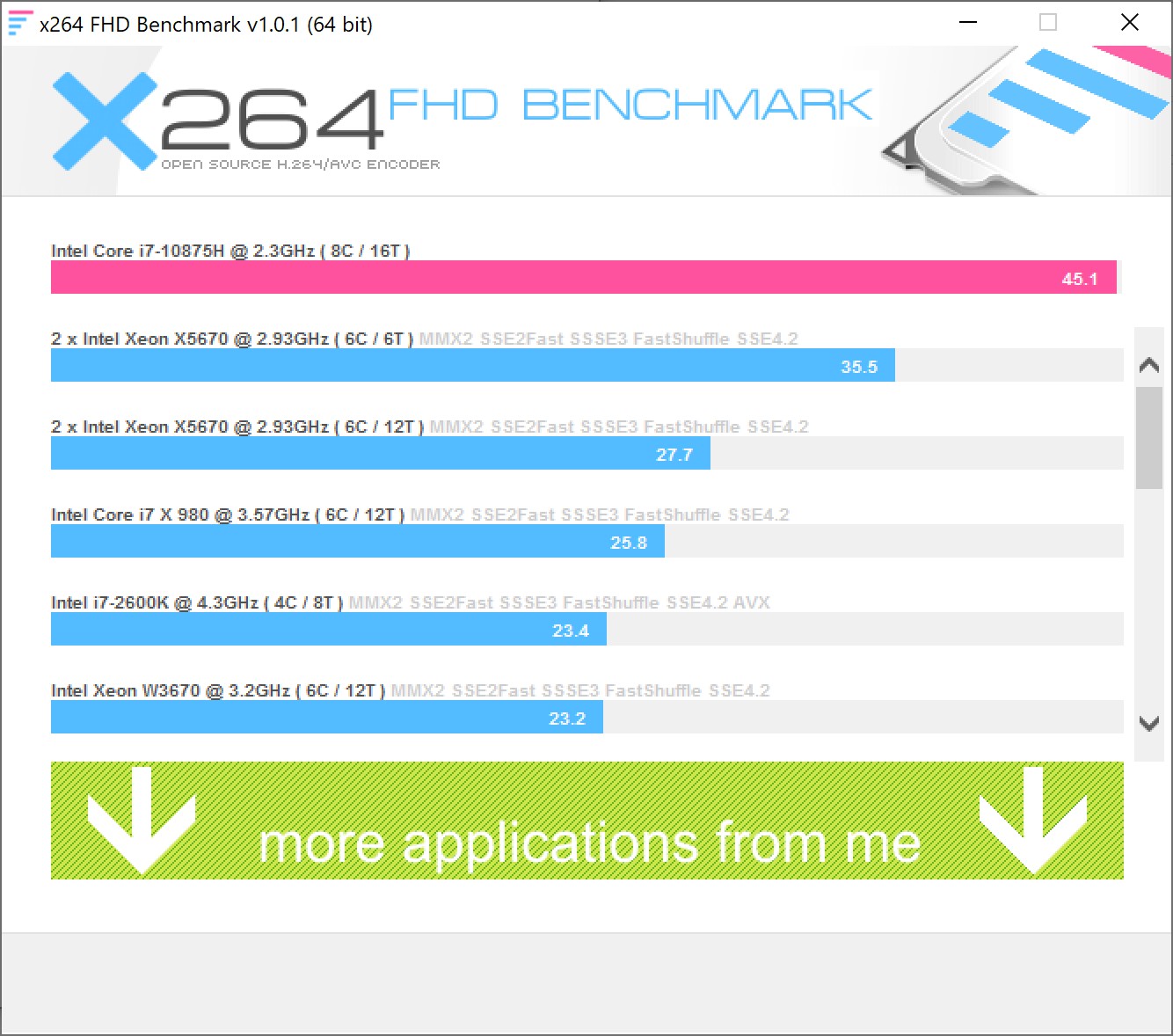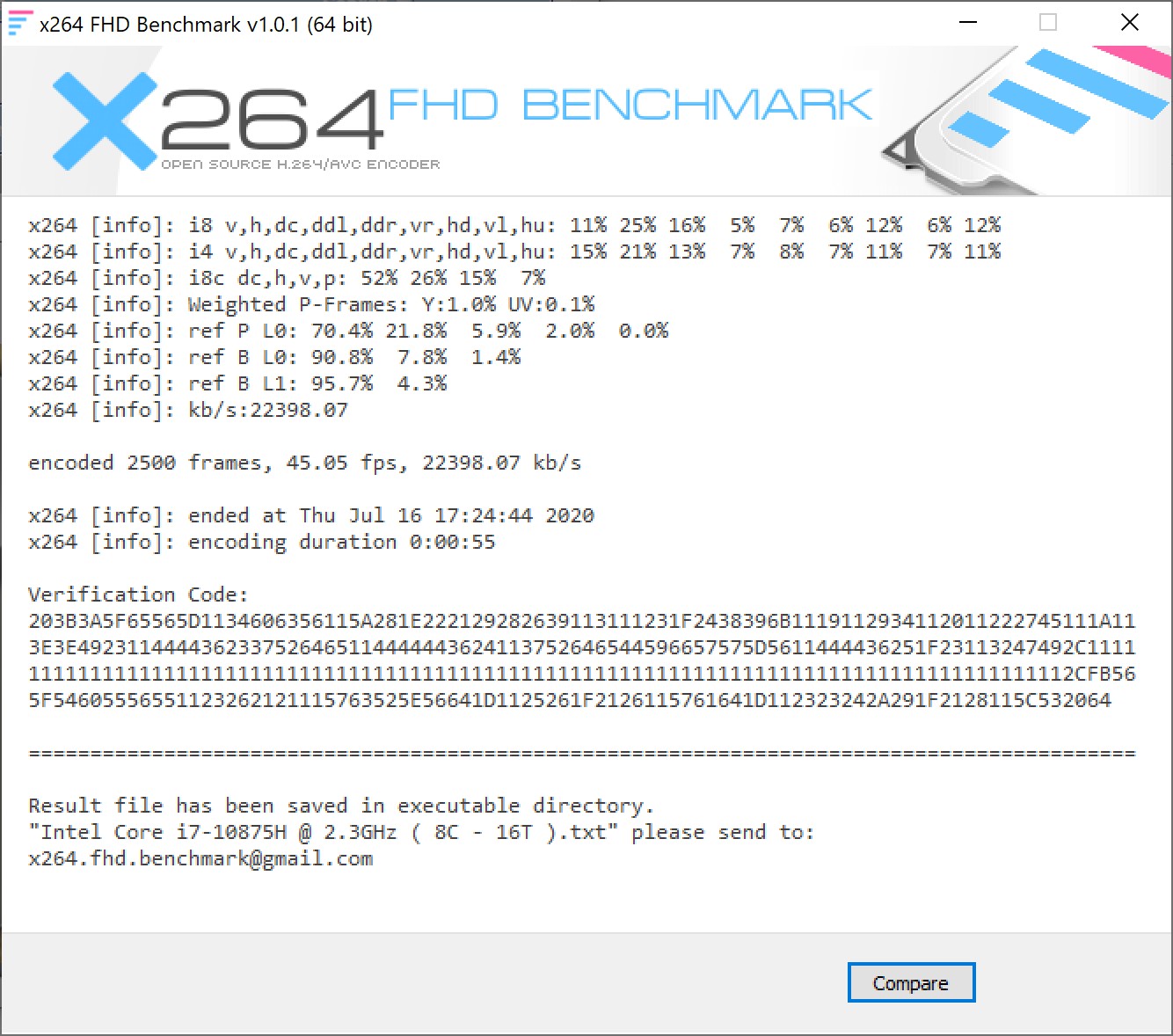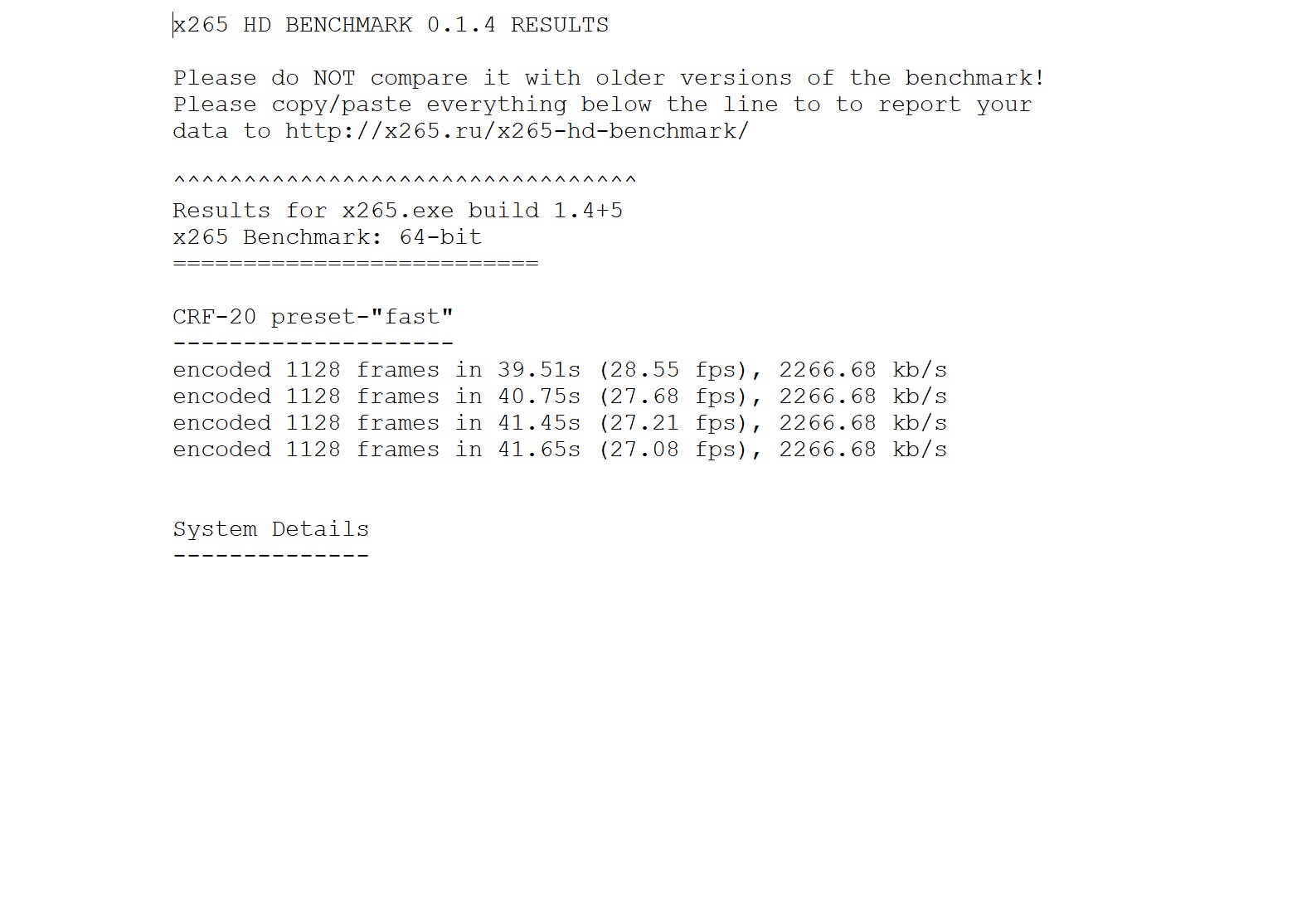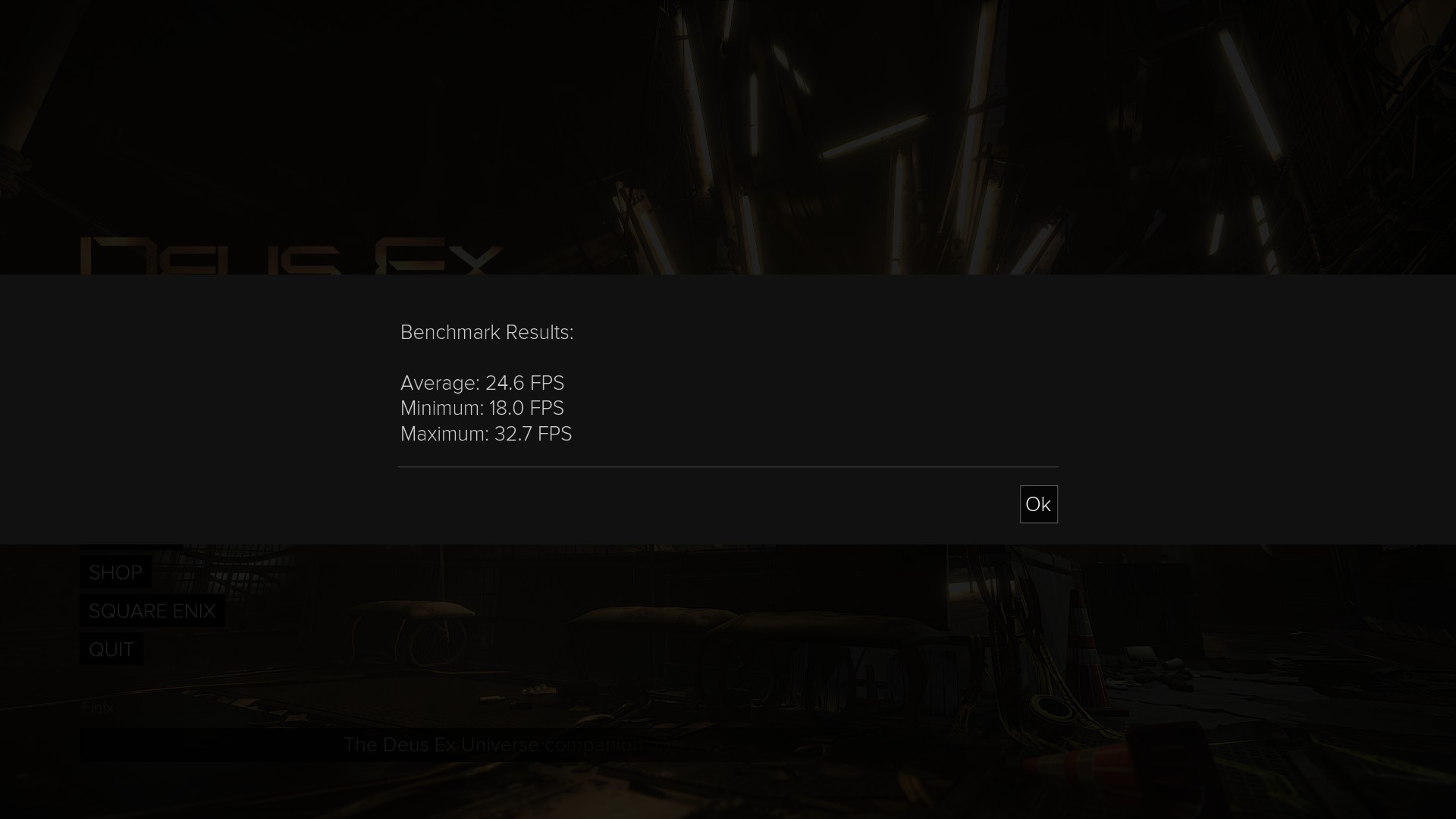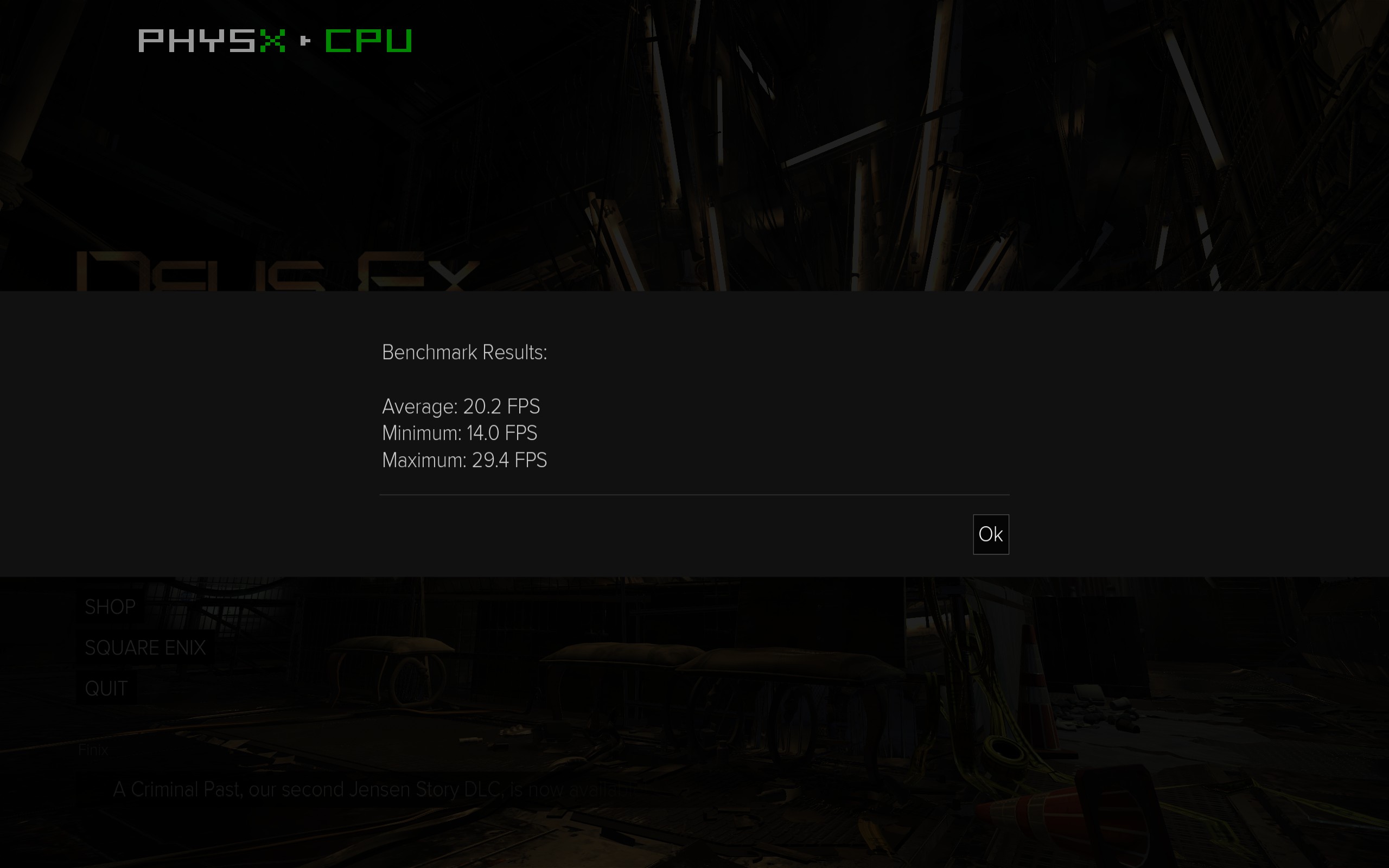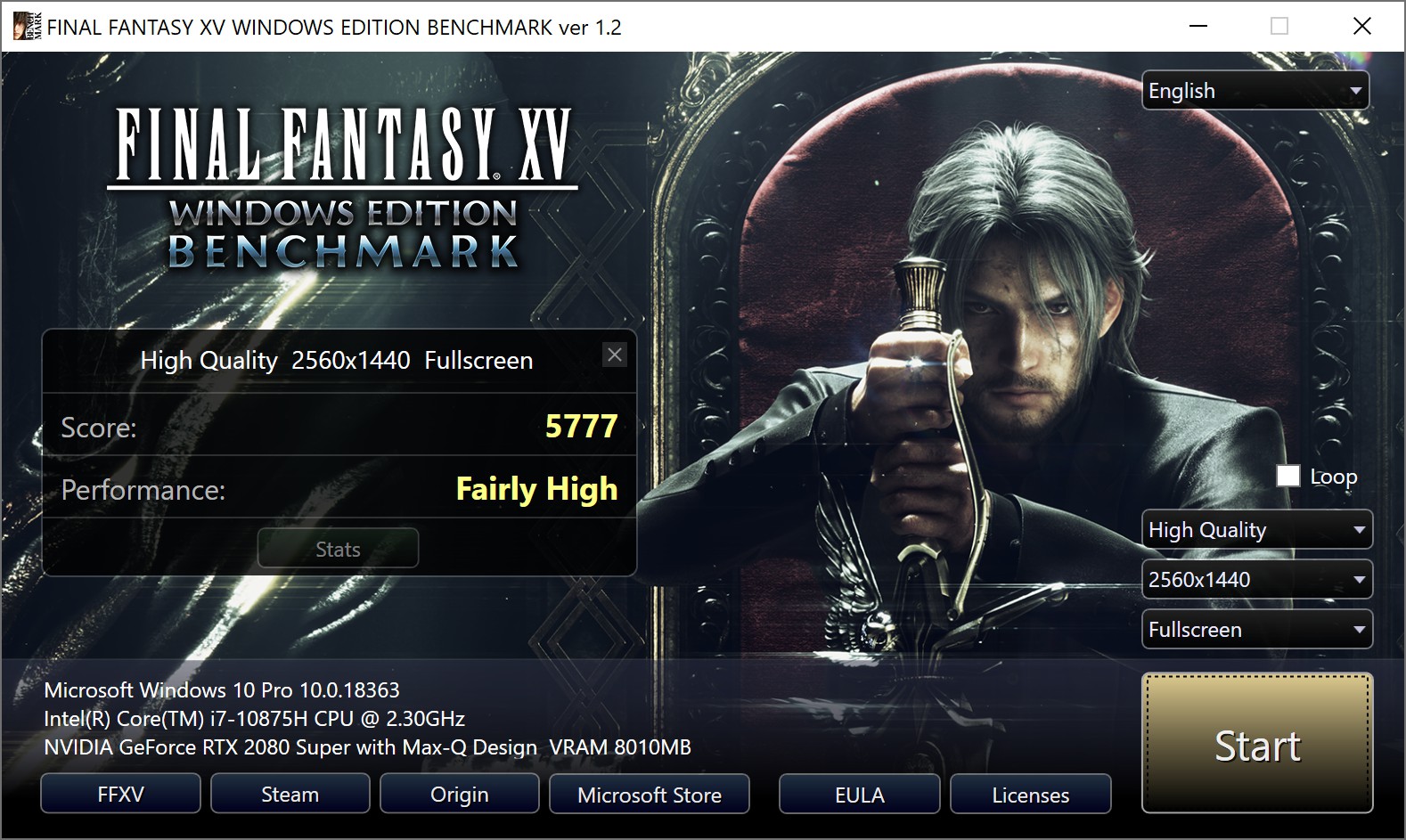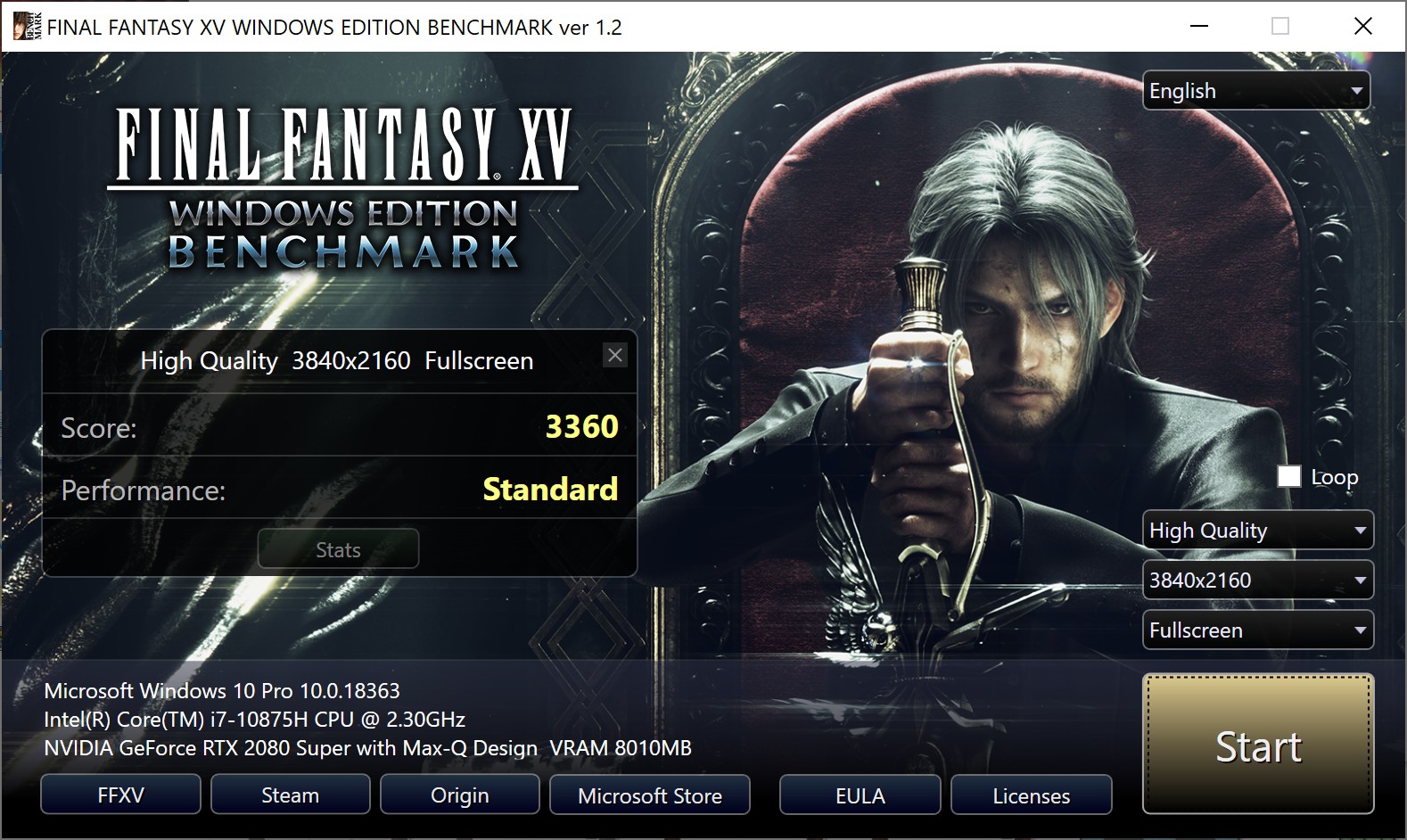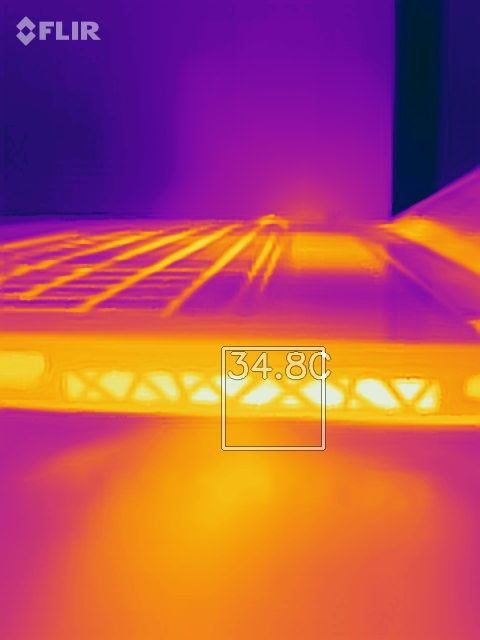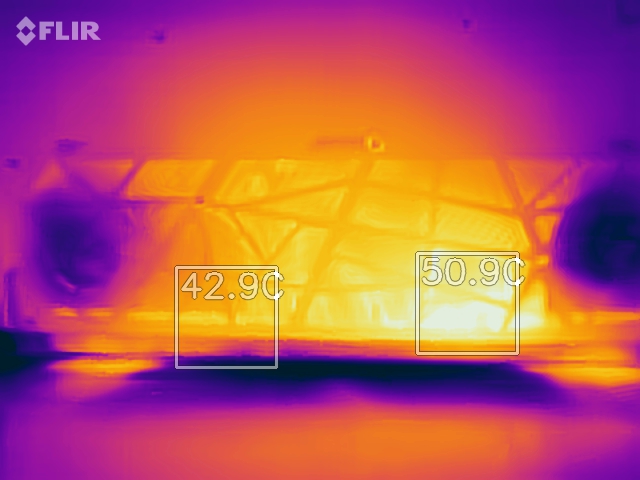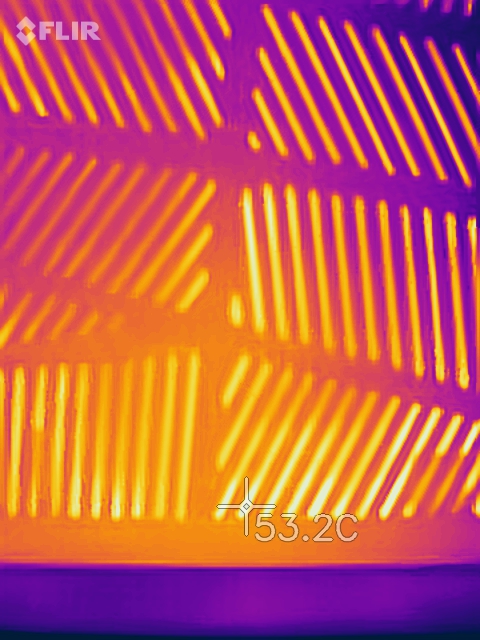Recently, MSI sent us their latest Creator series high-performance laptop, the Creator 17 A10SGS. For high-end design users, the biggest highlight is the 17.3-inch 4K Mini-LED display with a peak brightness of up to 1000nits. It has passed the DisplayHDR1000 certification, supports 100% DCI-P3 colour gamut and True Color 2.0 technology, it also has 240 local dimming areas.
The overall design of Creator 17 is similar to the Prestige series P75, it is equipped with the Intel’s 10th gen Core i7-10875H processor, 32GB DDR4 memory, 1TB NVMe SSD and NVIDIA GeForce RTX 2080 Super Max-Q graphics card.
The critical spotlight of this model is Mini-LED technology. Therefore, before introducing the product, let’s discuss this core technology brought by MSI.
Core Technology Specification
Micro-LED
Micro-LED and OLED is similar technology. Firstly, they are all composed of light-emitting diodes, so both technologies are self-luminescent, which means each red, green, and blue sub-pixel can generate light source of its own, and it’s not like LCD which requires a backlight. Therefore, Micro-LED displays can also provide extremely high contrast and black level, which is the same as OLED, and a TFT panels.
Secondly, Micro-LED technology is an LED miniaturisation and matrix technology, in simple terms, it can make the LED unit smaller than 50 microns, which can be achieved just like OLED that each pixel is individually addressed and driven to emit light. The advantages of Micro-LED technology are not only inherited the high efficiency, high brightness, high reliability and fast response time of inorganic LEDs but also has the characteristics of self-luminescence without backlight. Smaller size, Thin-n-Light, and energy-saving are the main effects.
Thirdly, from the structural principle, Micro-LED is simpler and has better quality, the TFT substrates, LED dies, and driver ICs are not very important, but its biggest problem is the well-known mass transfer. To make LEDs miniaturised requires a wafer-grade process level. For example, a 4K-level Micro-LED screen requires more than 8 million LEDs to be highly integrated, so theoretically it is extremely difficult to apply to a small-sized screen, the cost and heat generation are also extremely considerable.
Then, the difference between Micro-LED and OLED is material composition. The “O” in OLED stands for organic material, which refers to the use of organic materials in the pixel stack that can generate light. But the Micro-LED technology uses inorganic gallium nitride materials, which are often used in ordinary LED lighting products. This technology can reduce the requirements for polarisation and encapsulation layers and make the display panel thinner. That’s why the components of Micro-LED are usually very small, which is less than 100μm in width, thinner than a human hair.
MINI-LED
Now, we can talk about Mini-LED Technology. Mini-LED is an LED with a grain size of about 100 microns, which was first proposed by EPISTAR. Mini-LED is between the traditional LED and Micro-LED, in short words, it is an improved version of the traditional LED backlight.
Compared with Micro-LED, it has a higher processing procedure than Micro-LED and has special-shaped cutting characteristics. It can also achieve a form of the high-curved backlight with a flexible substrate. It adopts a local dimming design and has better colour rendering, which can bring more fine HDR partition to the LCD panels, and the thickness is also close to OLED, which will save up to 80% of the power. Therefore, it is good for demanded backlight applications such as power saving, thinning, HDR, and special-shaped displays such as mobile phones, TVs, car panels and Gaming laptops and other products.
Compared with Micro-LED, Mini-LED technology is less difficult, easier to achieve mass production for developing a large number of LCD backlight market, and the product economy is better. According to industry estimates, if an LCD TV panel with a Mini-LED backlight design is used, the price is only about 60% to 80% of an OLED TV panel, the brightness and picture quality are similar to those of OLED, and more efficiency in the power saving.
However, whether it is Mini-LED or Micro-LED, their internal luminescence is not based on organic coatings, but inorganic metal semiconductors that are more “old” in nature and simpler in principle, such as gallium phosphid, Gallium nitride, zinc selenide, aluminium carbonitride, etc. Compared with expensive high-powered OLED, Mini-LED has great advantages in terms of life span, use environment, response time, power consumption, temperature and cost.
So let’s dig in the details.
Product Specification
MSI CREATOR 17 A10SGS Tech Specs from Official Website
https://www.msi.com/Content-creation/Creator-17-A10SX/Overview
Product Unboxing
Package Appearance
The outer packaging is still packed with a yellow recycled carton but the internal packaging is similar to the PS series
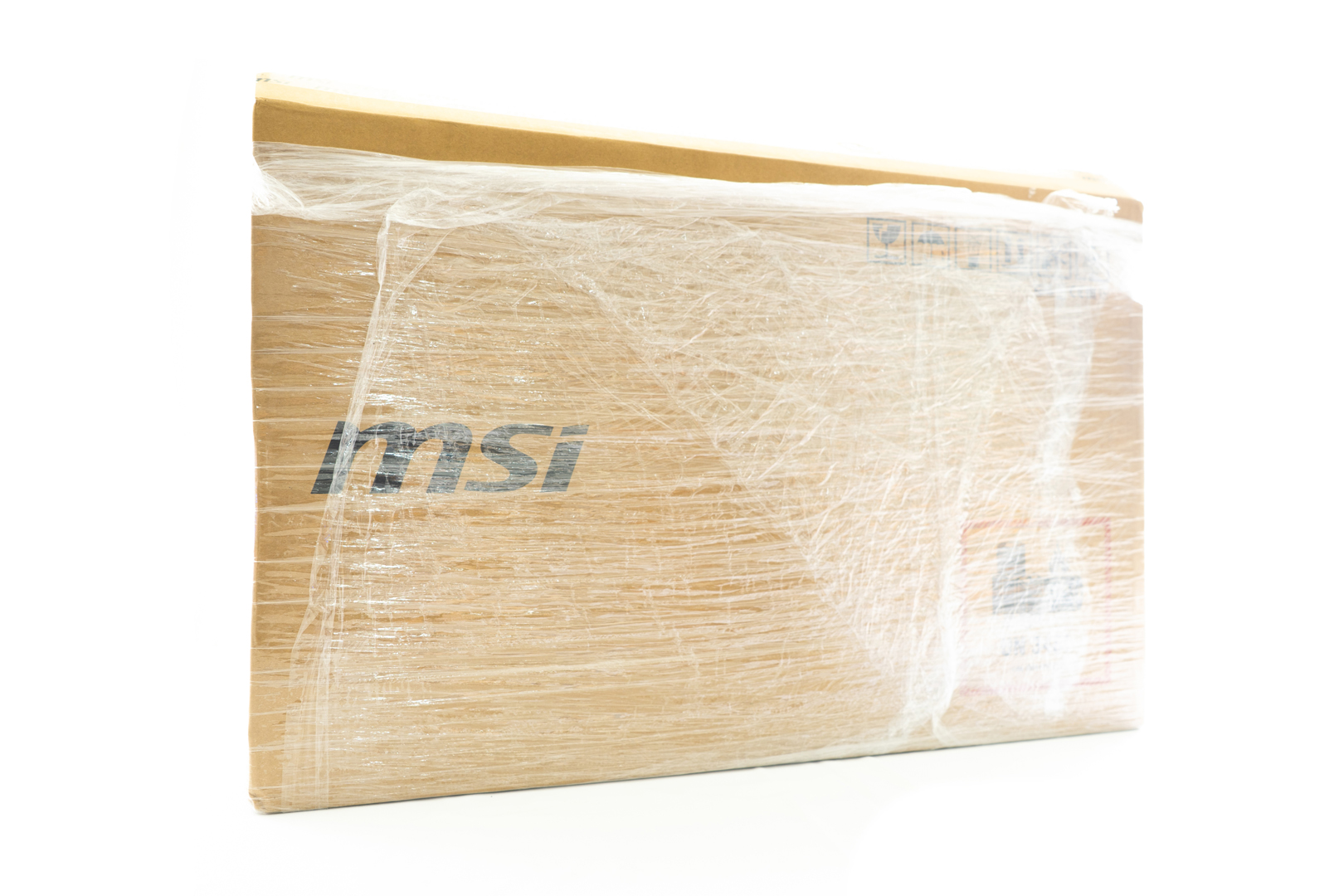
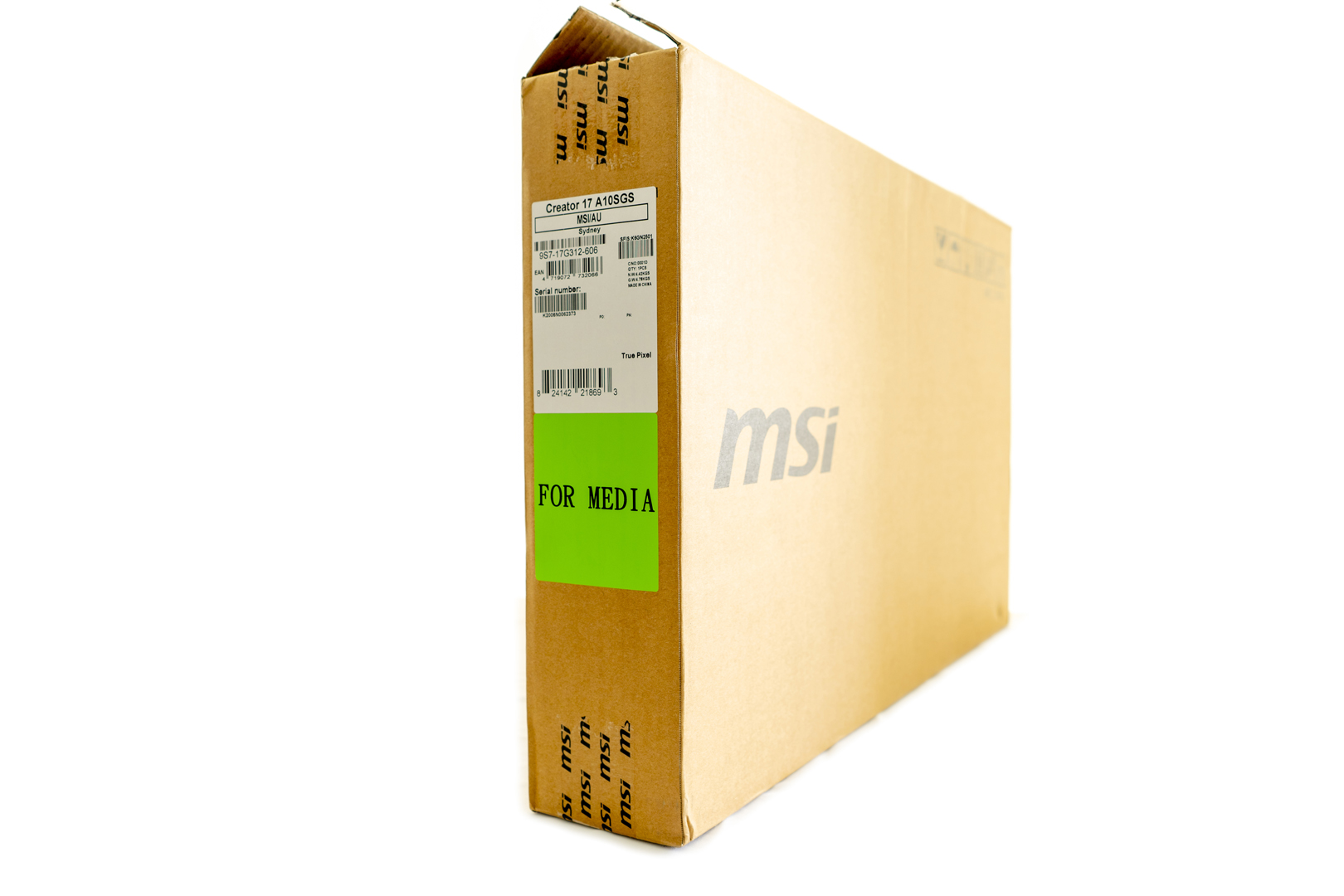
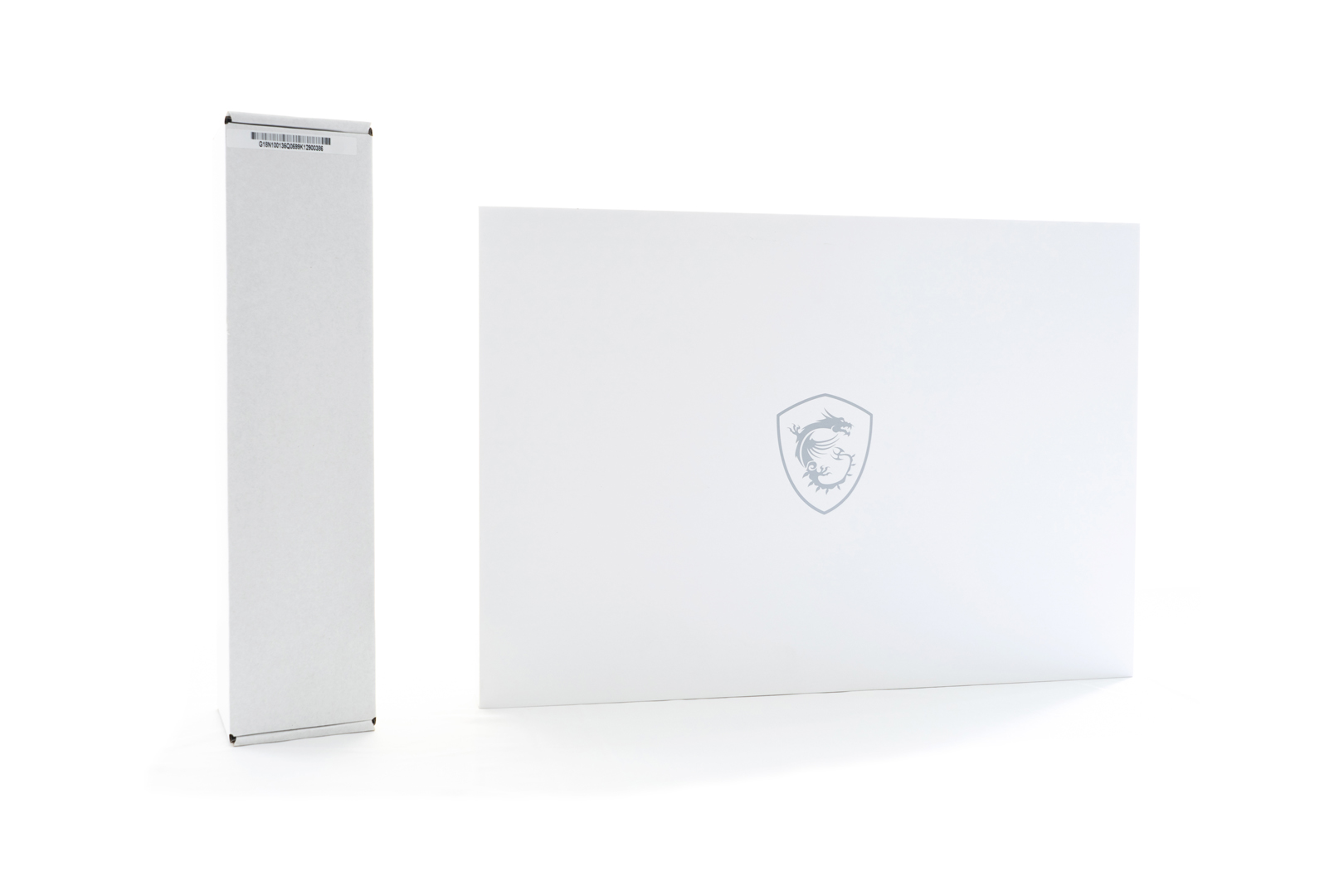
The AC adapter 19.5V 11.8A 230W and manufactured by Chicony
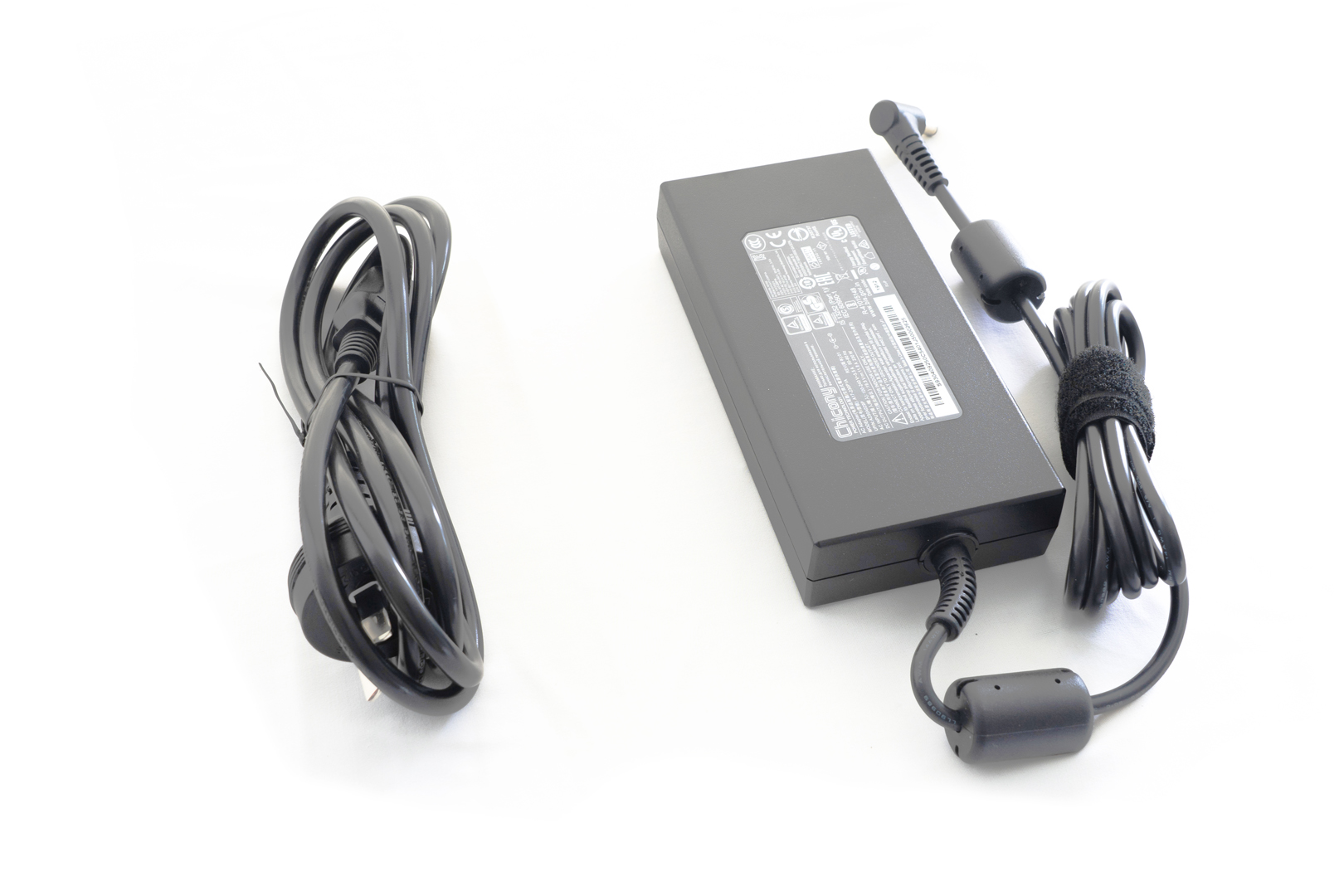
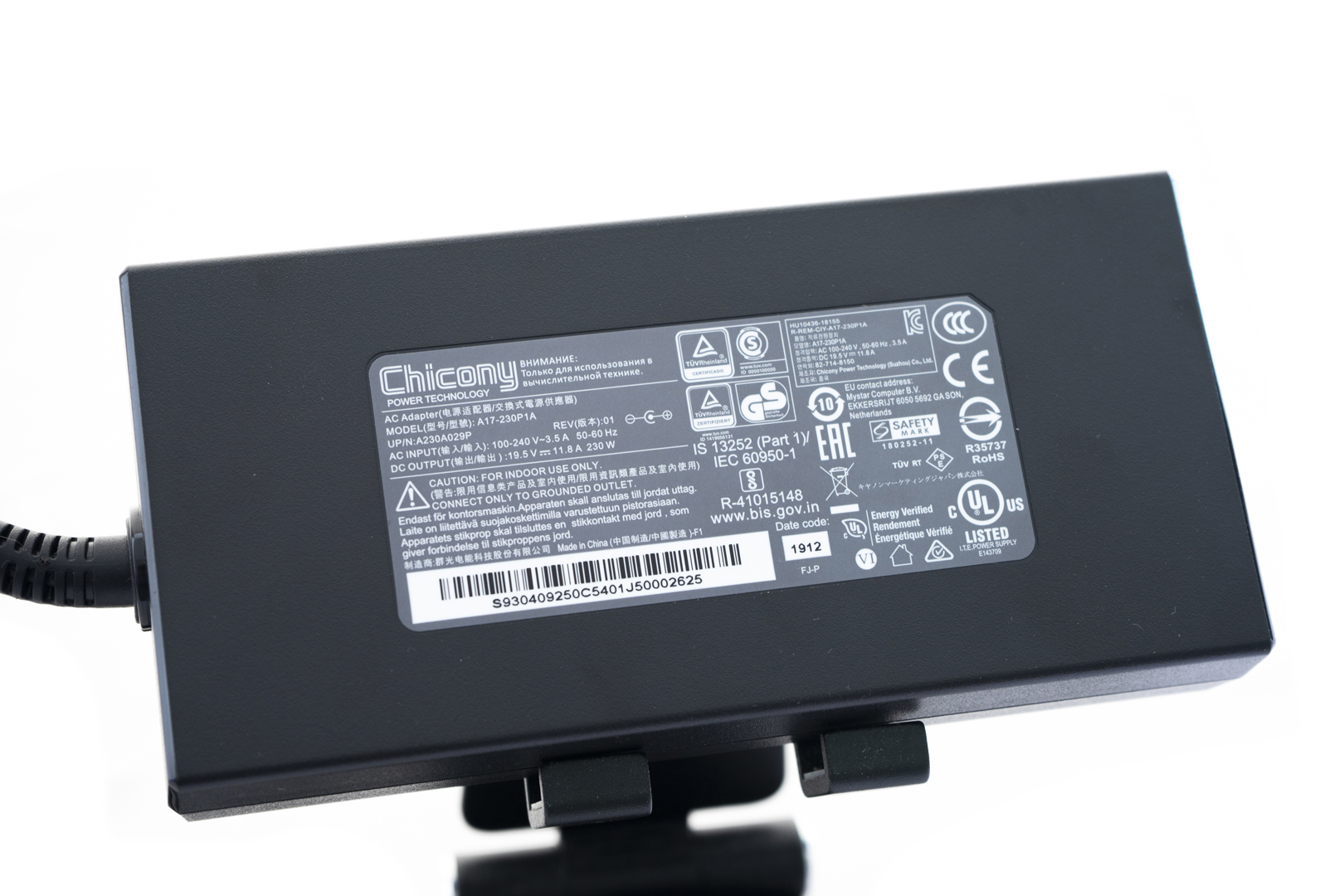
The weight of the AC adapter and power cable is 717g in total
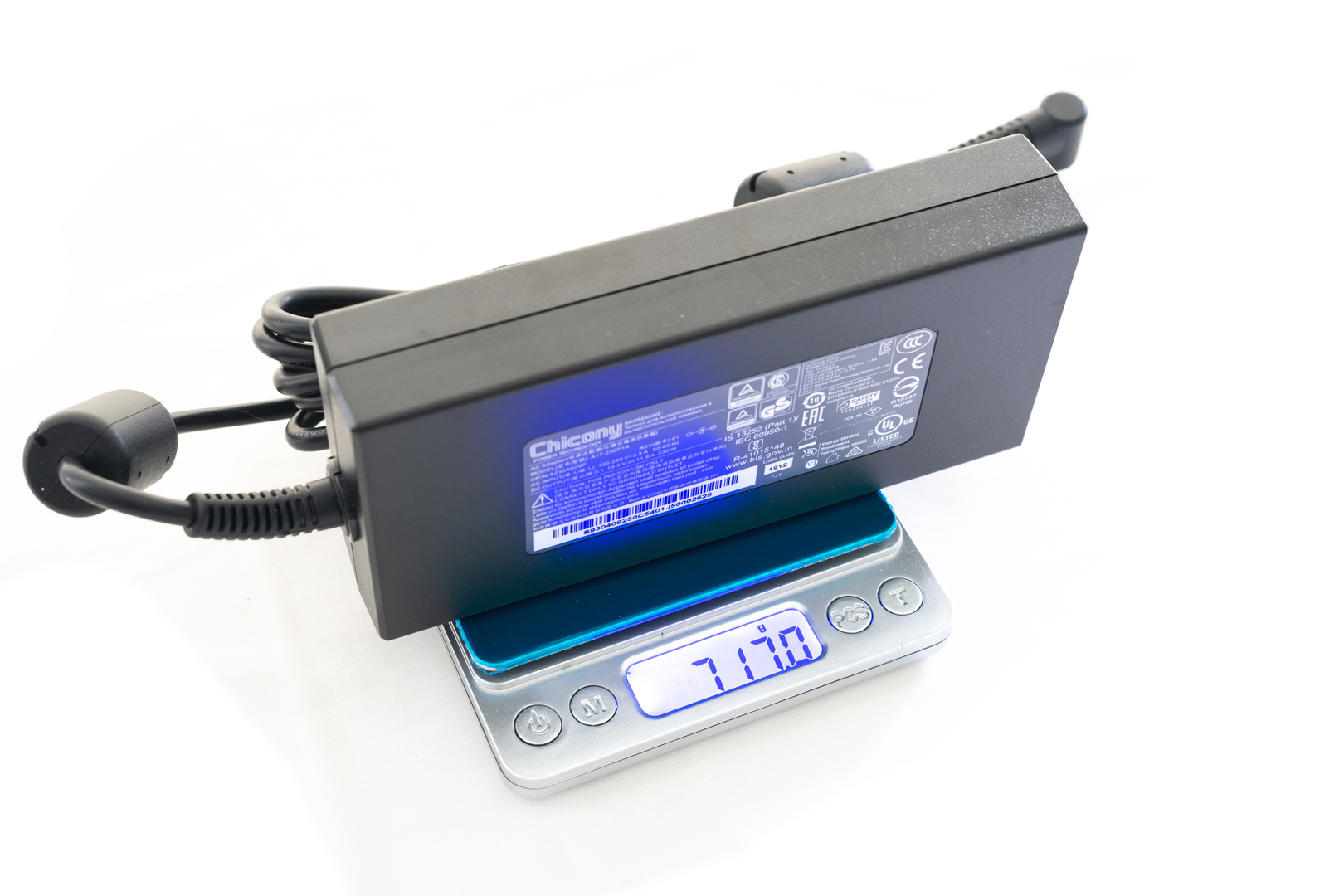
the main body is warped by a double-layered suit which has an anti-static layer and a black fabric layer

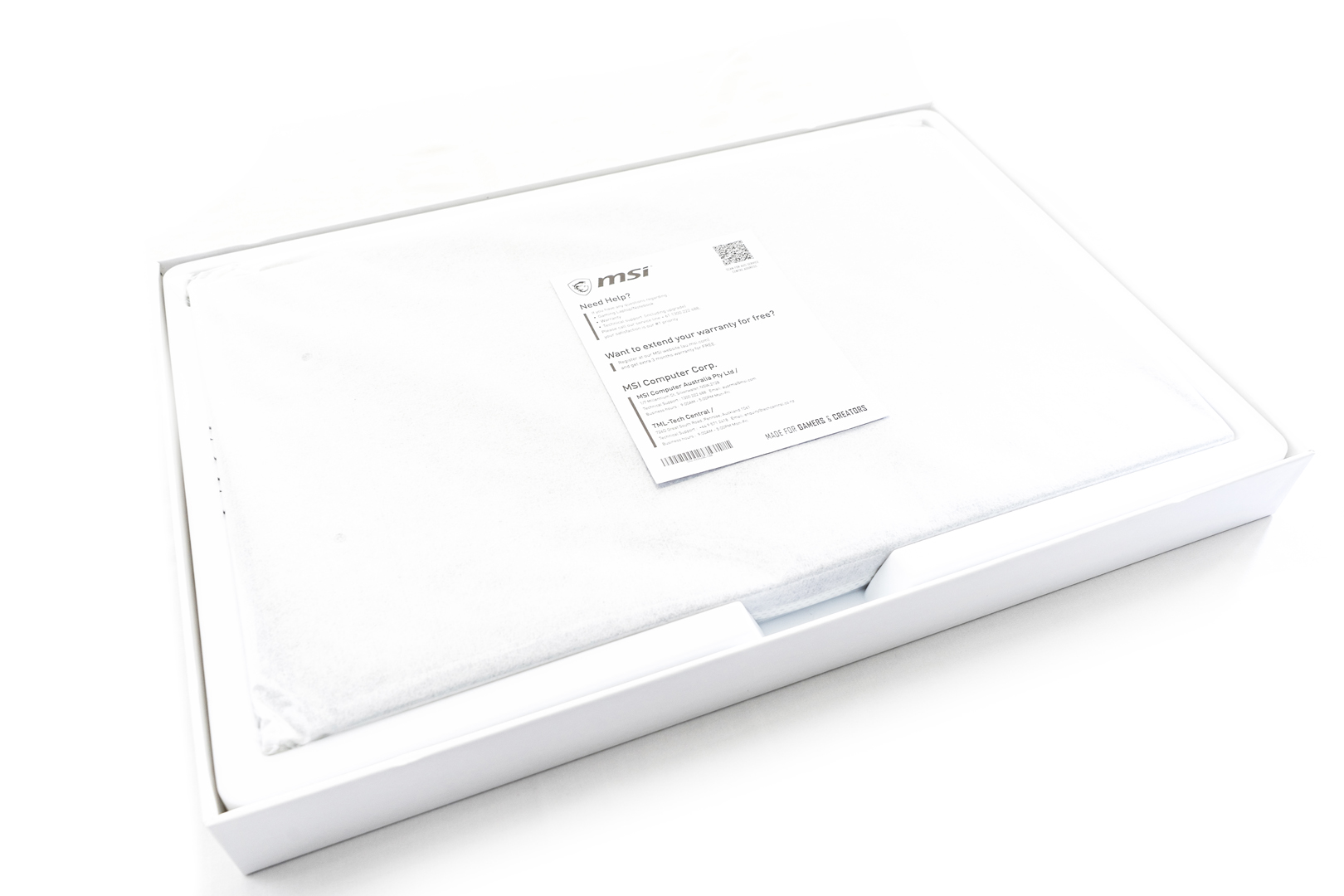
Product Analysis
The main looking of Creator 17

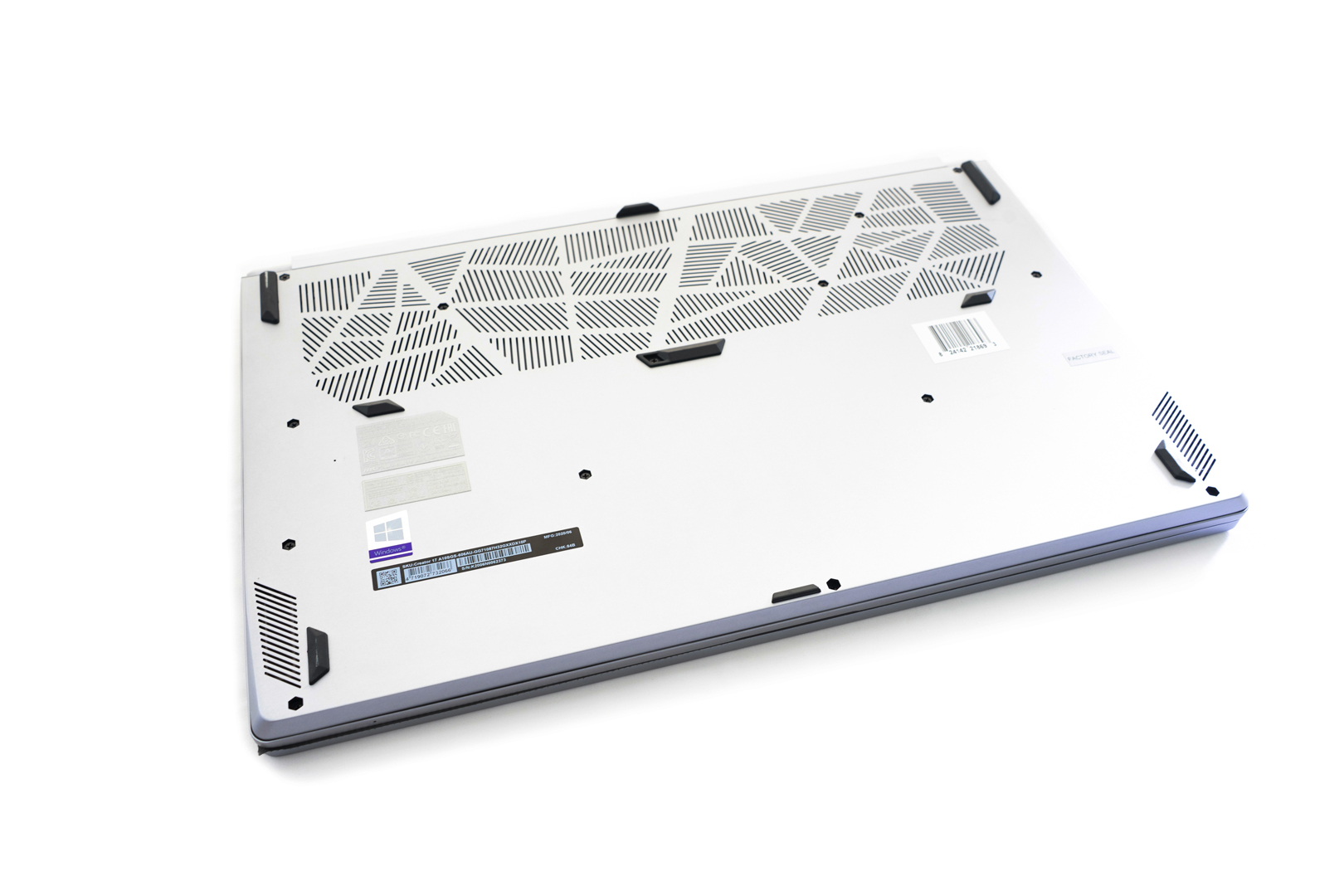
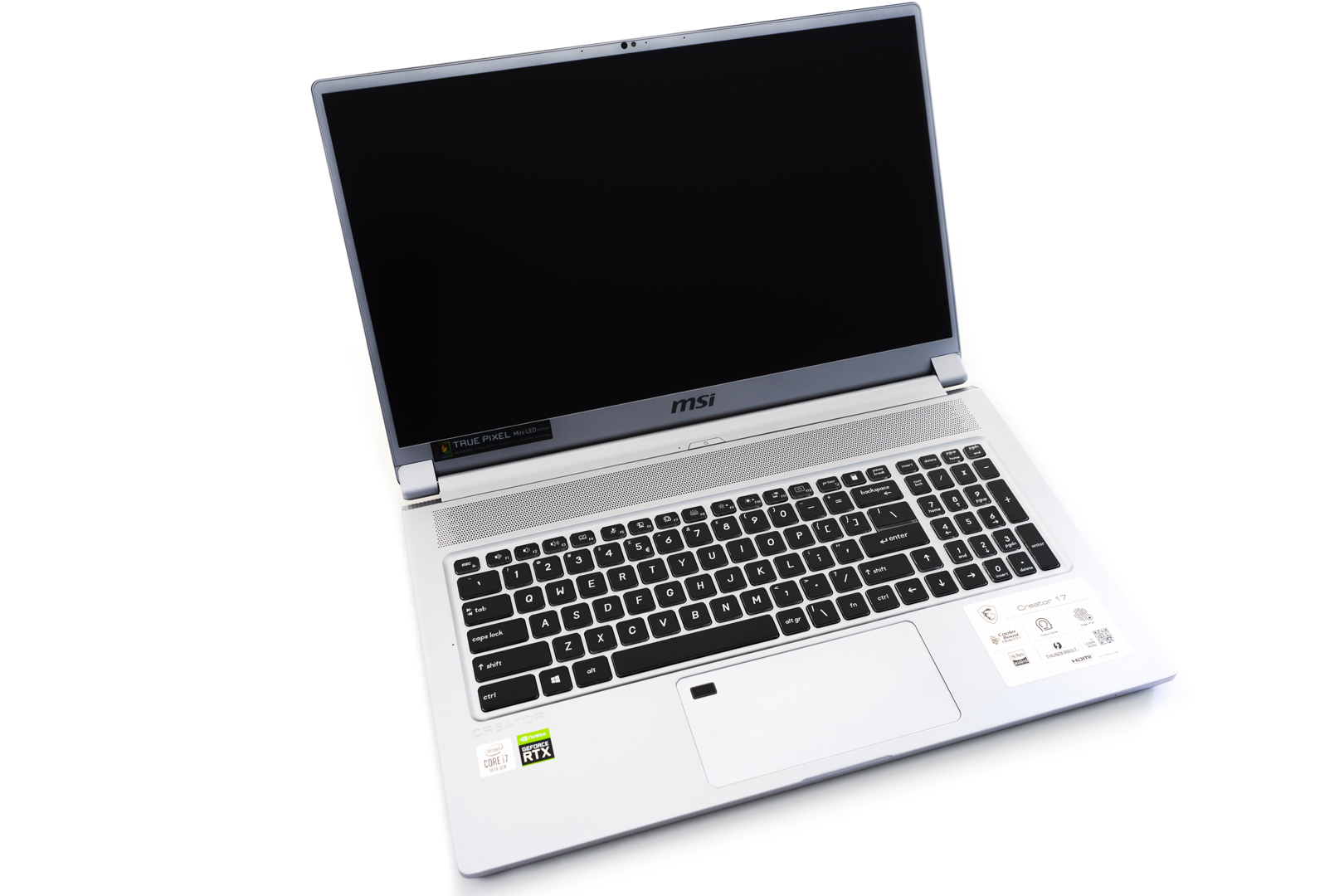
The Intel 10th gen logo and Nvidia RTX logo stickers
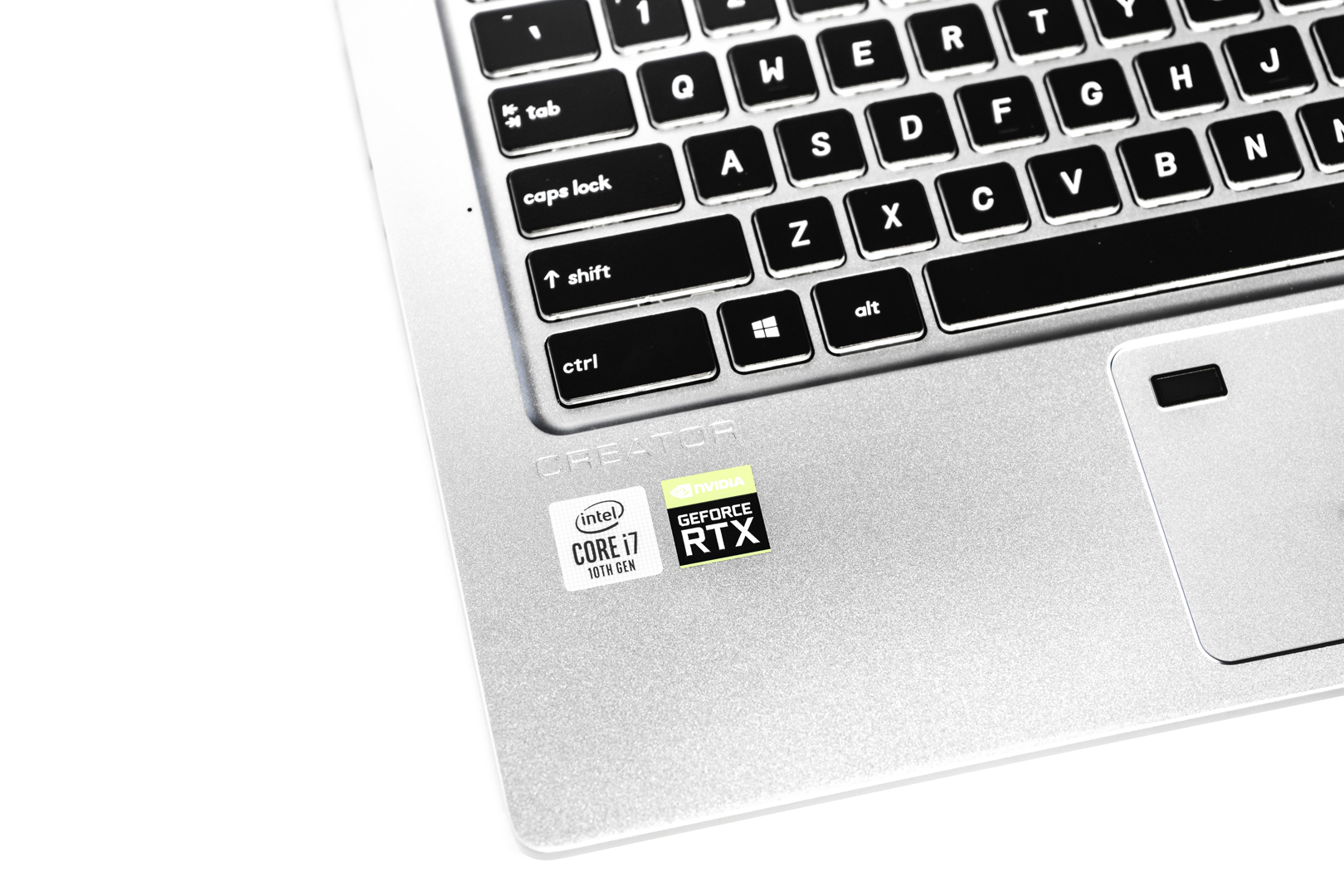
The Creator 17 back transparent stickers

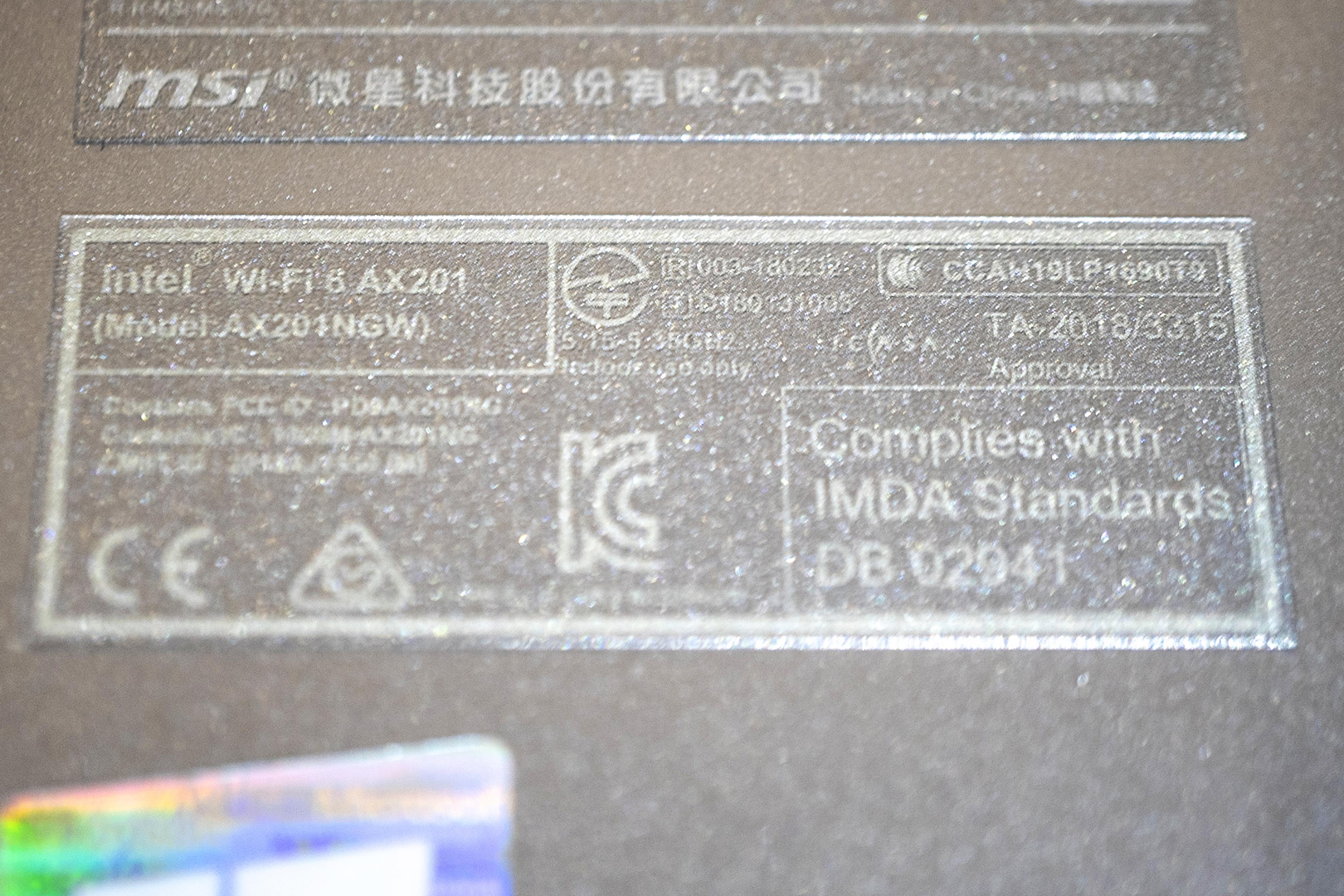
The full-sized numeric keypad has the chiclet design and a tight feel with no loose corners

The touchpad size is integrated with a TPM v2 chip to enhance the security
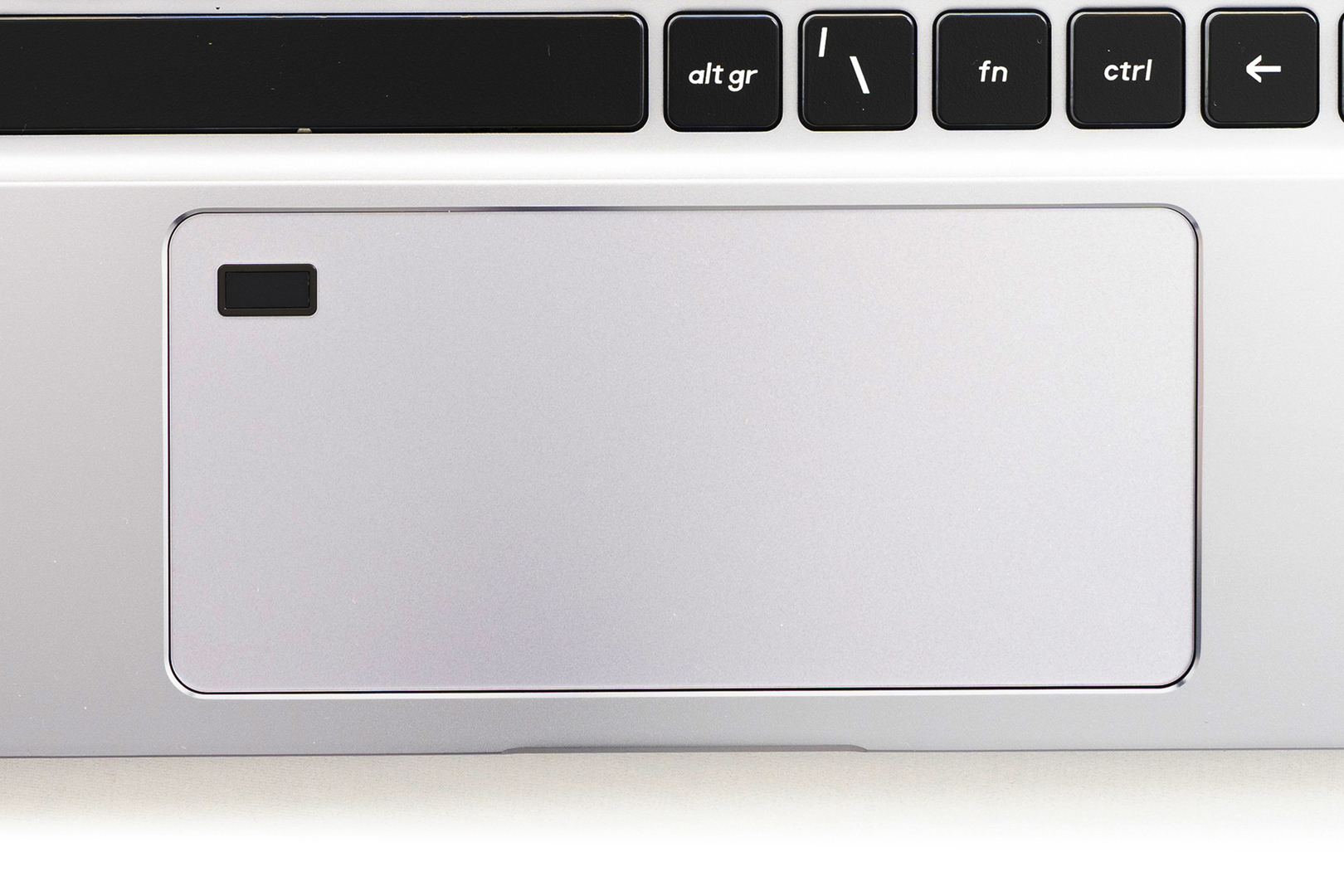
The 720p IR HD camera on the top of the B cover is next to the built-in directional noise reduction microphone
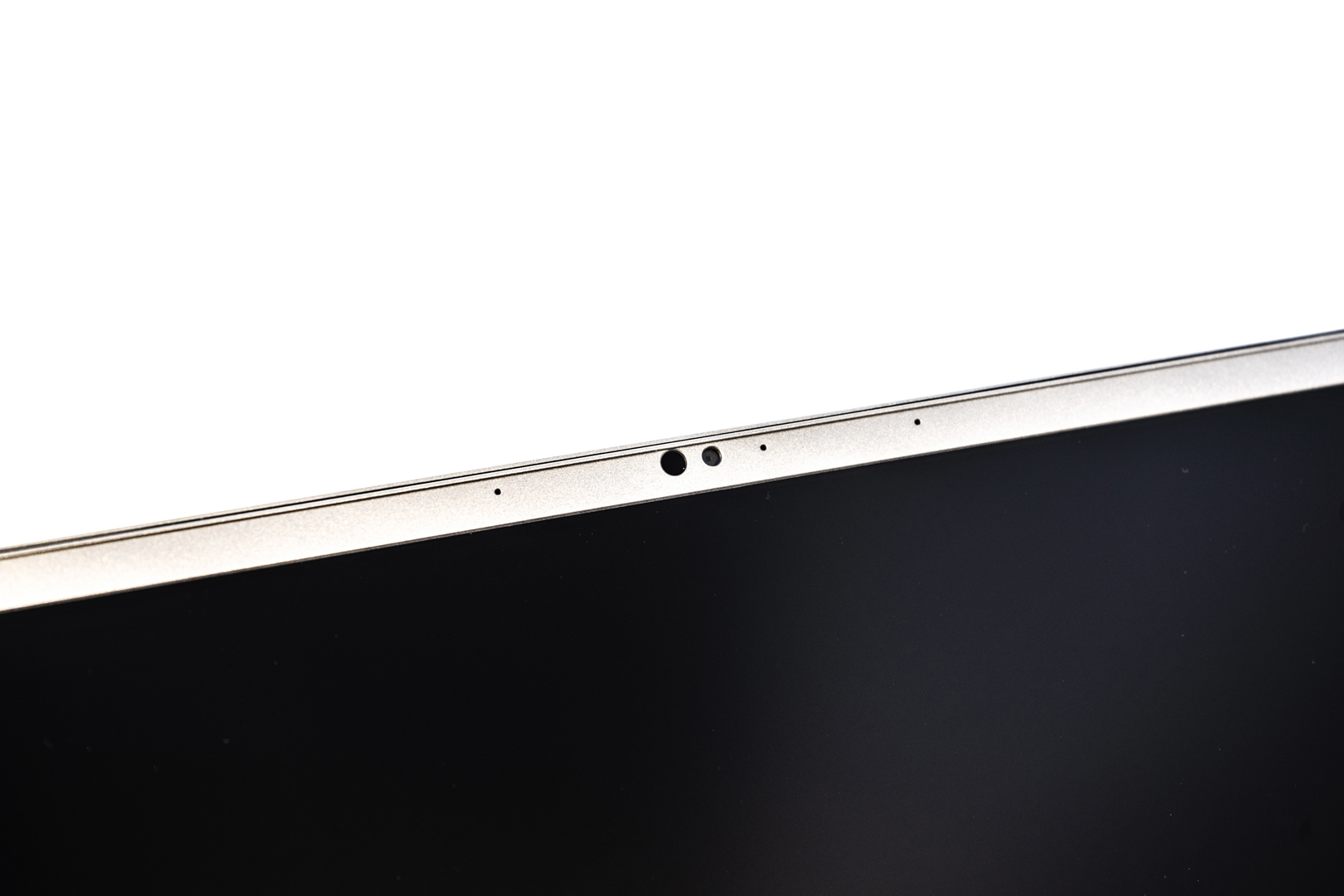
The chamfered corners are slightly rounded and without sharp edges

The design of the rear shaft is fancy and smooth
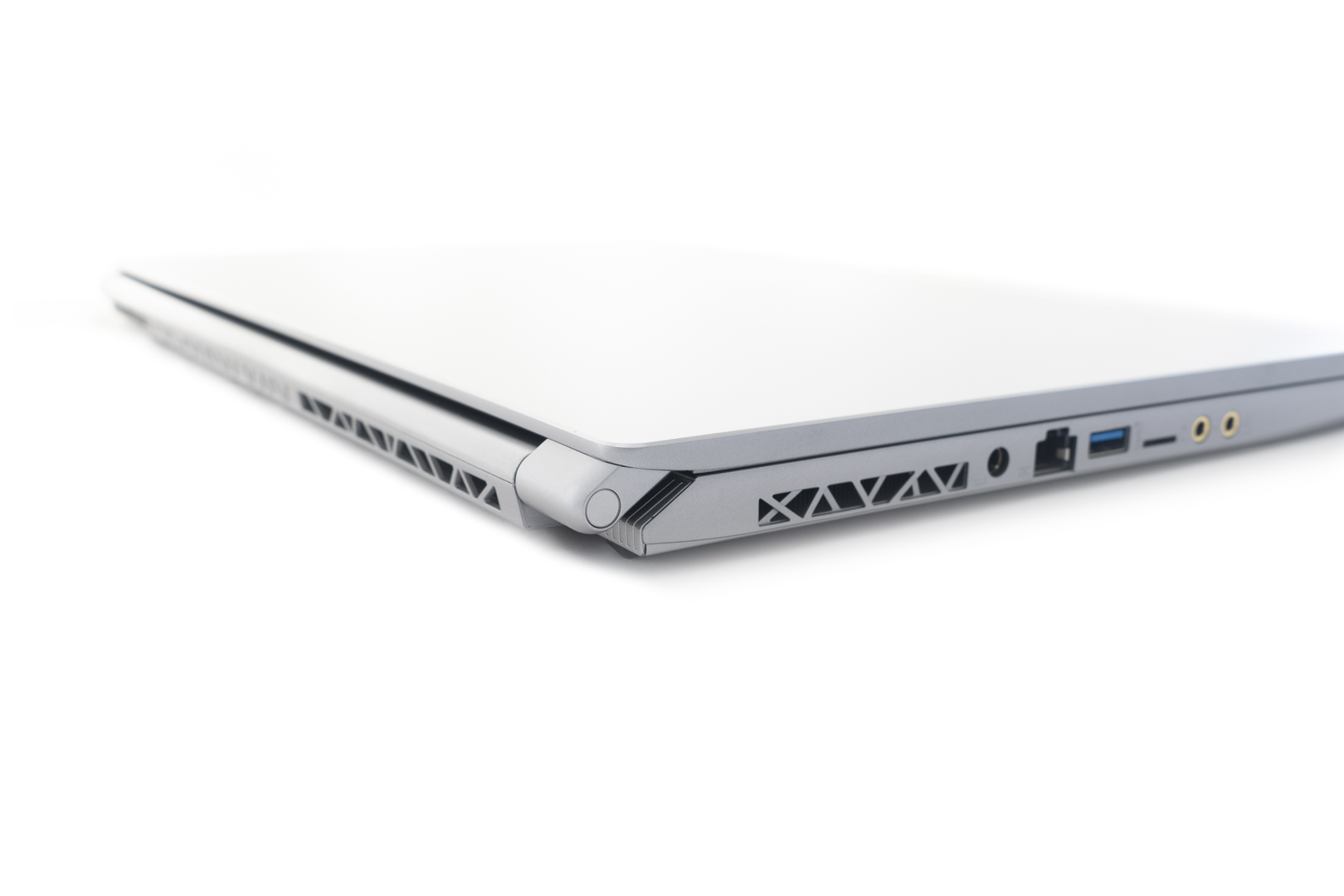
The laptop front side – Smooth design with a battery indicator on the right side

The laptop rear side – Not symmetrical, but the opening area is large enough to provide a better air duct

The laptop right side – 1 x Type-C(USB3.2 Gen2), 2 x Type-A(USB3.2 Gen1), 1 x Type-C(USB3.2 Gen2 / DP / Thunderbolt™3) with PD charging, 1 x (4K @ 60Hz) HDMI, Kensington lock port

The laptop left side – Power jack, 1 x 2.5Gb LAN, 1 x Type-A(USB3.2 Gen1), 1 x MicroSD slot, Microphone jack, Headphone jack

The laptop weight: 2.38KG, 3.1KG total with AC adapter and power cable

Screen Analysis
The screen panel is B173ZAN05.0, 17.3″, 60Hz UHD Mini-LED IPS-level, manufactured by AUO
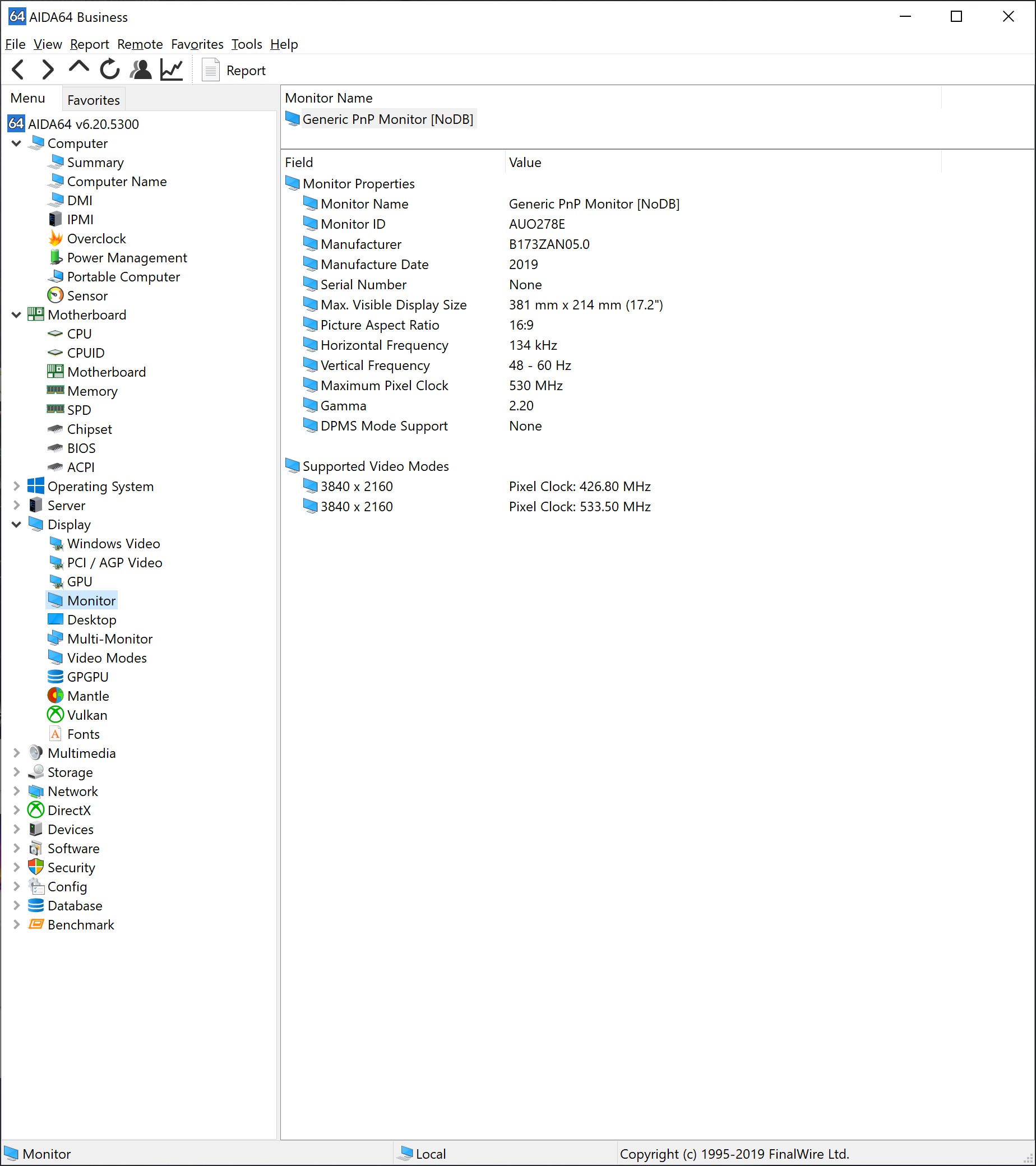
The benefit sticker of this screen
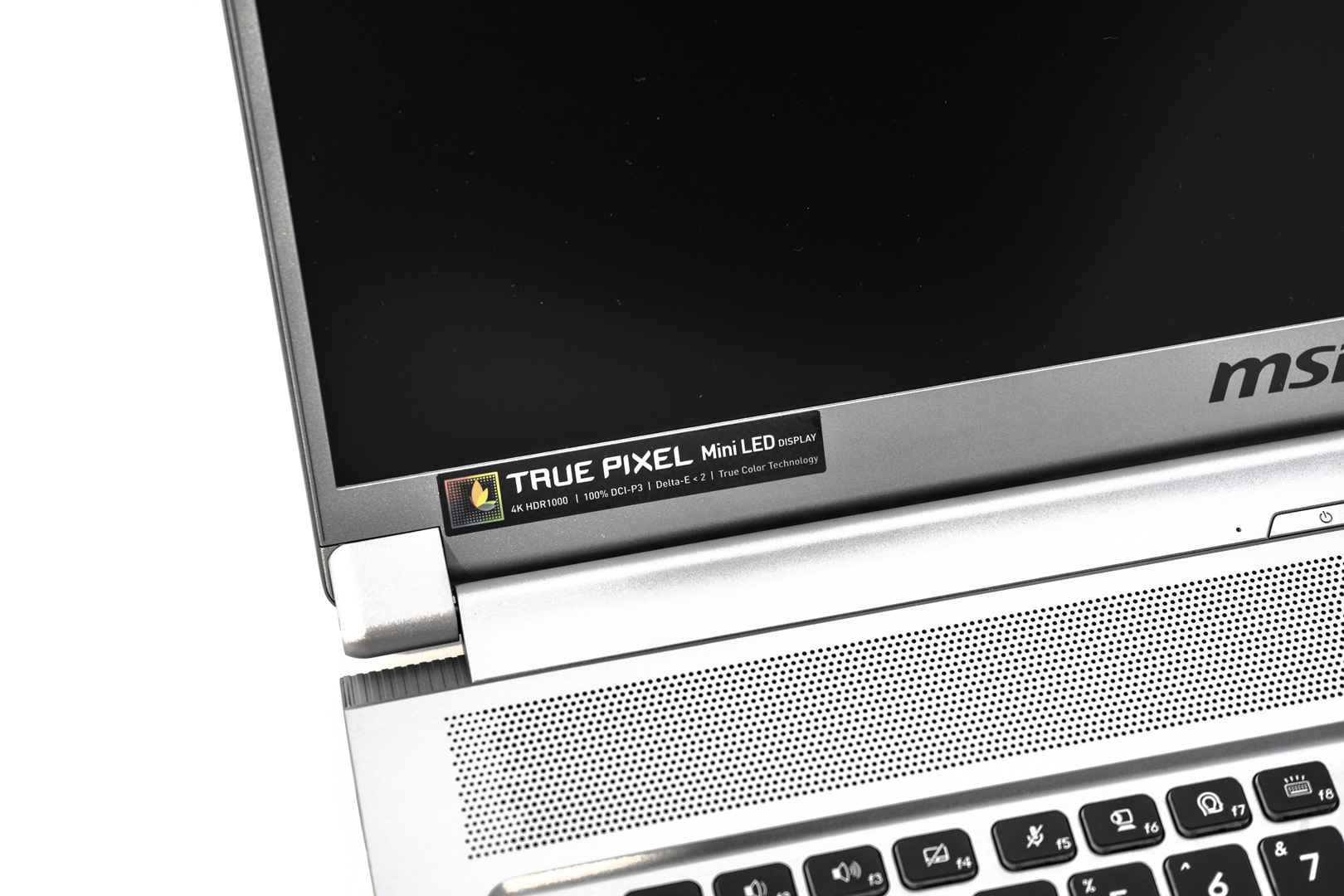
Screen Calibration
The Creator 17 is using a UHD LG B173ZAN05.0 IPS-level panel. According to MSI, this mini-led screen has a 100% DCI-P3 coverage and also, HDR1000 support will enable the ultimate gaming and movie performance.
The Datacolor Spyder 4 Elite will be used to calibrate this panel
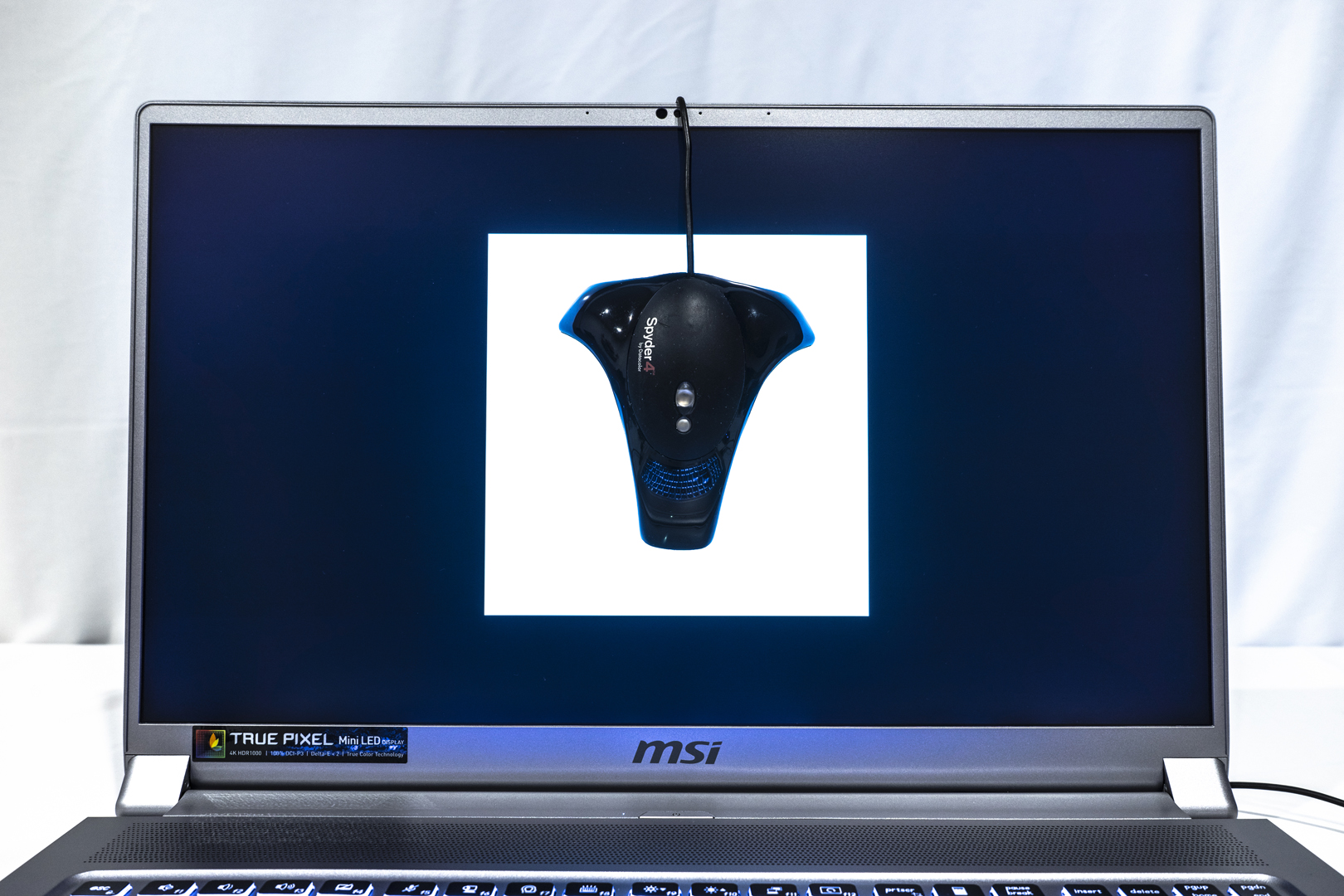
Calibration adjustment settings, the full calibration is without HDR function enabled
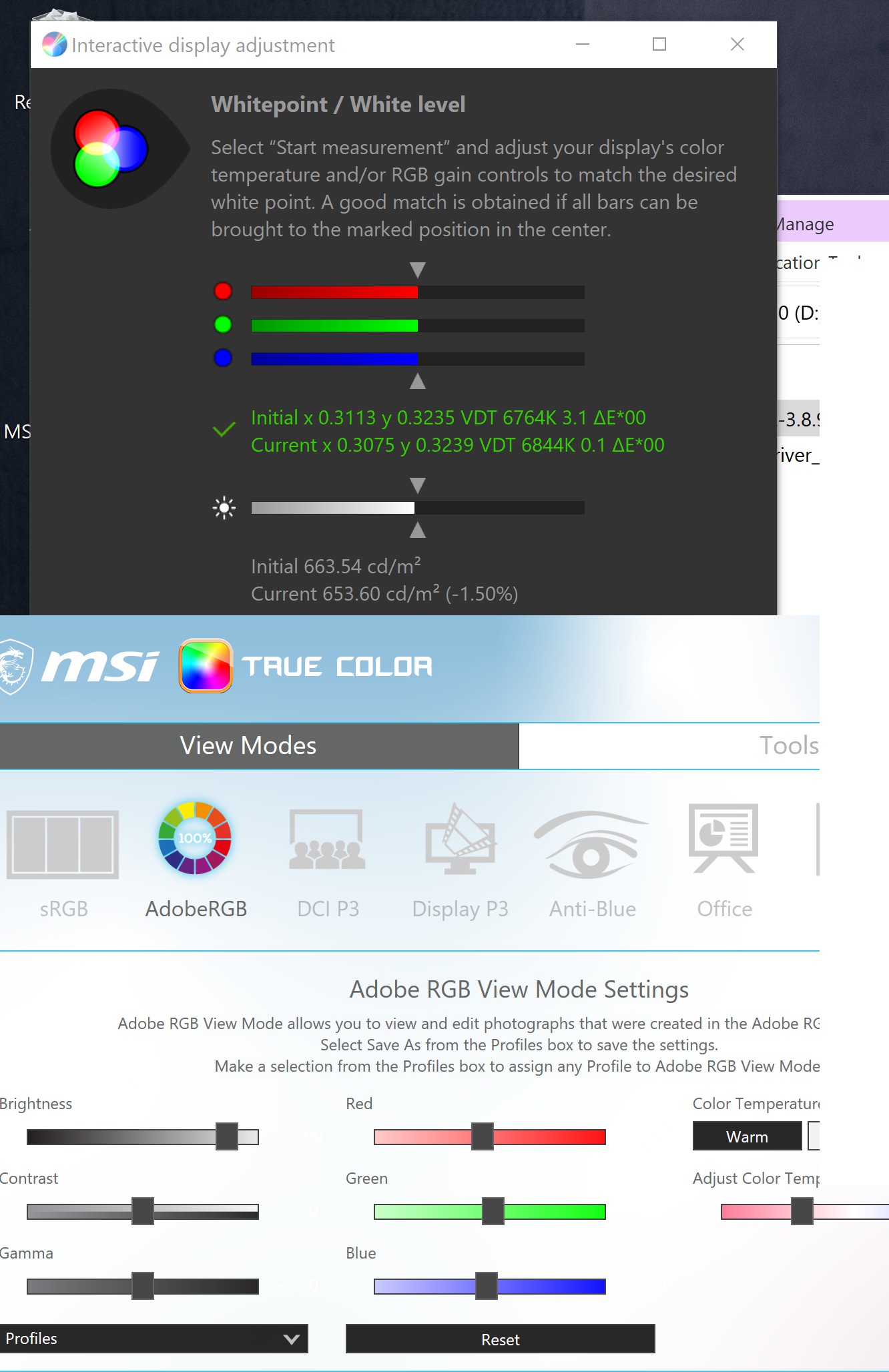
Calibration result: Average △E≈0.11, Maximum △E≈1.59
After calibration, we have a 99.5% of sRGB, 85.1% of Adobe RGB and 87.4% of DCI-P3 coverage

Screen Performance
We took some snapshots from the laptop, all source videos are from the Internet for testing purposes.
The video player we are using ‘Potplayer’ with hardware acceleration enabled
8K video playback resource using status
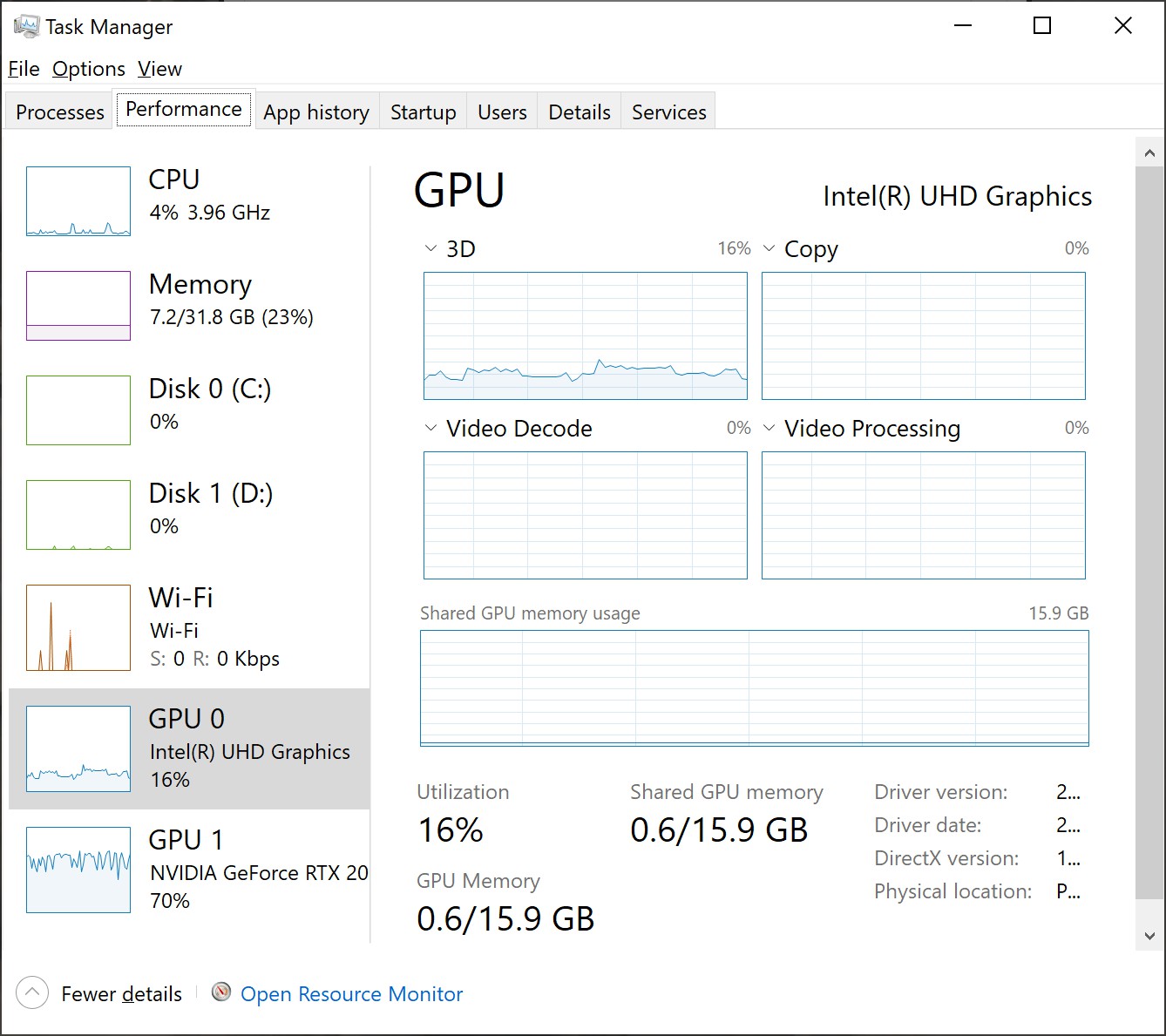
RGB LED backlight distribution
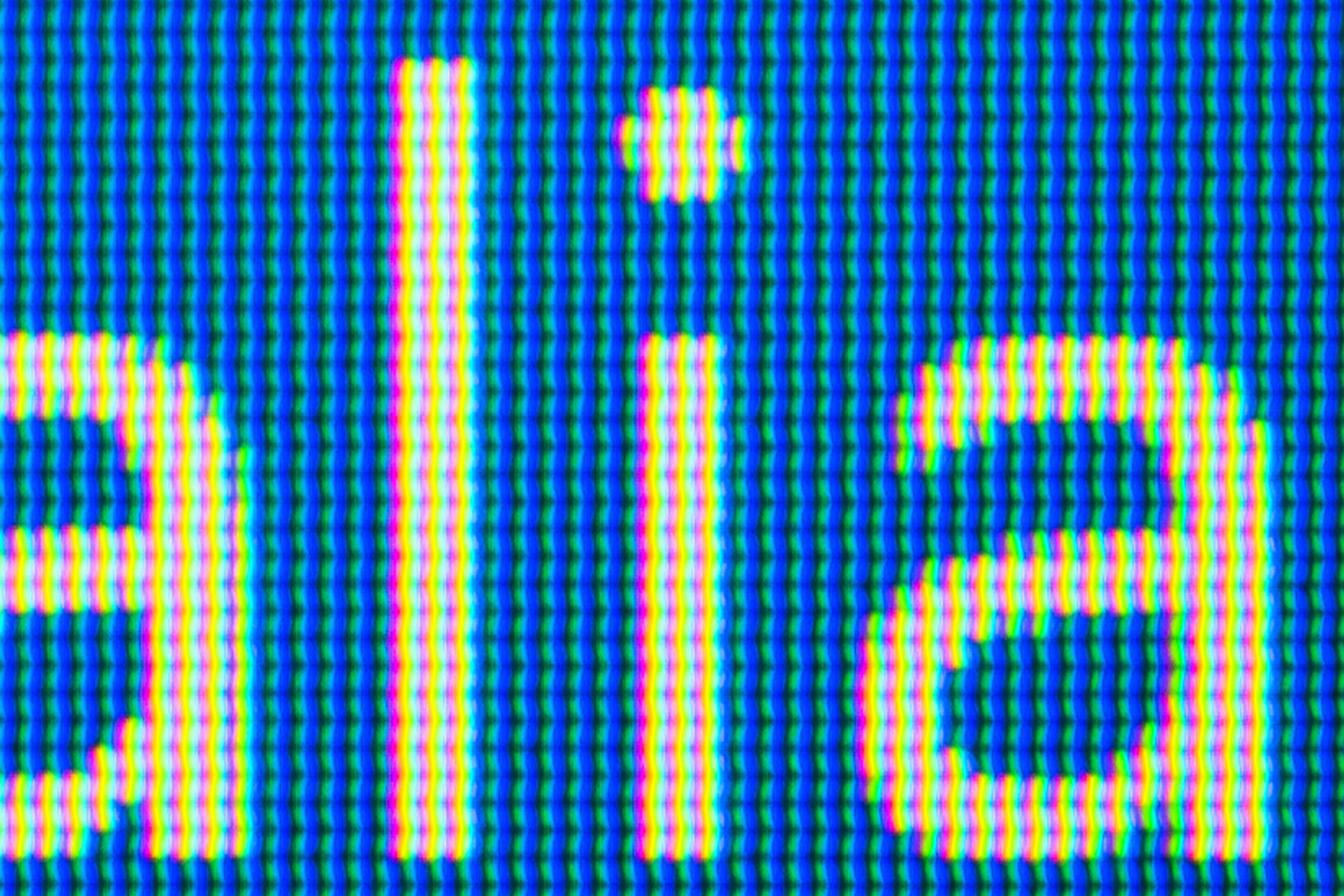


Hardware & Software Introduction
AIDA64 LAN and WIFI detail
LAN chip – Intel I225-V 2.5Gb LAN
WIFI Card – Intel Wifi6 AX 201 with Bluetooth v5.1

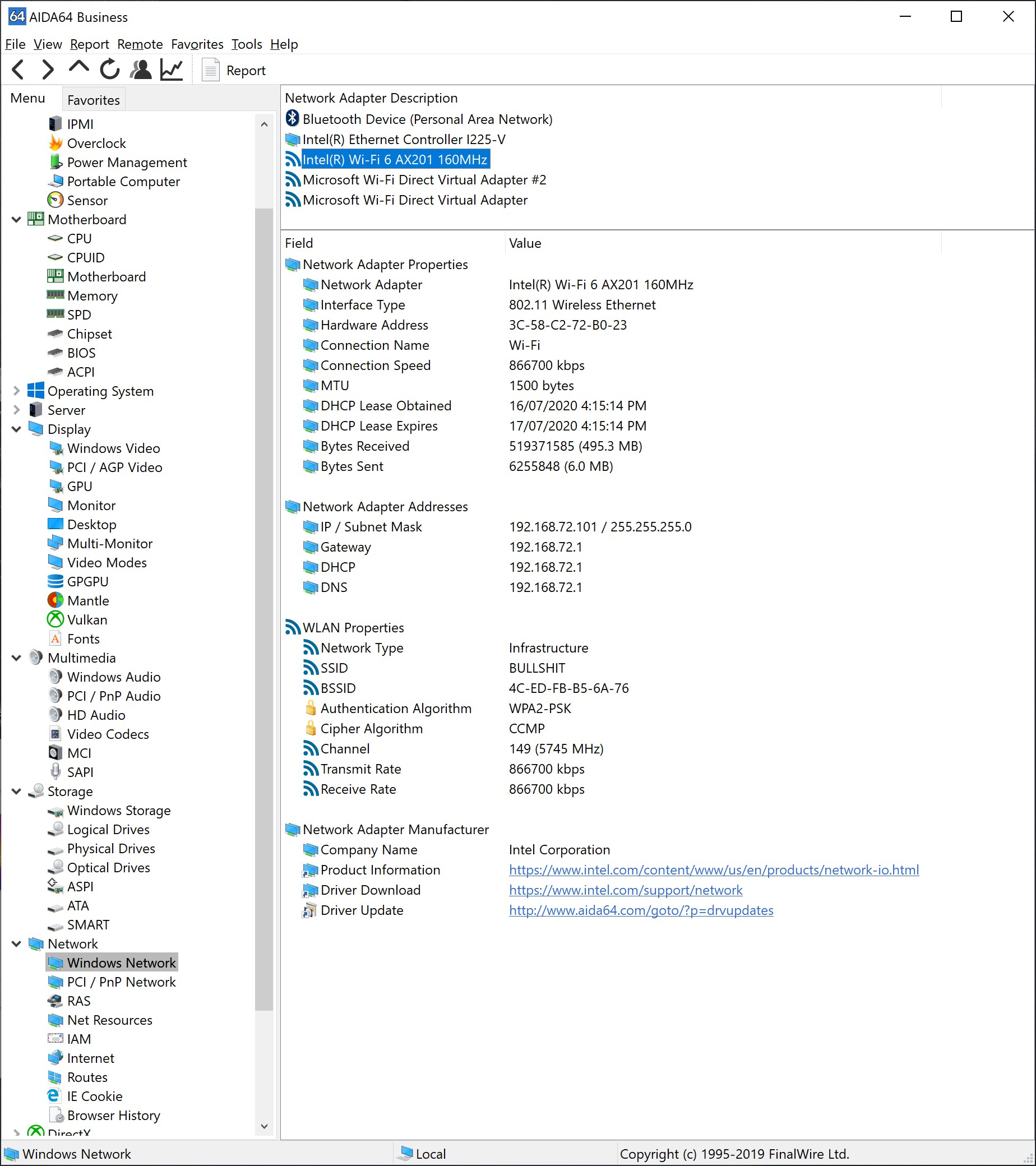
MSI Creator Center – Creator Mode, allows user to turn on/off software acceleration

MSI Creator Center – System Monitoring, allows user to check the machine details
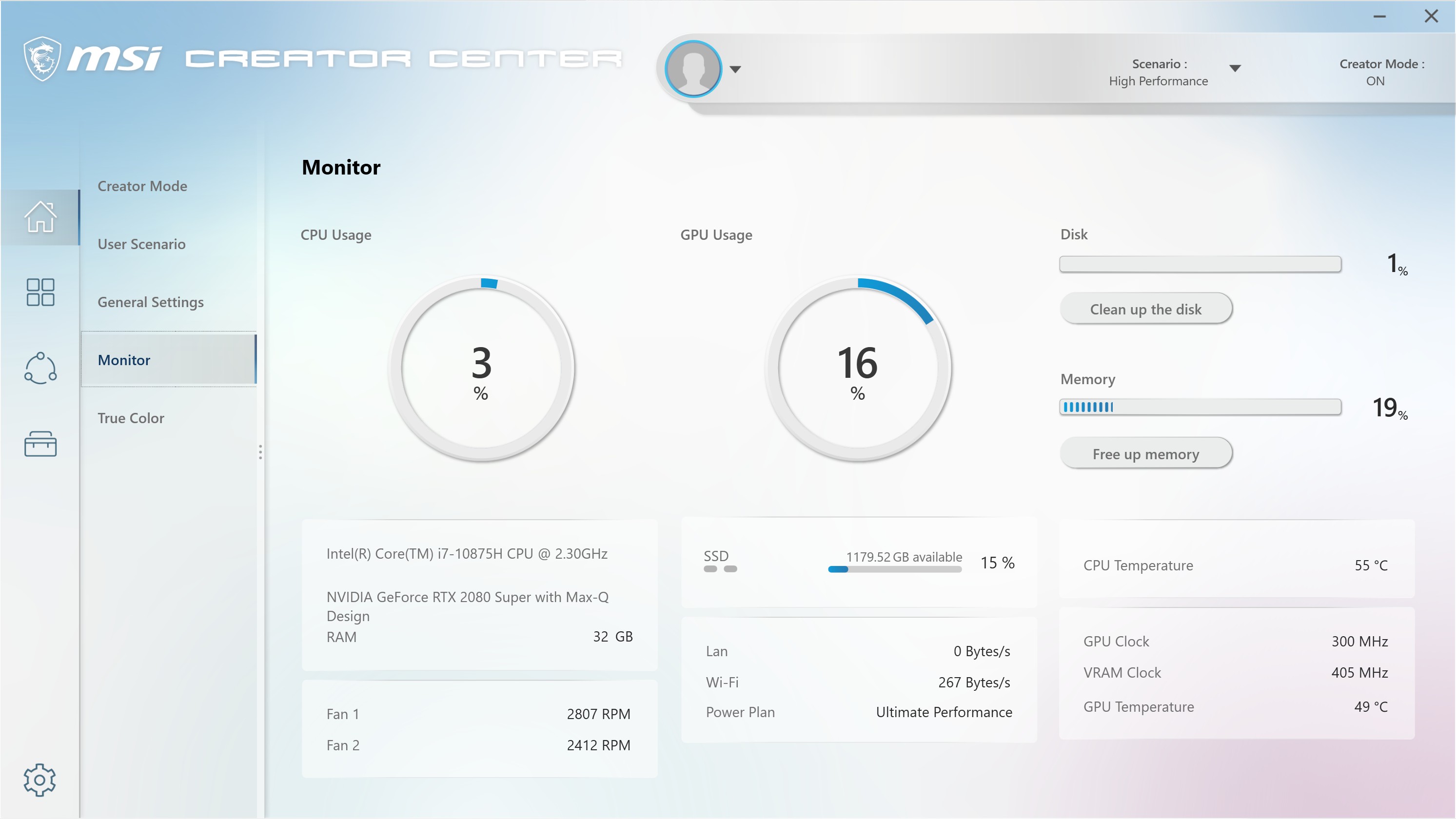
MSI Creator Center – User Scenario, allows user to change the performance profile

MSI Creator Center – Battery Master, allows user to check and switch the battery performance

MSI Creator Center – General Settings, allows user to change key functions for OS
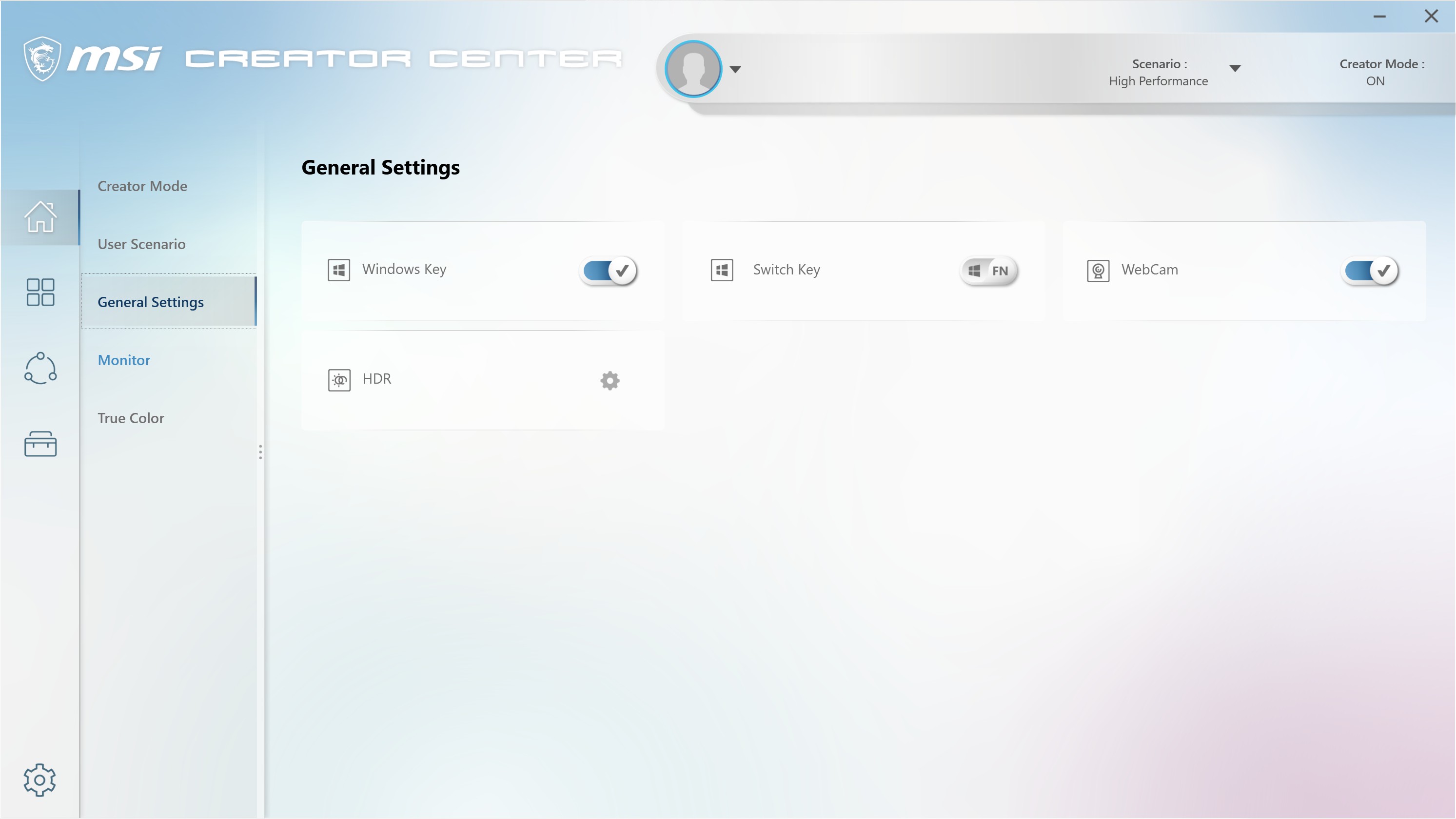
MSI Creator Center – True Color, allows user to adjust the view modes and fine-tune the screen colour


MSI Creator Center – Live Update, allows user to check and update the hardware driver
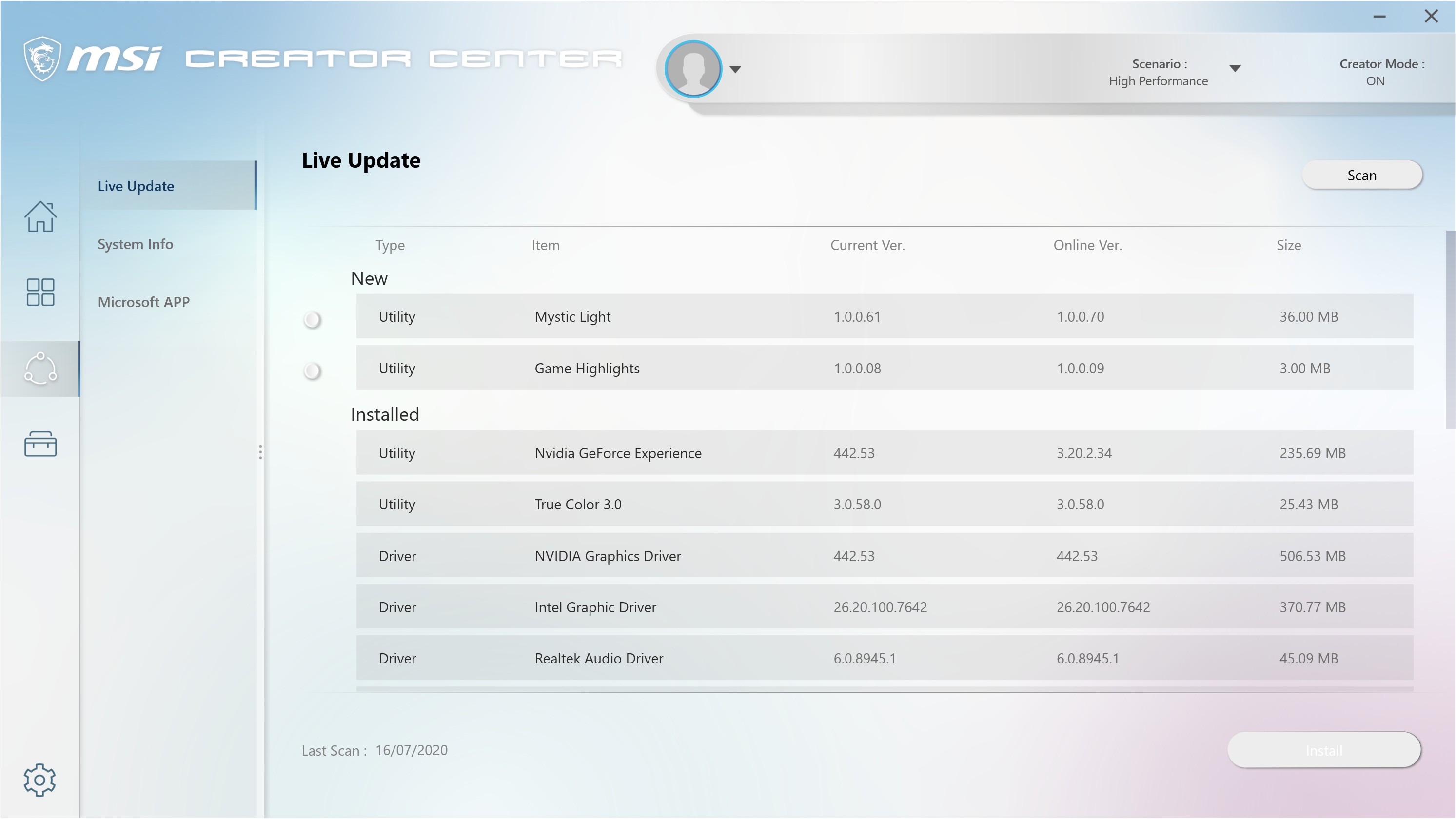
Run-time Benchmark Test
Before the test, we make sure the Ultimate Power Performance has been activated in Win10
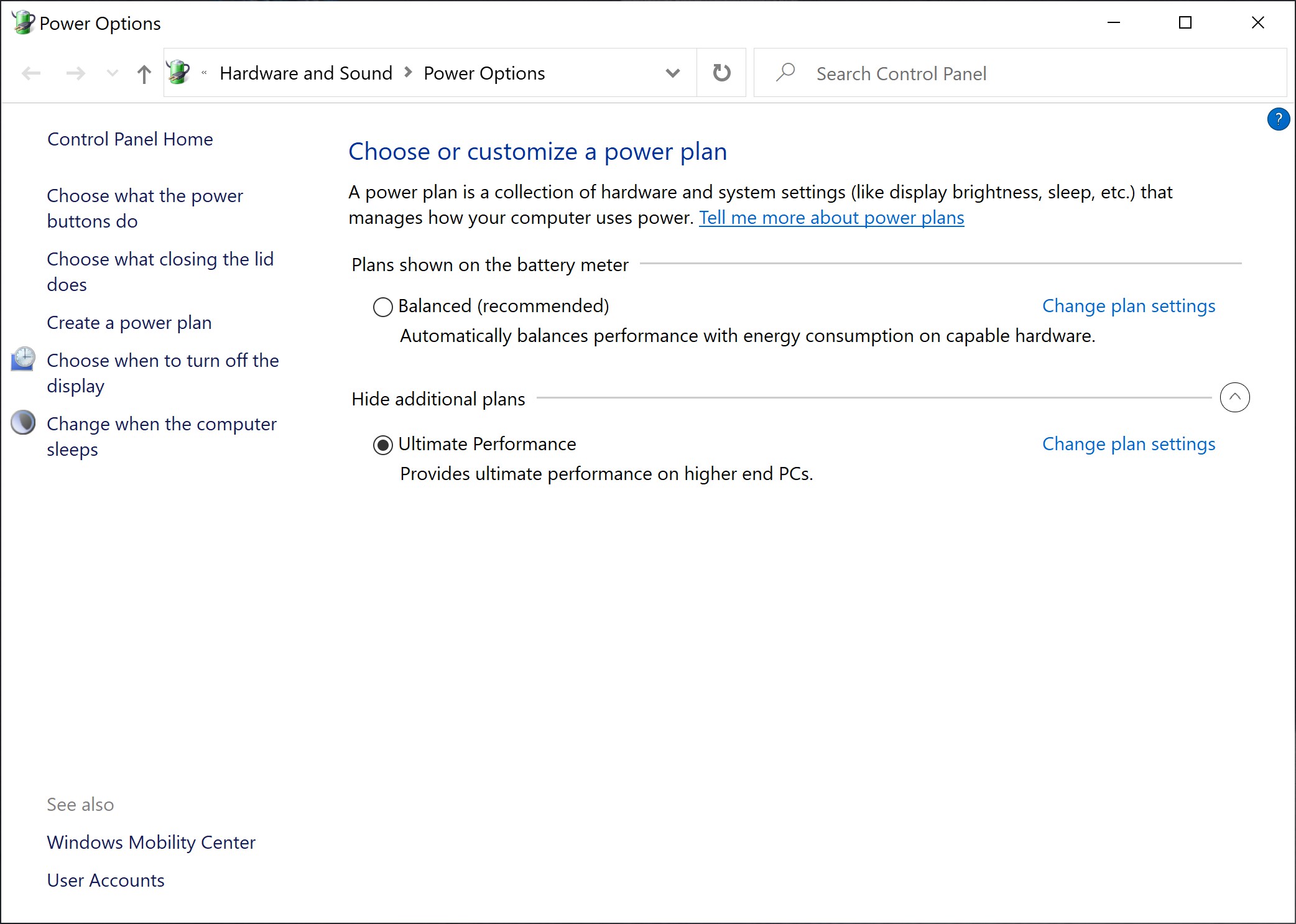
CPU-Z Benchmark – according to the result, there is nearly no difference in single-core speed compared with an i7-10700 on a desktop

AIDA64 Memory & Cache benchmark
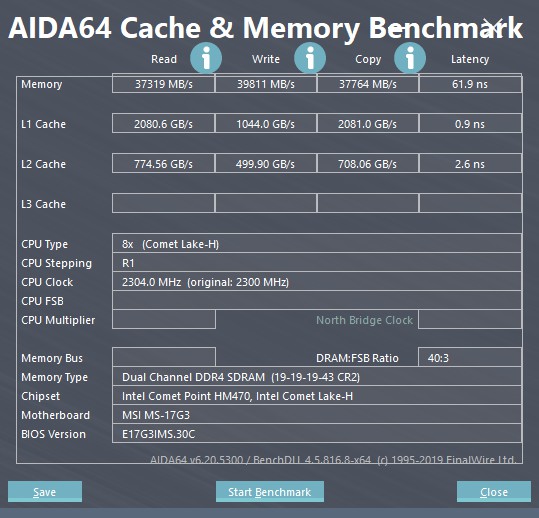
Cinebench R15 Results – Single core & multi-core
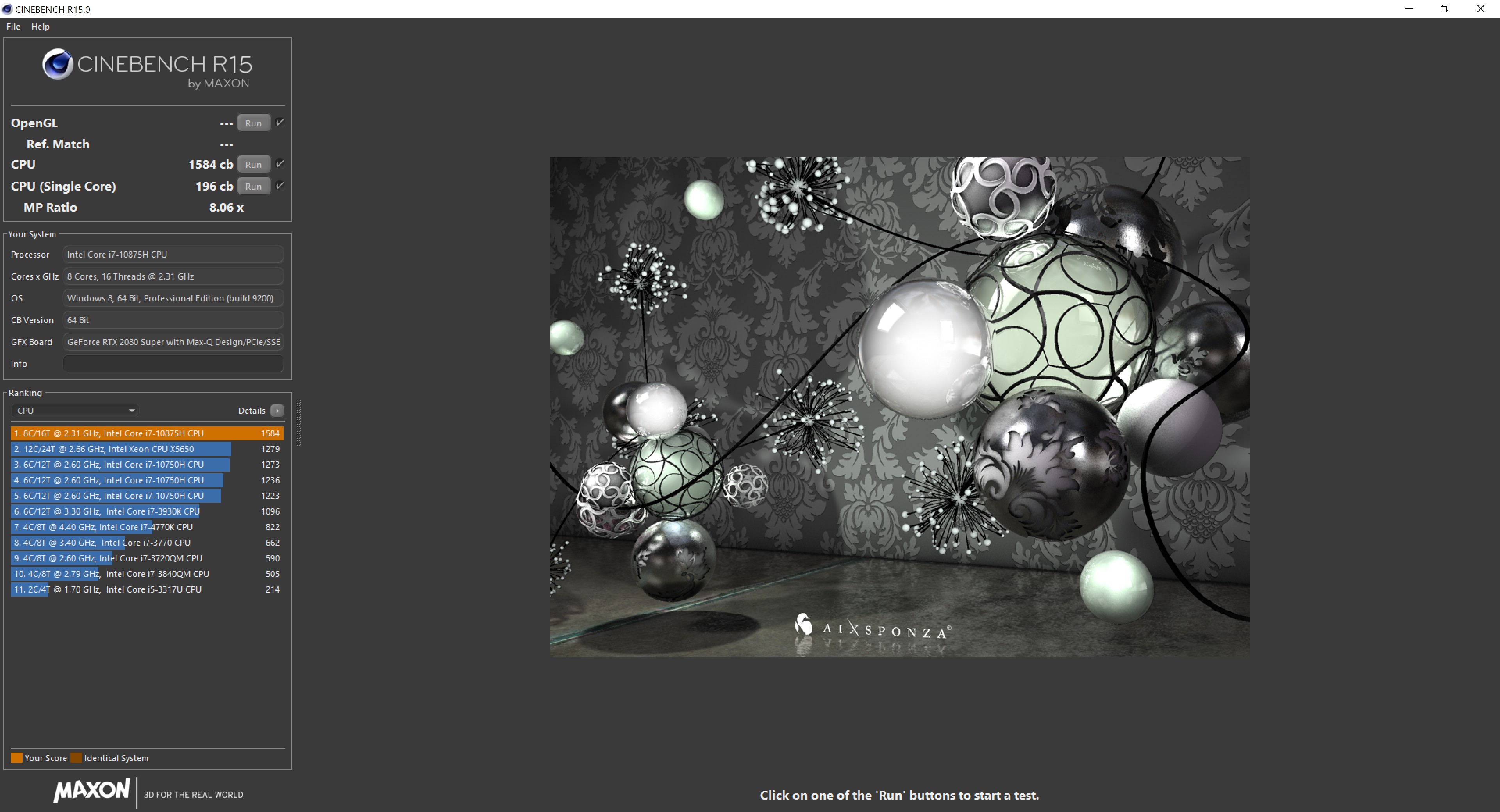
Cinebench R15 Extreme Results – Single core & multi-core
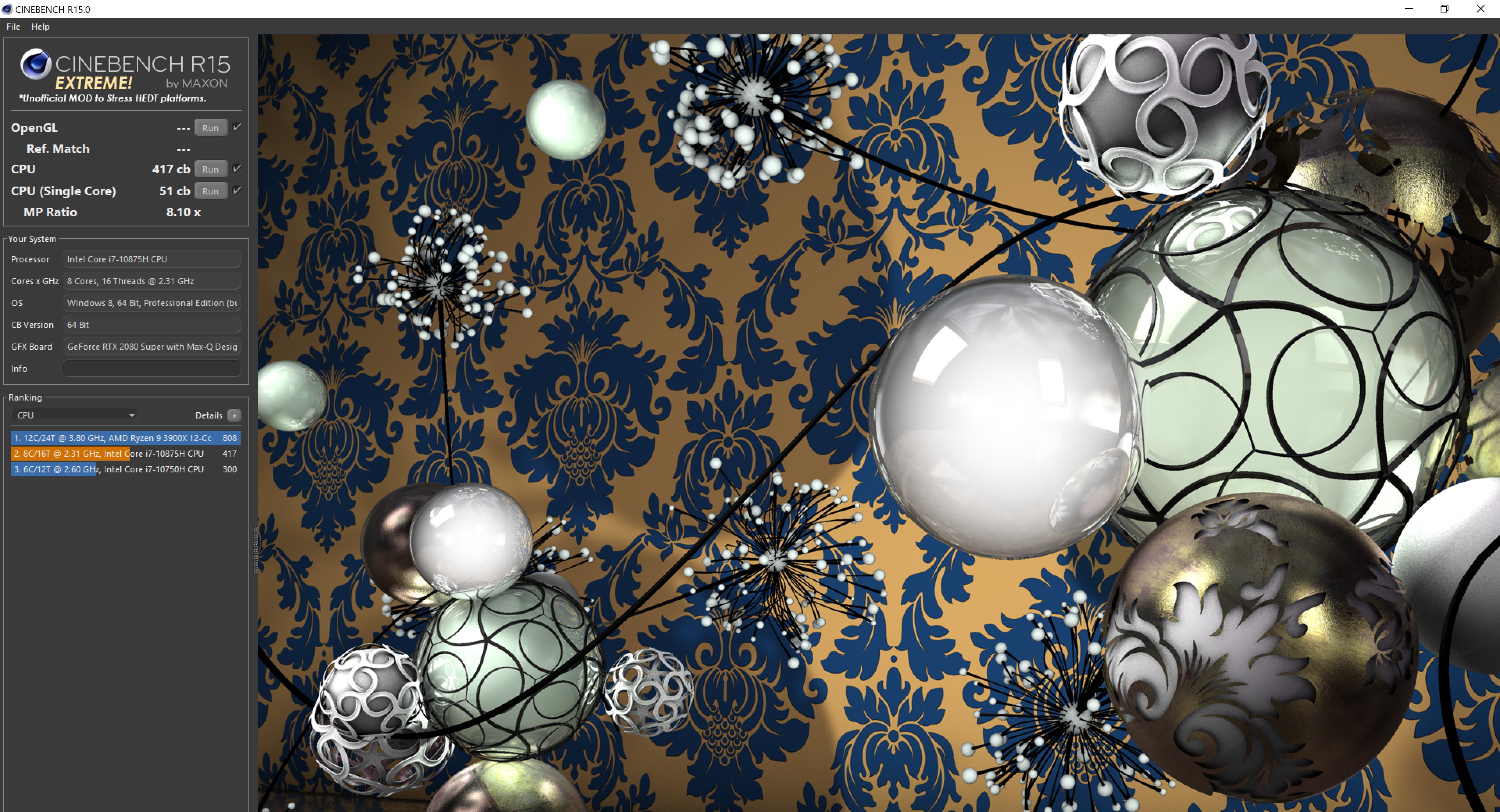
Cinebench R20 Results – Single core & multi-core
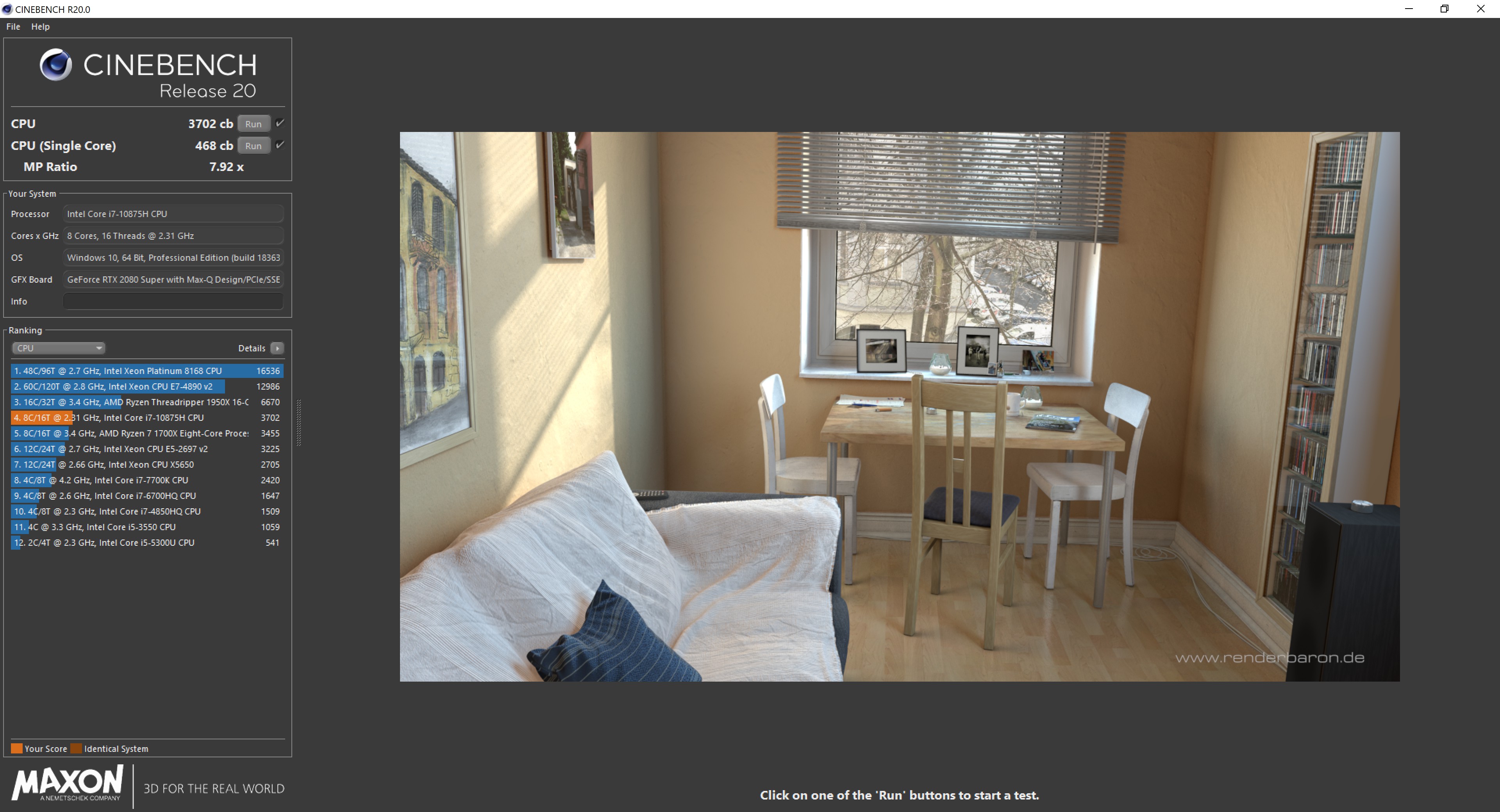
PCMark10 Extension Benchmark: 6,349

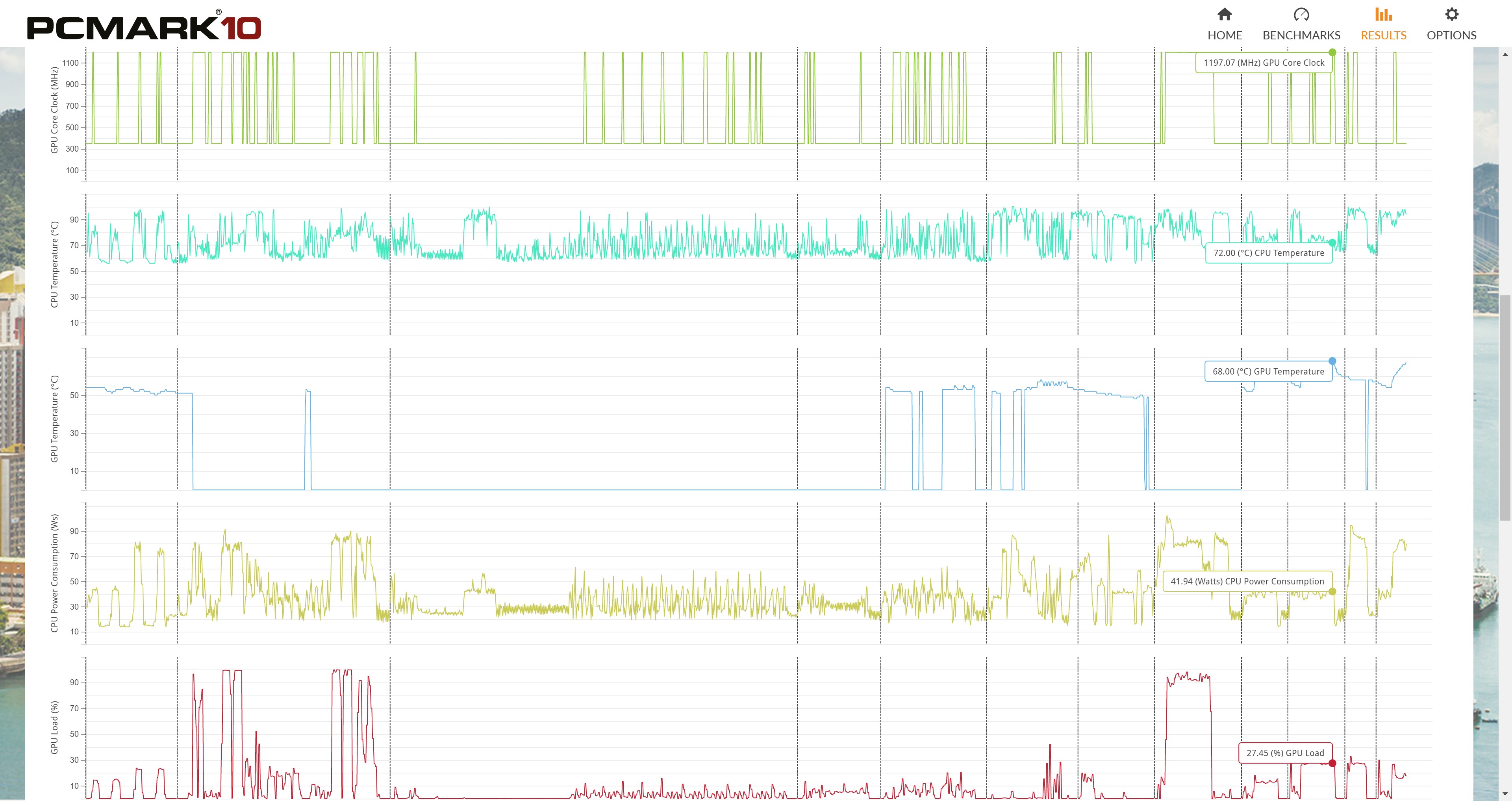
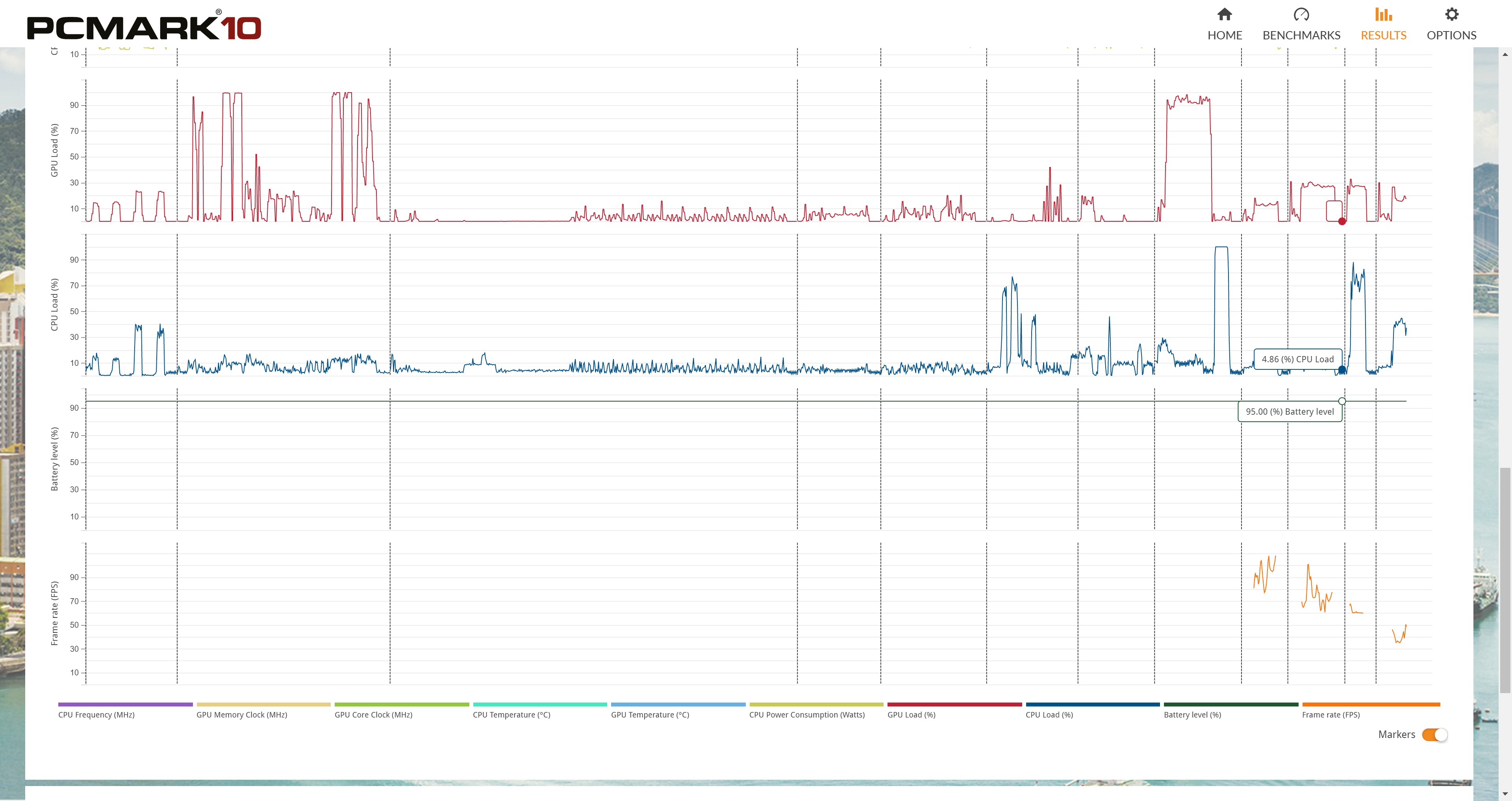

3DMark Time Spy Extreme : 3,569
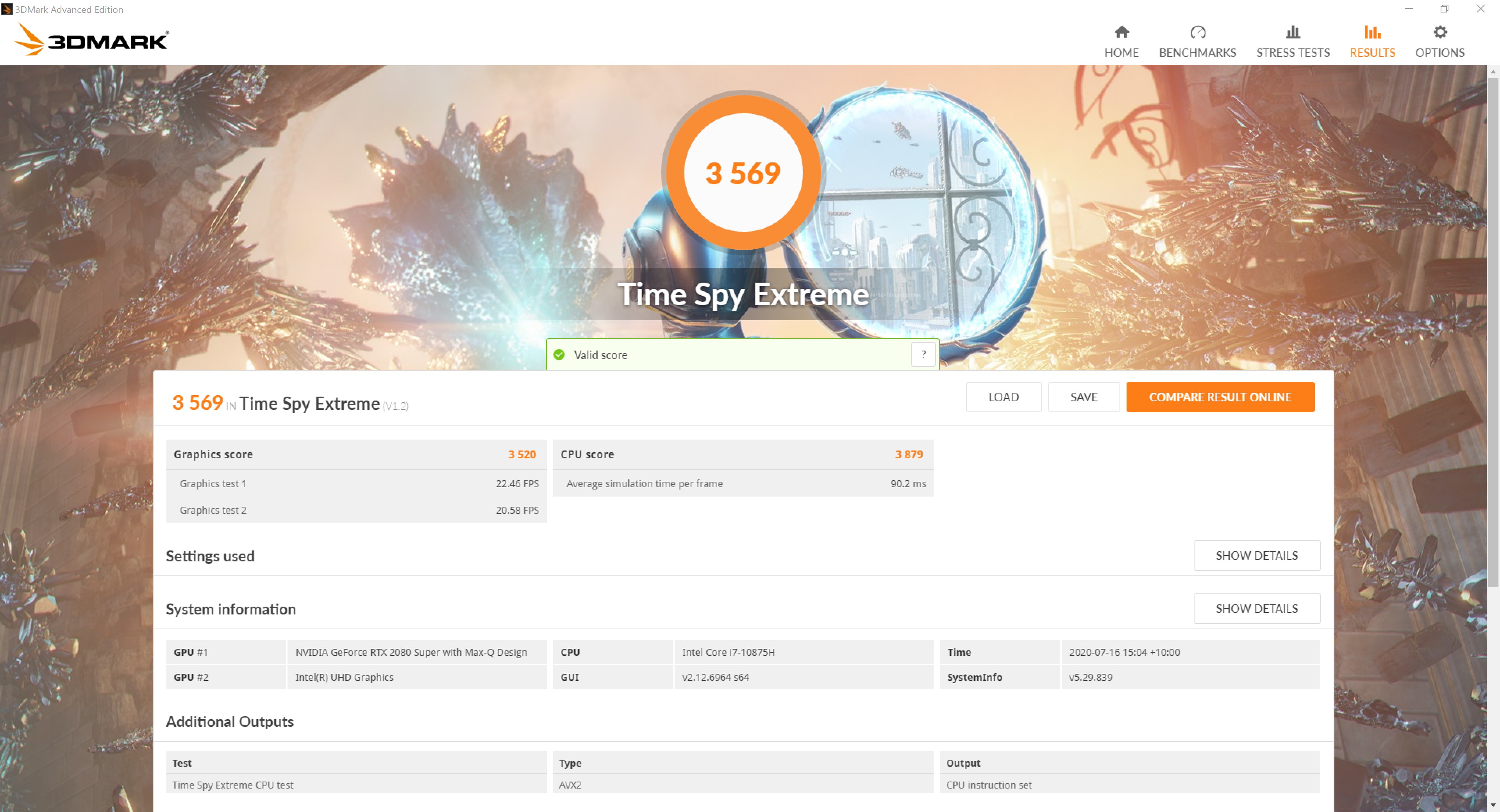
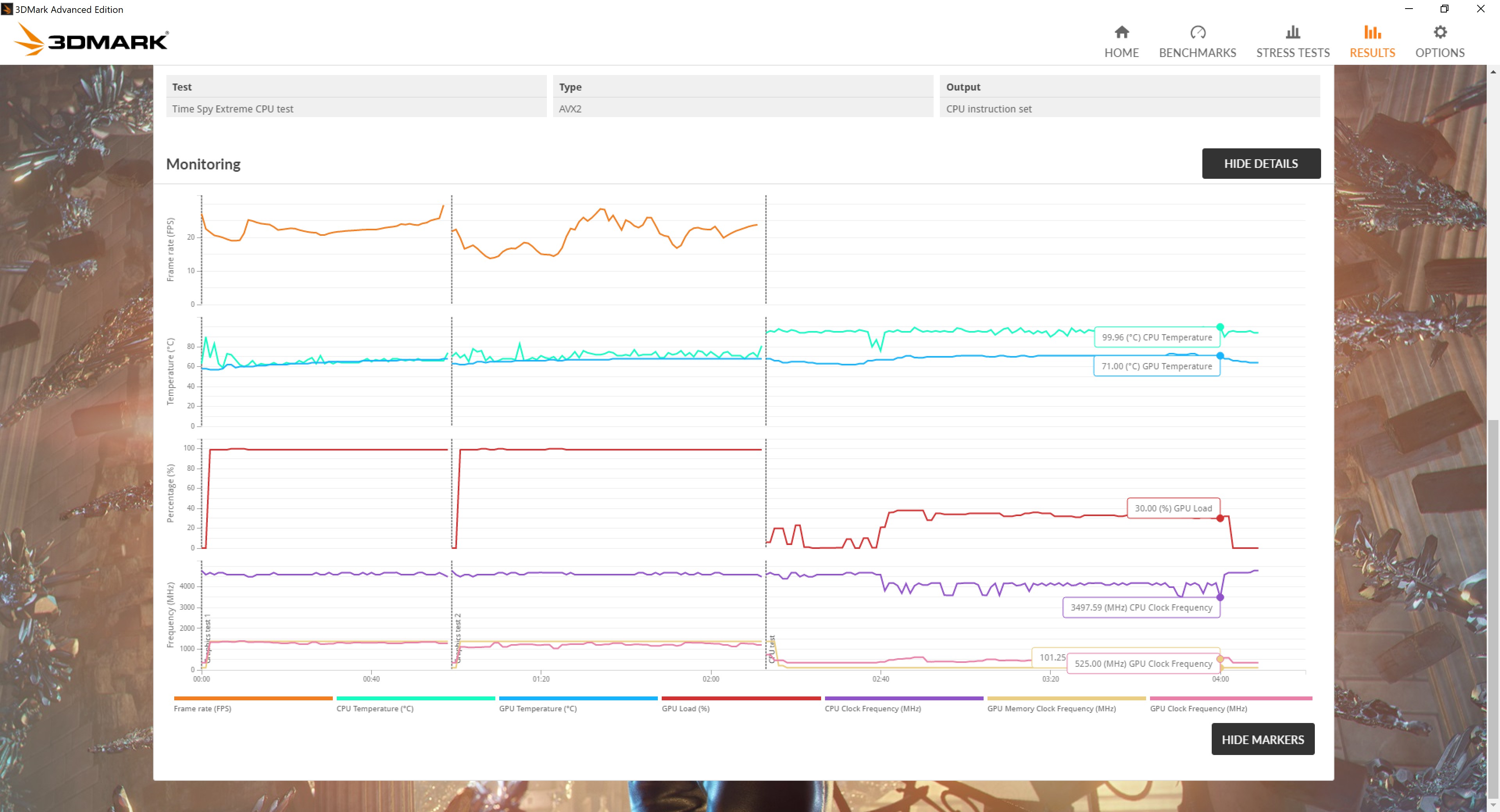
3DMark Fire Strike Extreme : 9,185

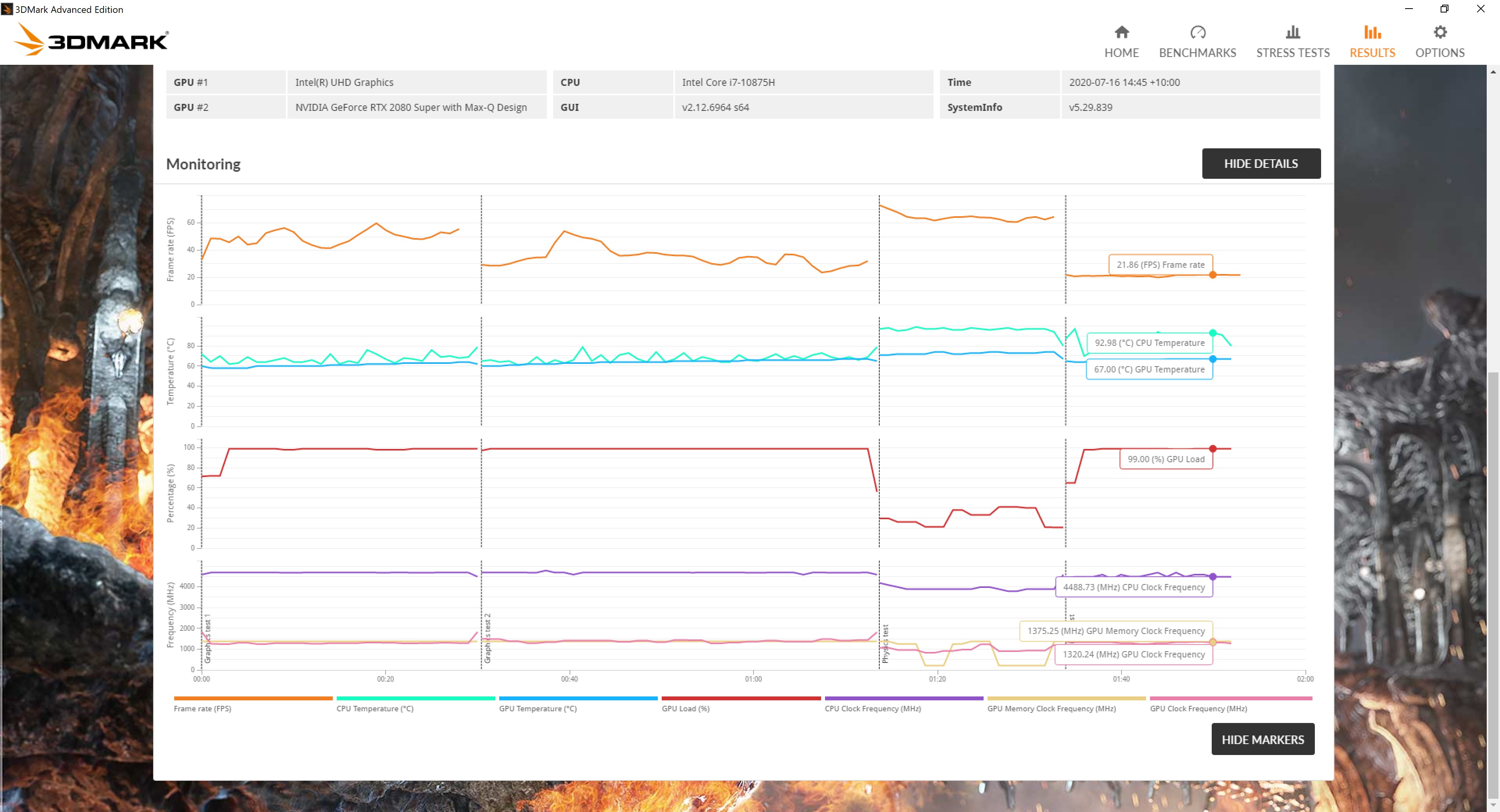
3DMark Fire Strike Ultra : 4,781
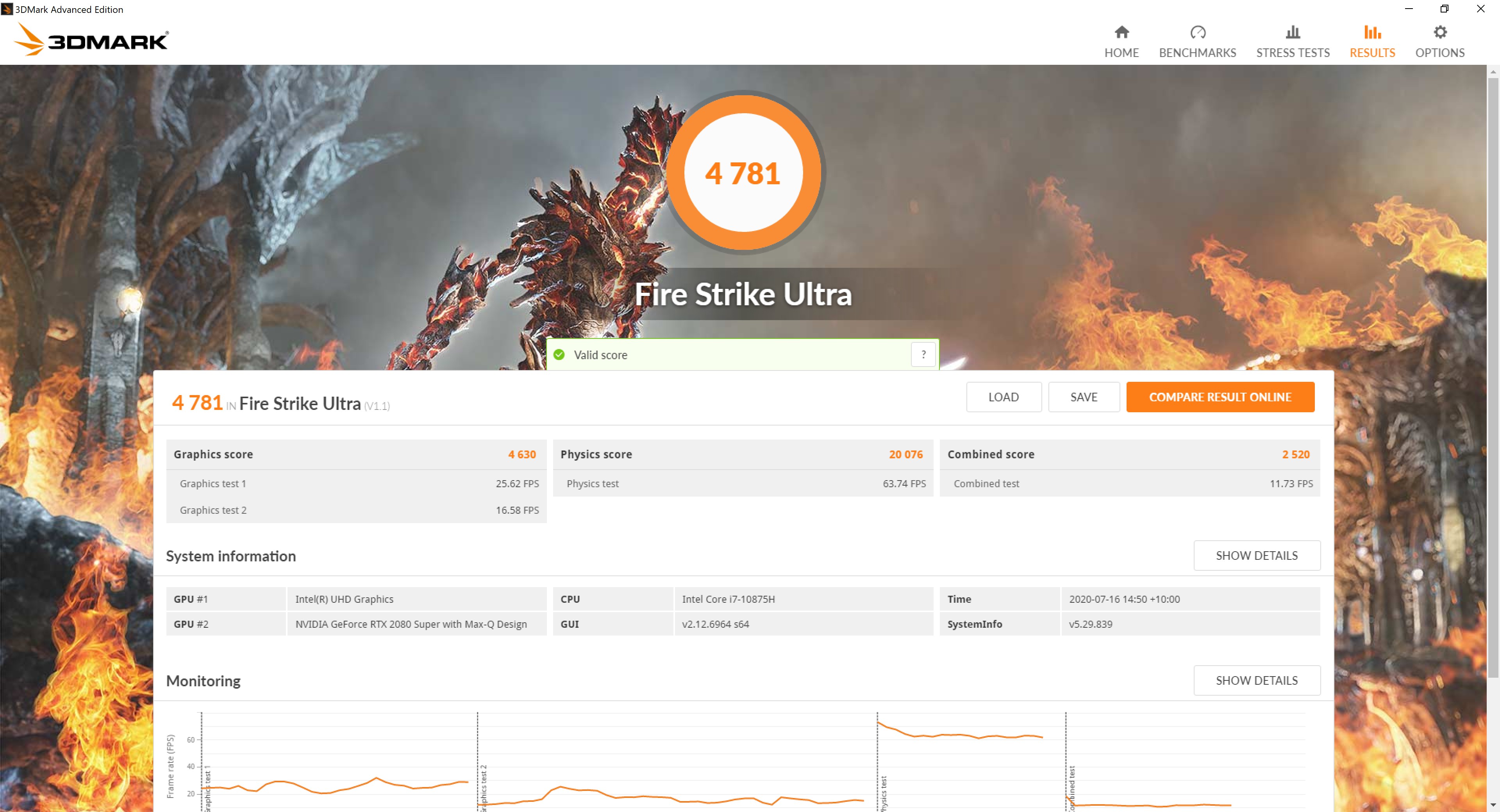
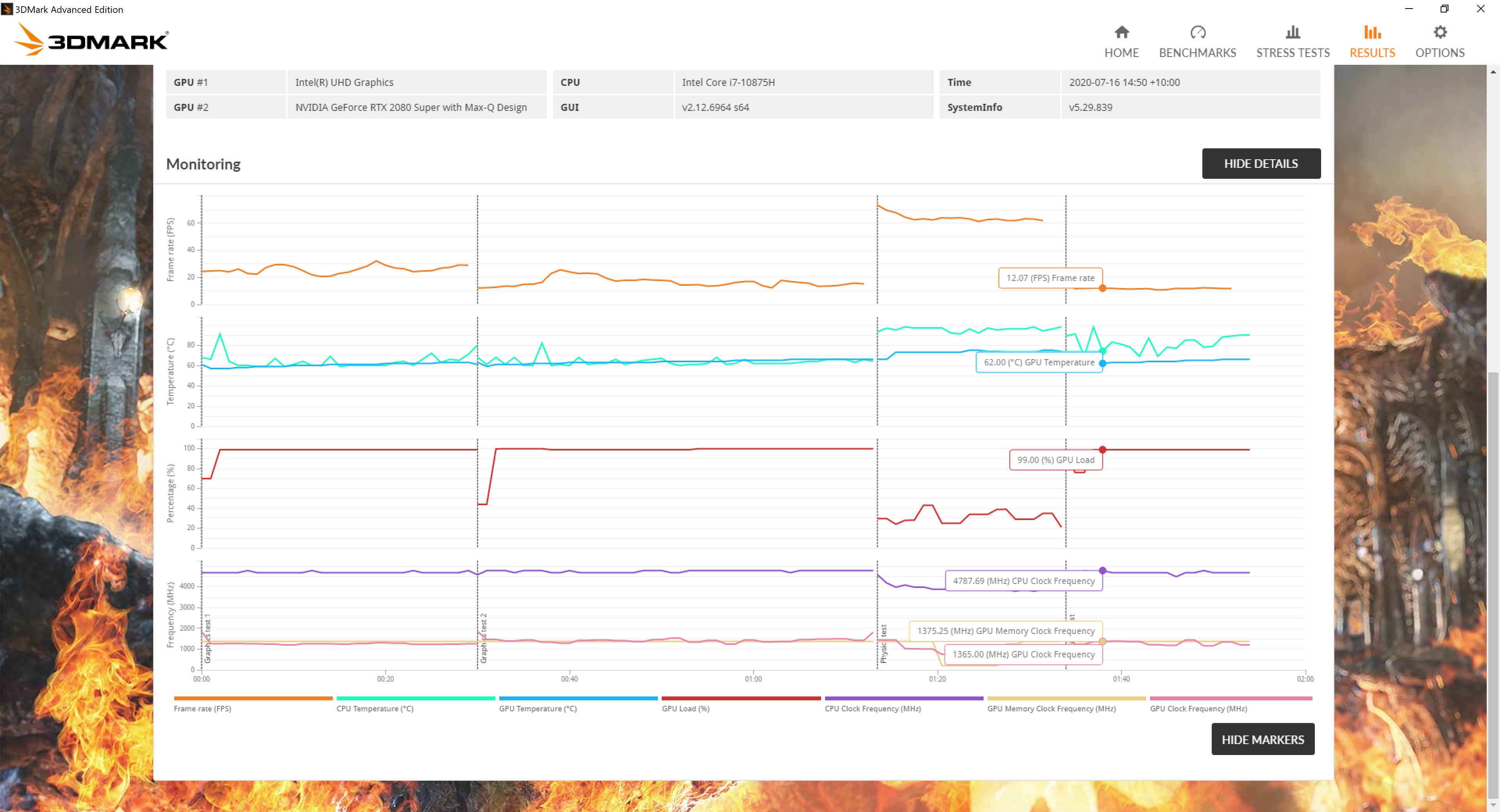
3DMark Fire Sky Diver : 37,507
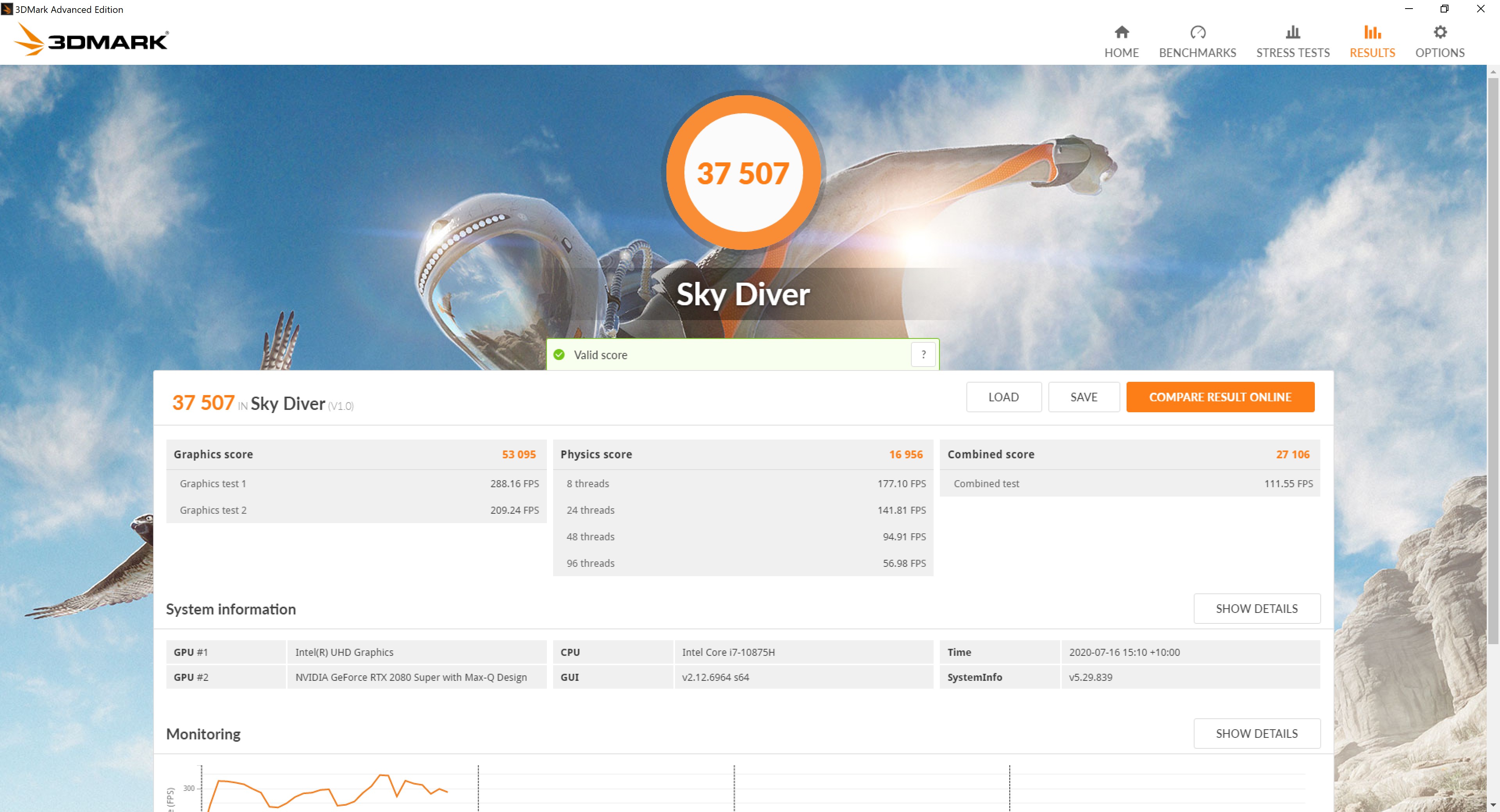
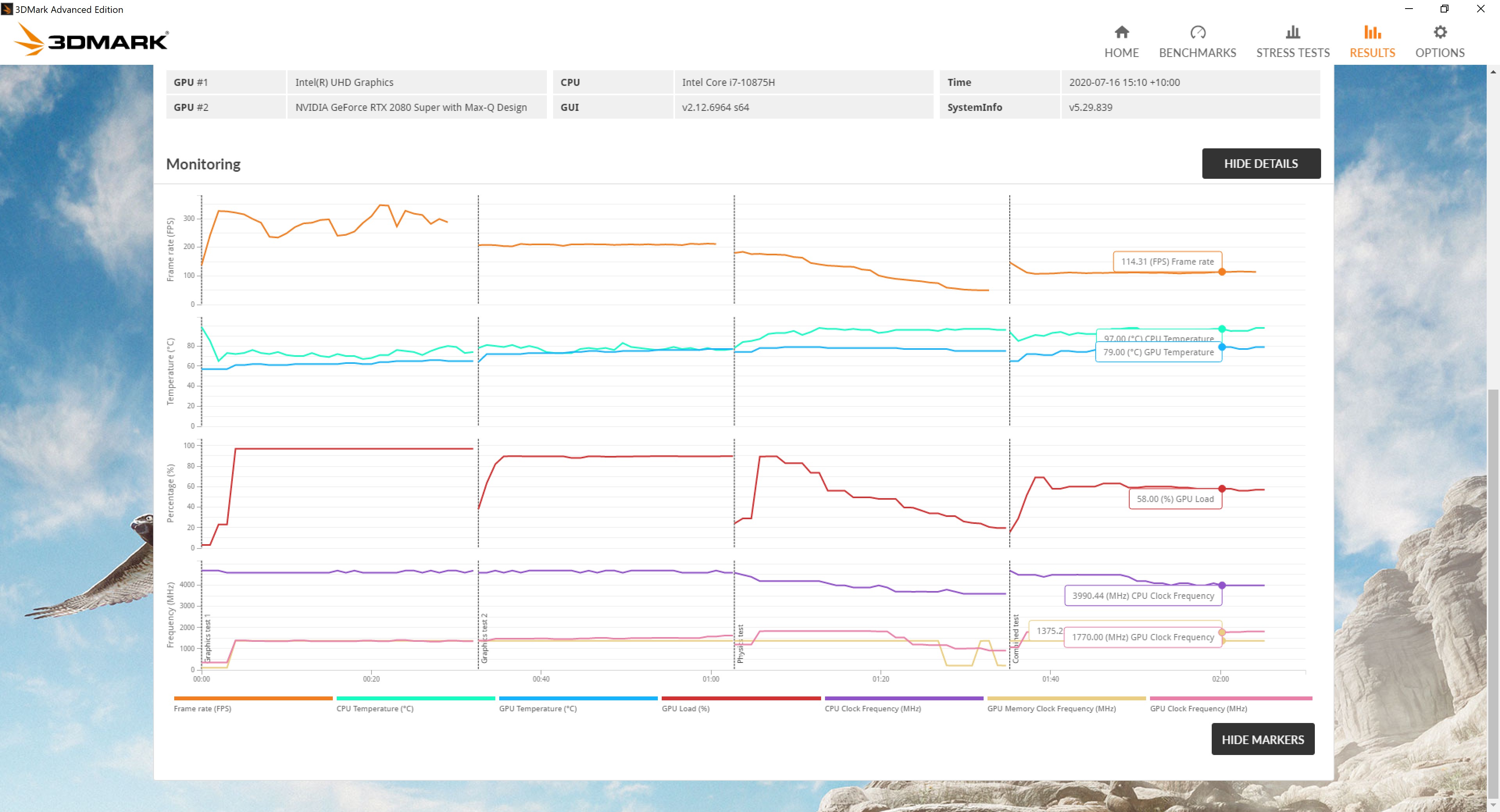
3DMark VRS: OFF – 228.03FPS, ON – 225.52FPS, Performance Gain – -1.1%

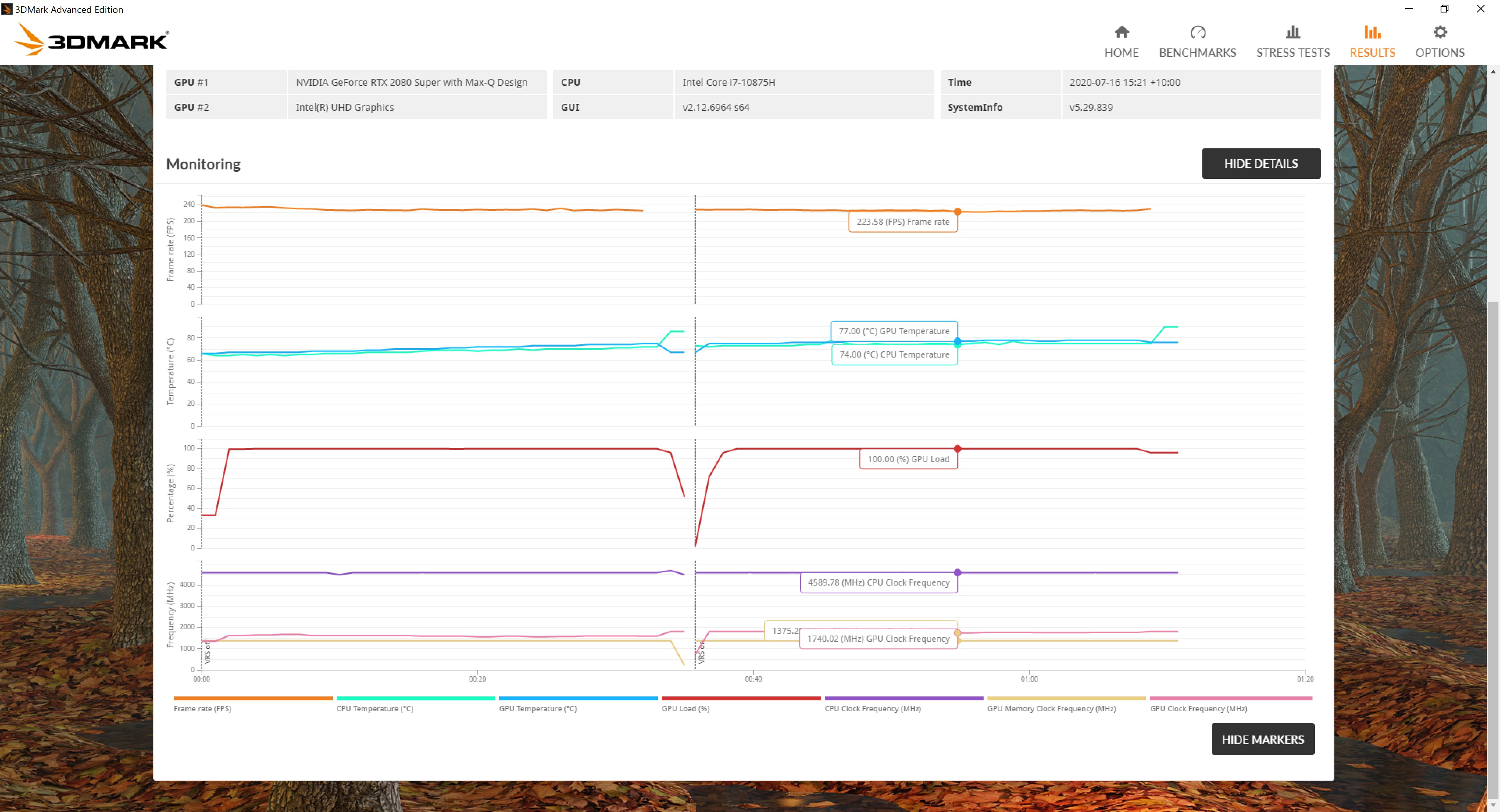
3DMark DLSS : OFF – 21.18FPS, ON – 30.55FPS


Workstation Benchmark
VRAY Benchmark

SPECviewperf 13 – The overall results

Gaming Benchmark
The Creator 17 equipped with RTX 2080 Super Max-Q graphics card is undoubtedly a gaming dominator. We will not test further detailed benchmarks except some most popular games.
Thermal Tests
We are pressure testing this workstation by using AIDA64.
Test room temperature : 20℃±2℃
CPU Idle temperature : 52℃±2℃
GPU idle temperature : 49℃
Under AIDA64 Single FPU pressure test, this Intel i7-10875H is running normally
Under AIDA64 CPU & GPU pressure test, the Intel i7-10875H is throttling down around 14%
The CPU package temperature is around 95℃±2℃, GPU temperature is around 84℃±2℃

We are satisfied with the whole cooling system for MSI Creator 17, not to mention the noise problem, this 7 heat pipe cooling system can suppress RTX 2080 Super Max-Q and Intel 10875H
The thermal snapshots under PRIME95 pressure test
Front – Top of the C panel
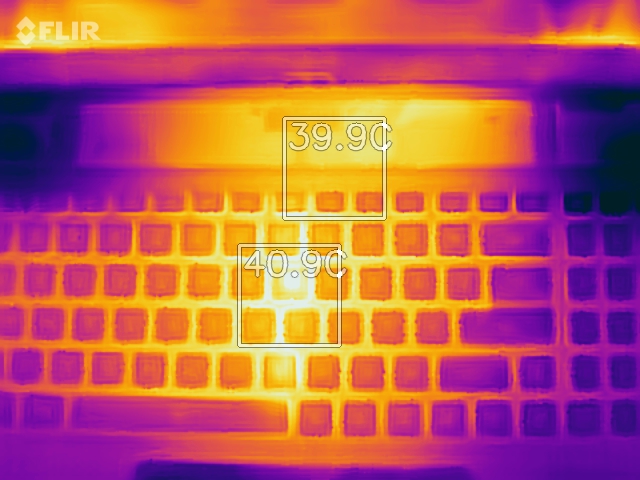
Rear – Left and Right vent temperature
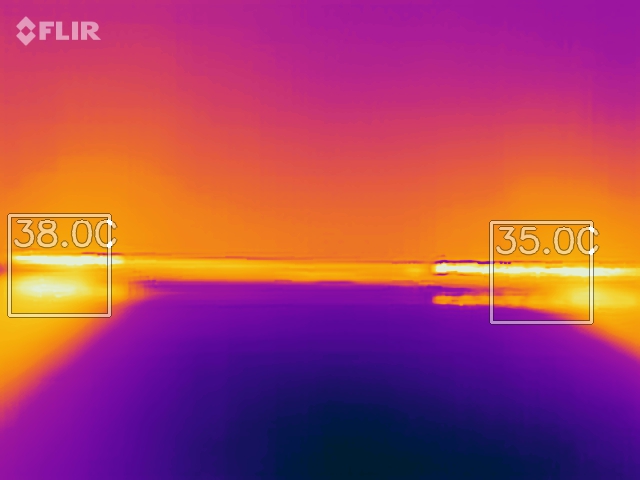
Noise Tests
This laptop is pretty noisy during full speed fan spinning. It’s about maximum 52dB(A), average around 48dB(A) when a full load, around 35dB(A) when idle. But luckily this load cooling system is cool and practical considering the powerful hardware.
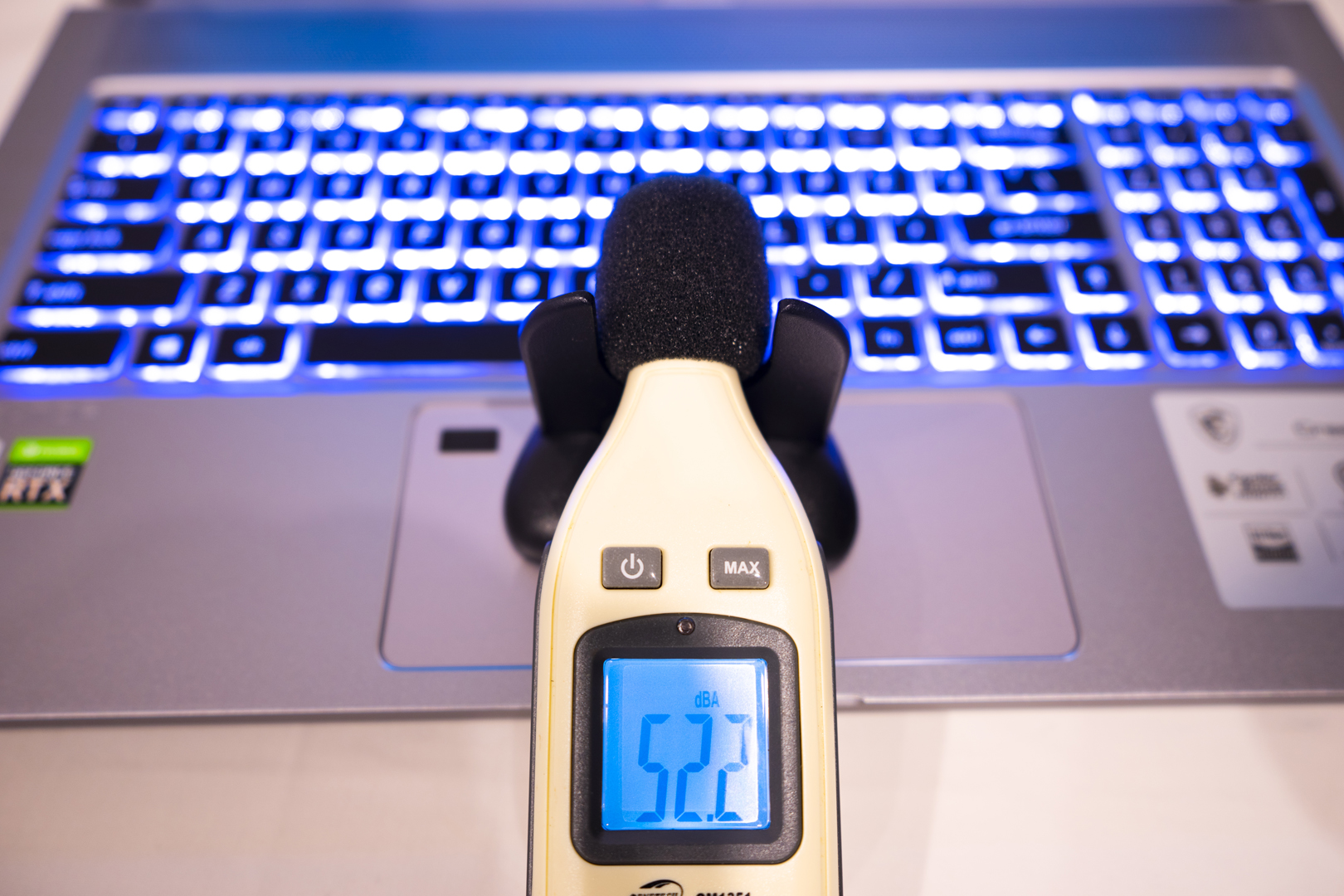
SUMMARY
As a designer’s laptop, MSI can proudly boast a machine that isn’t expensive or bulky. Designers always have stringent performance requirements; they need multi-core, large-sized memory, screens with extremely high colour accuracy, and so on. With the gradual update of the chip design process today, laptops can already handle some complex jobs that were impossible before–with the emergence of multi-core low-power processors and Max-Q version GPUs. Intel and NVIDIA invited this concept, and the manufacturers actively cooperated. At present, users can fully enjoy the smooth experience of “workstation” on a laptop.
MSI Creator 17 has the most advanced hardware configuration at present. Not only that, but this Mini-LED screen that supports multiple colour spaces is also basically the most advanced screen at present. It is not only suitable for 3D design but also photo and video editing. Because of its powerful specs and equipped with the top-level RTX 2080S Max-Q, the gaming performance is also outstanding. It is also extremely lightweight, making this 17-inch laptop only 2.38KG, and the silver-tone will not appear obtrusive on any occasion.
At present, the top configuration price of this Creator 17 is price–AU$6,899, extremely high. Advanced technology has just been launched, and it needs the cost support. Only when technology becomes popularised, the price will slowly drop. Therefore, this laptop is not an ordinary product that people will consider.
EPIC REWARD: EPIC RECOMMENDED,EXTREME POWER
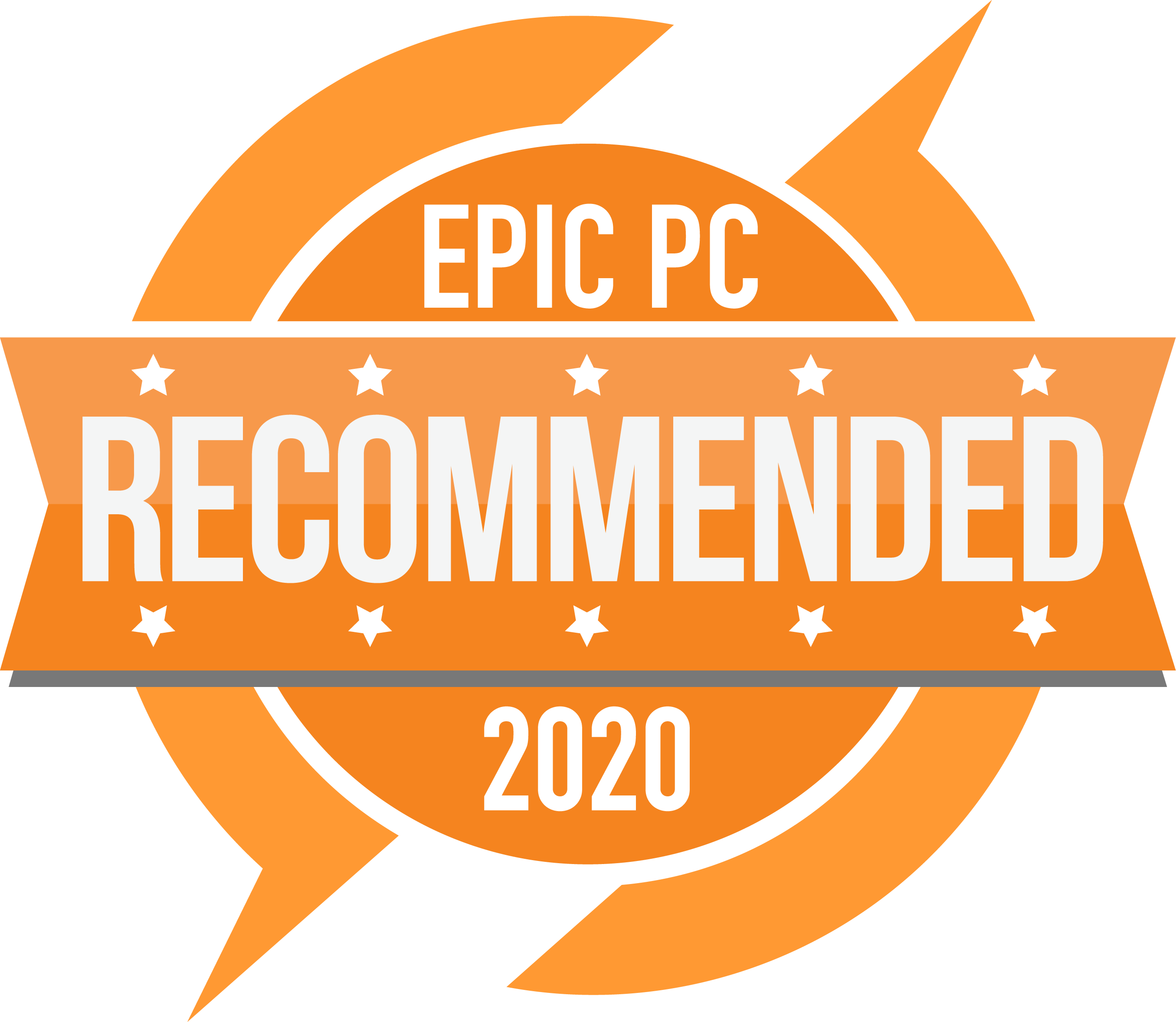
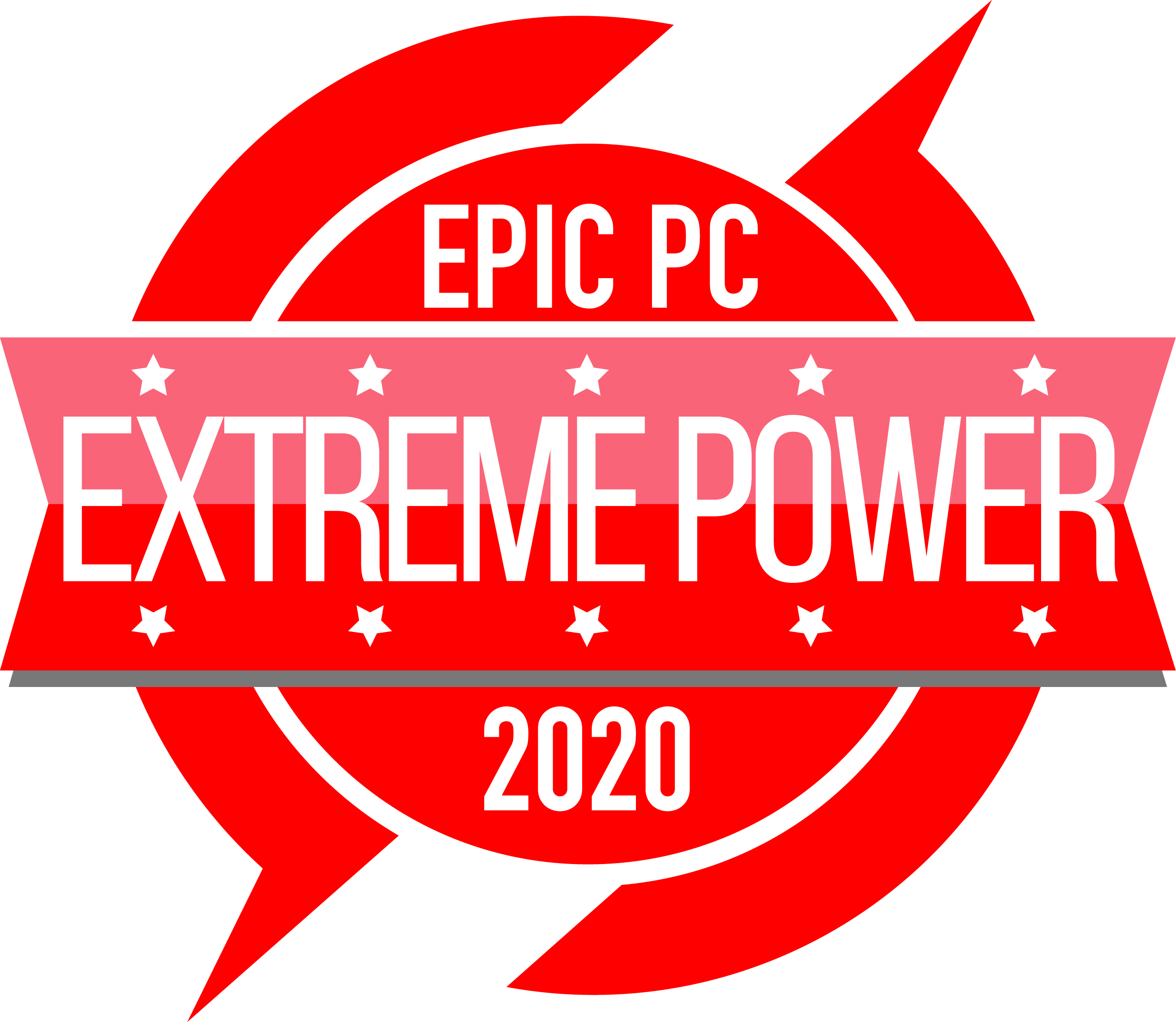
MSI Creator 17 10TK OFFICIAL WEBSITE: HERE




